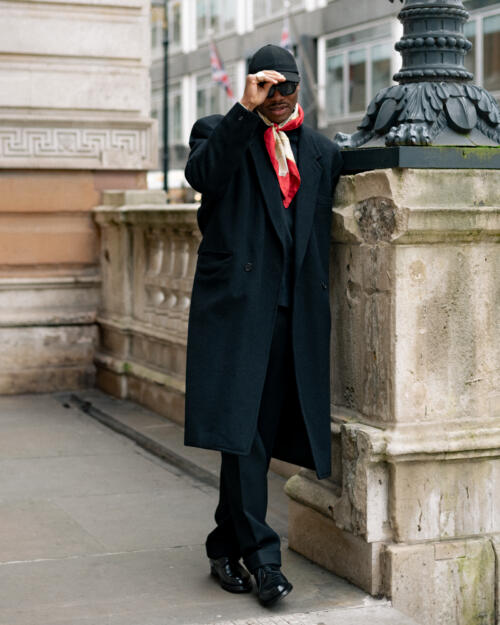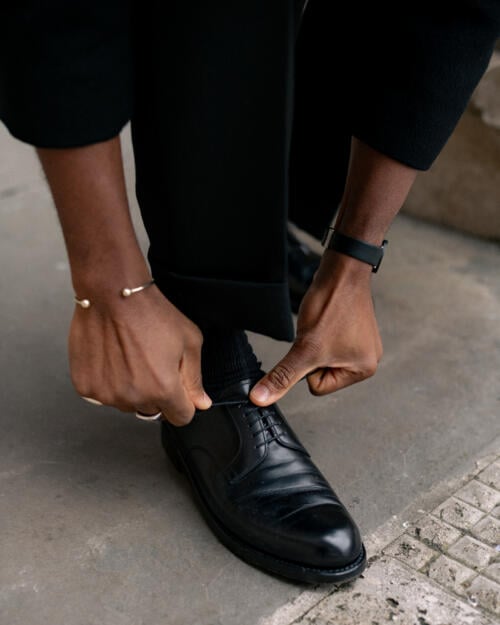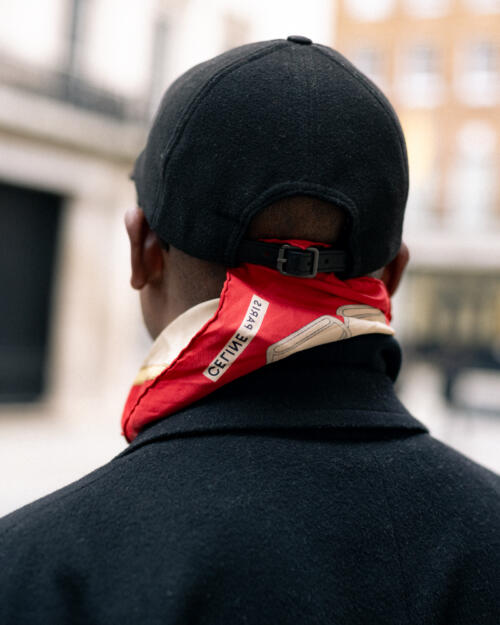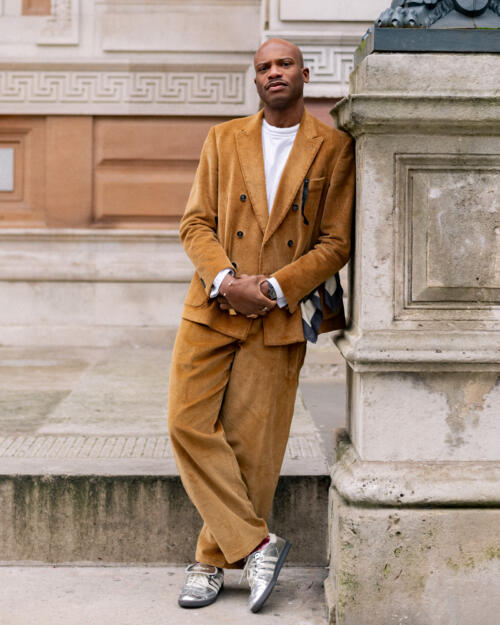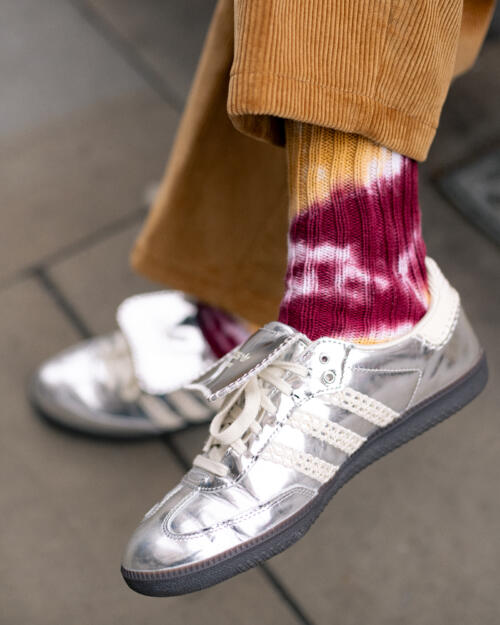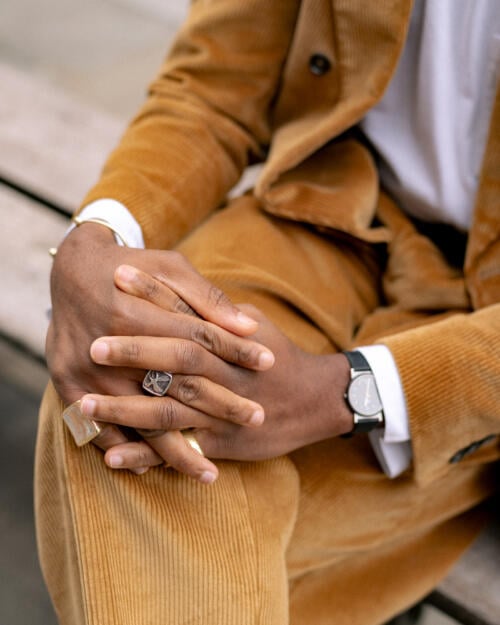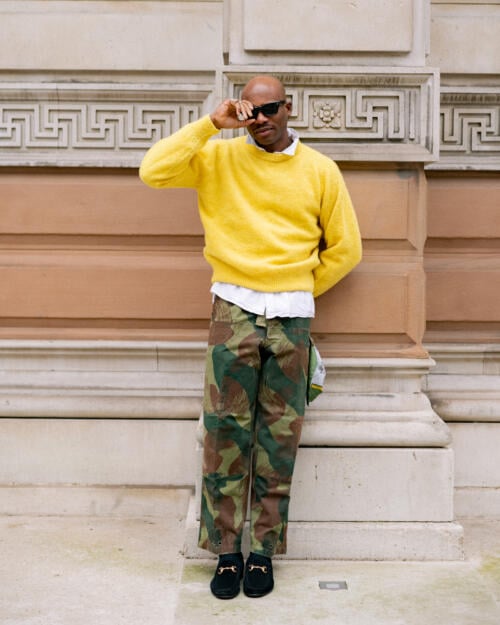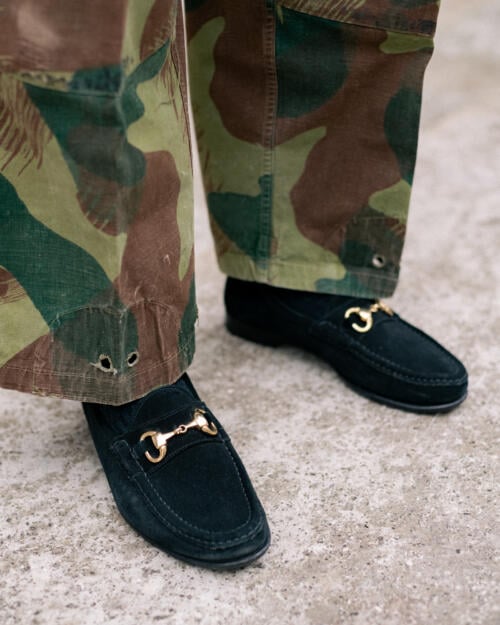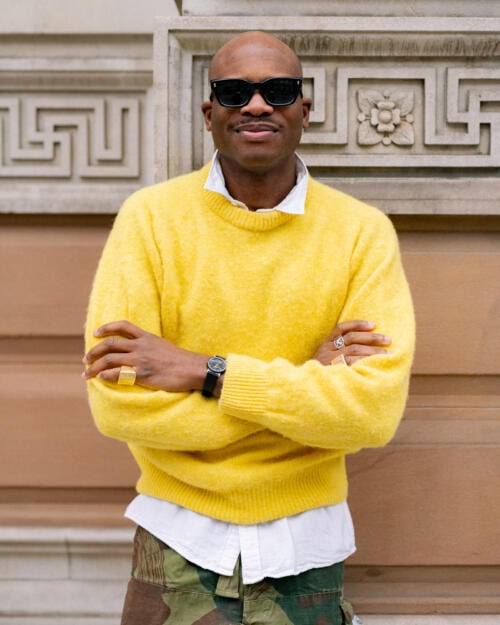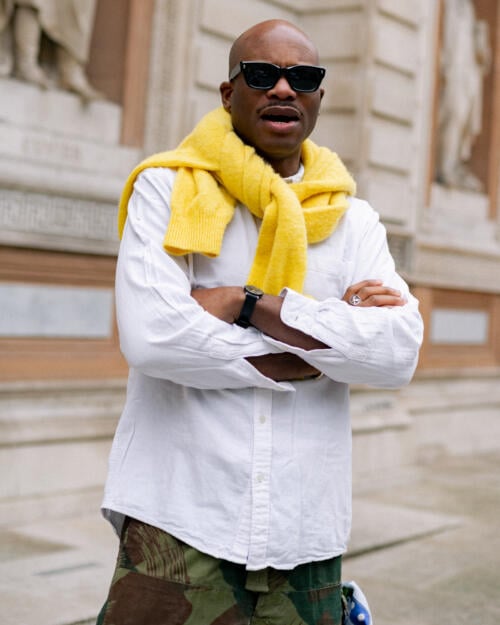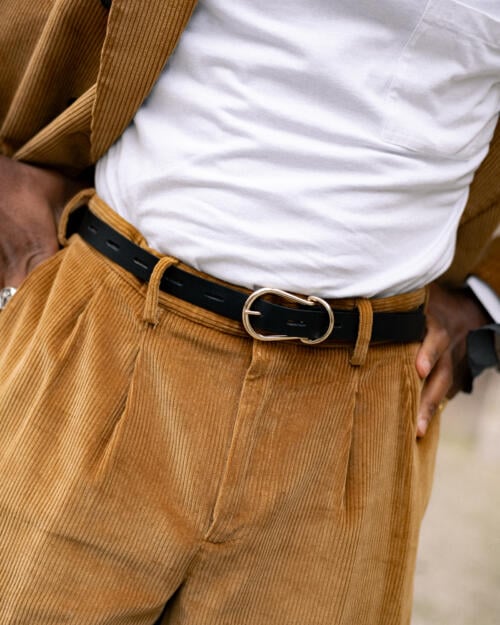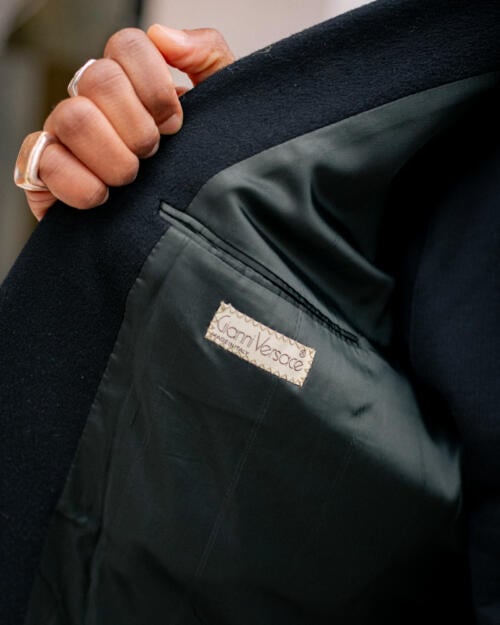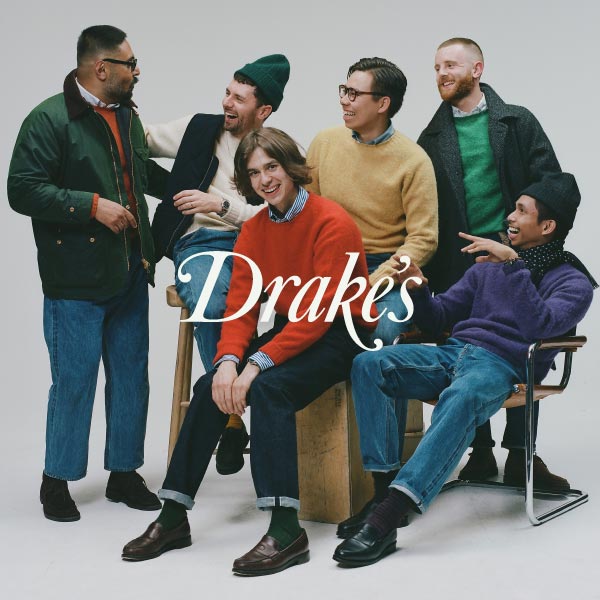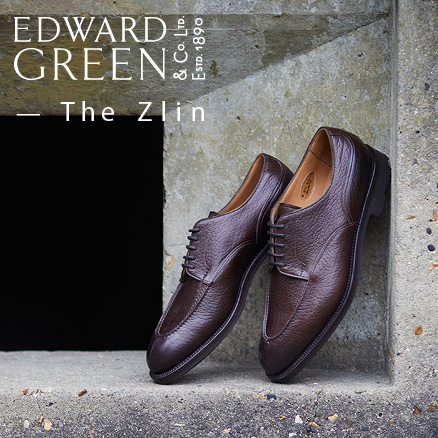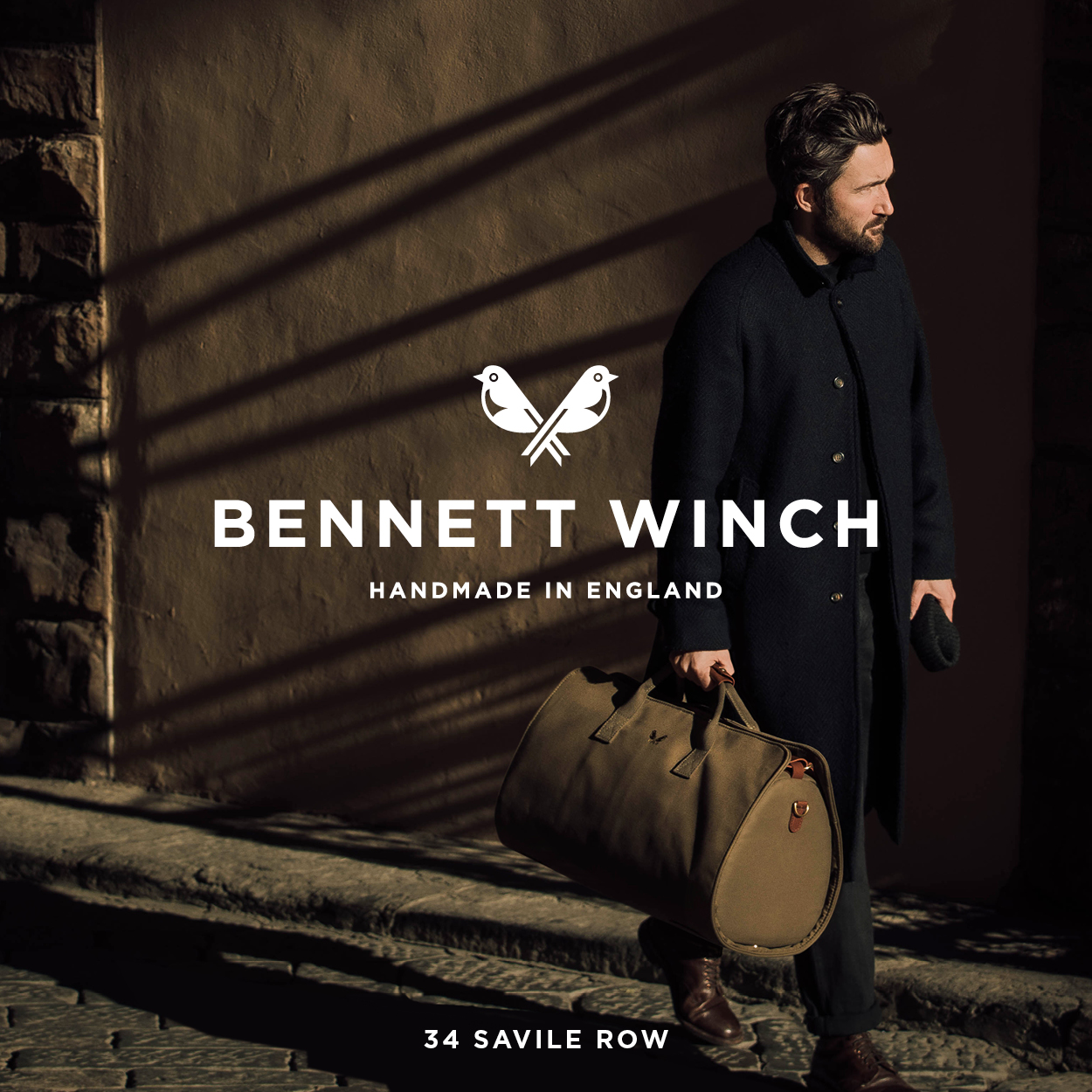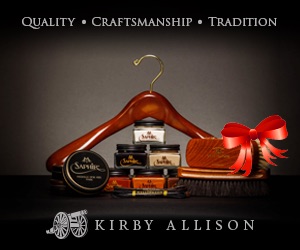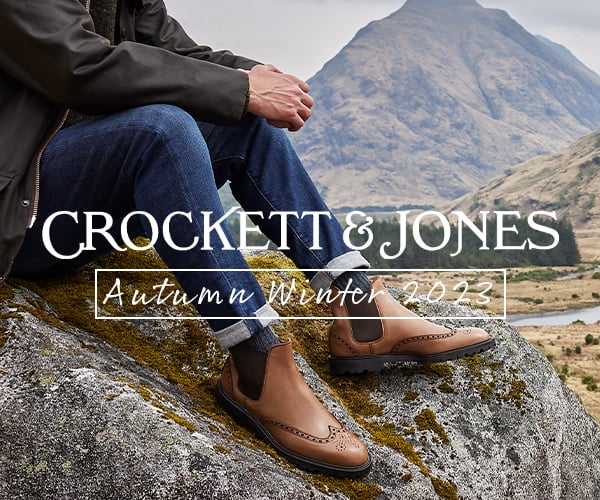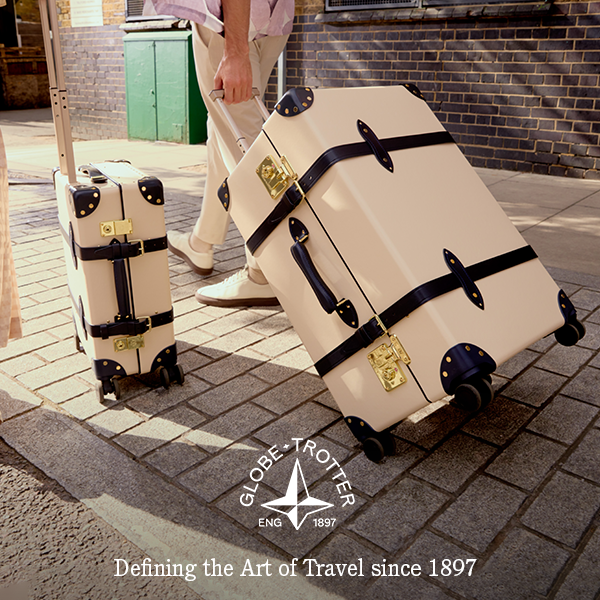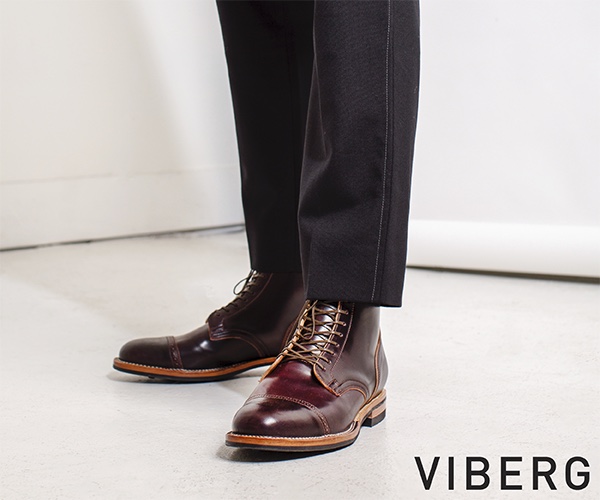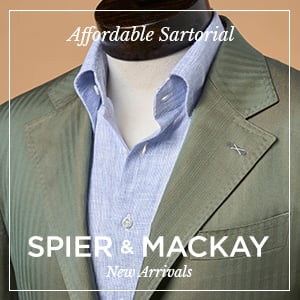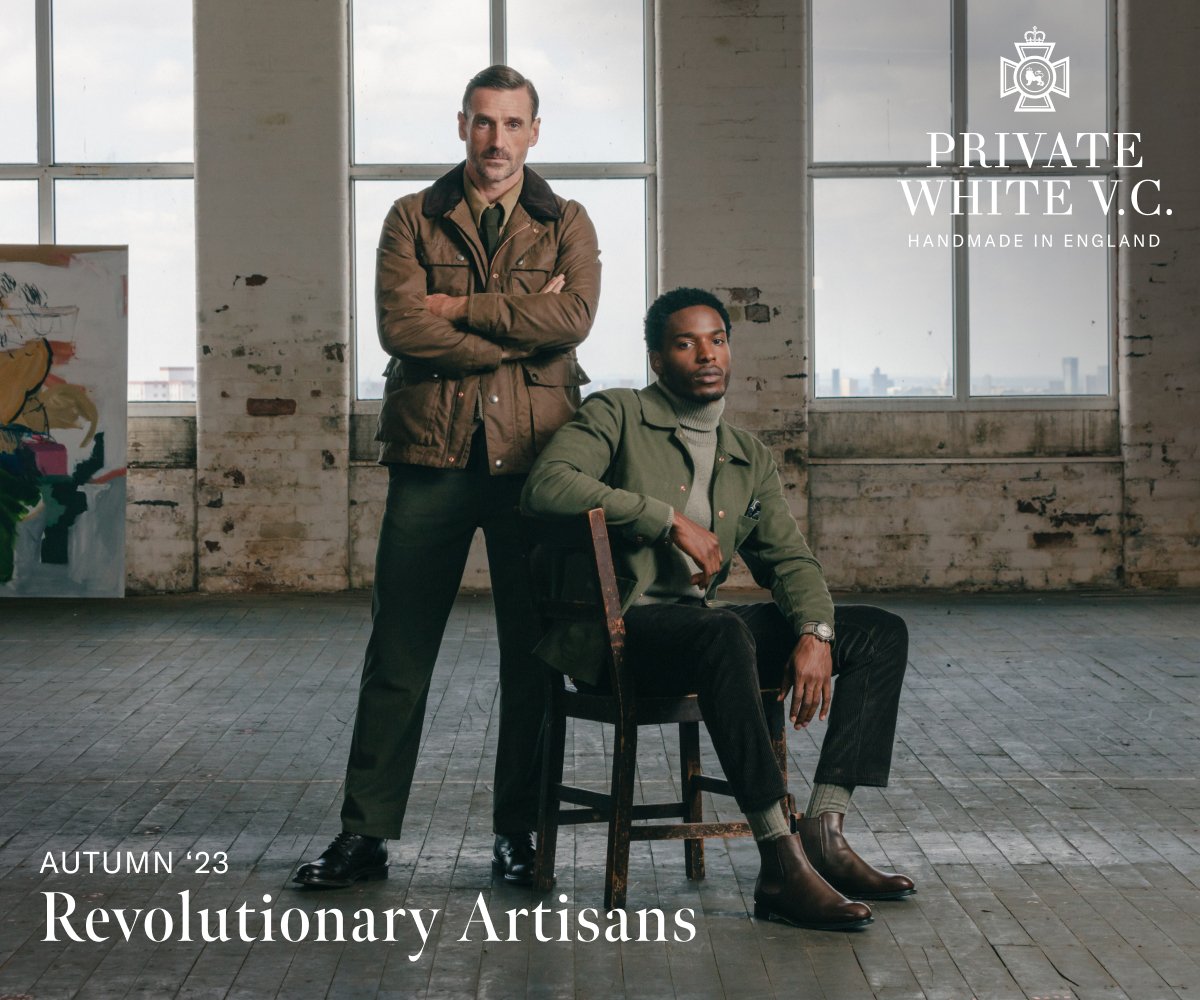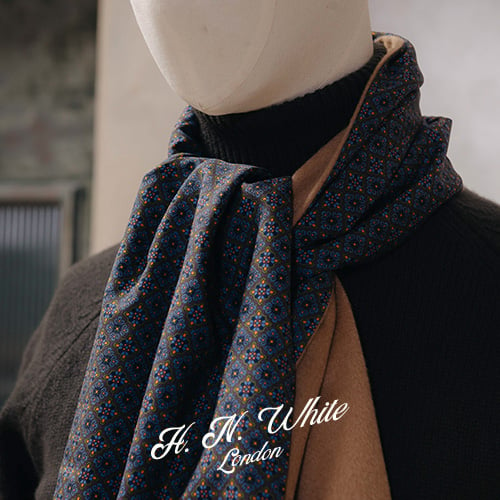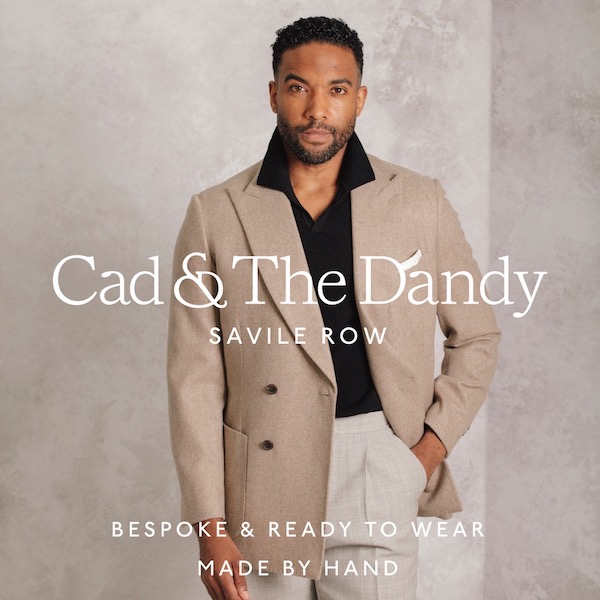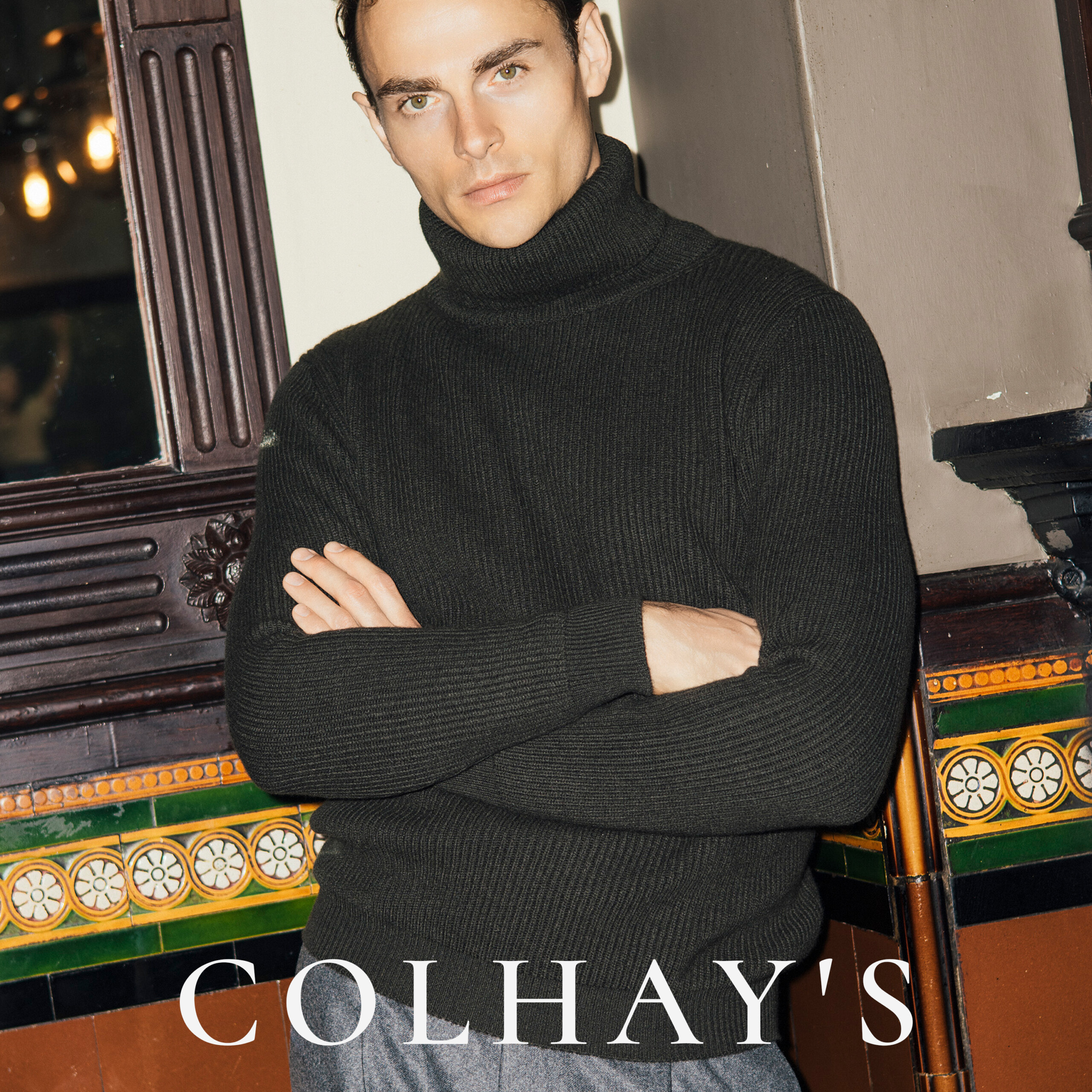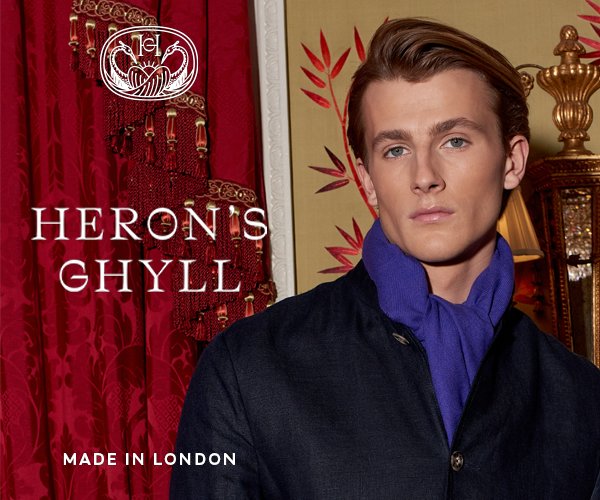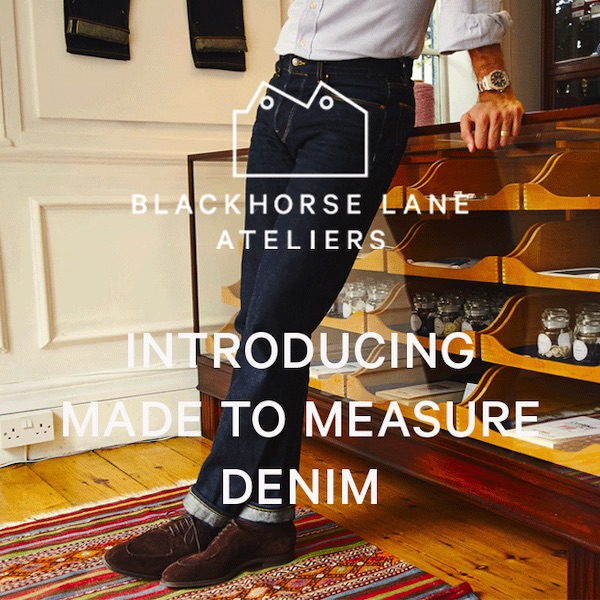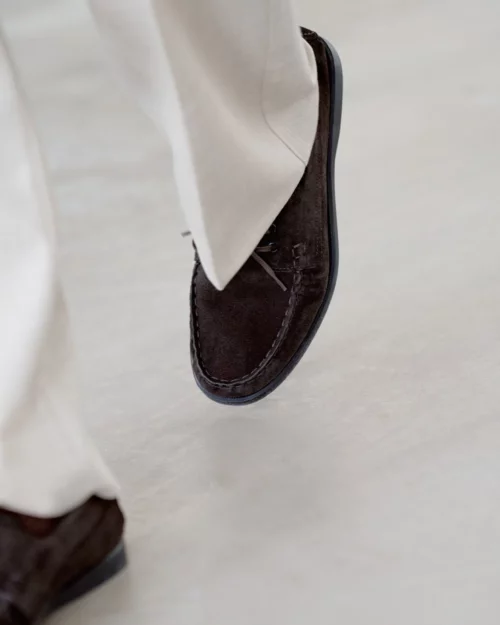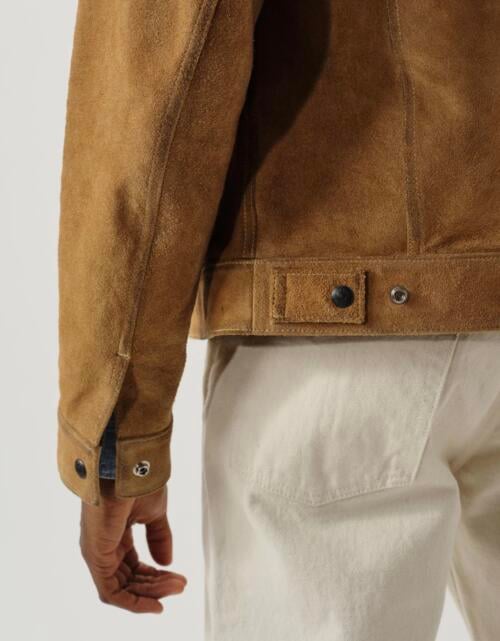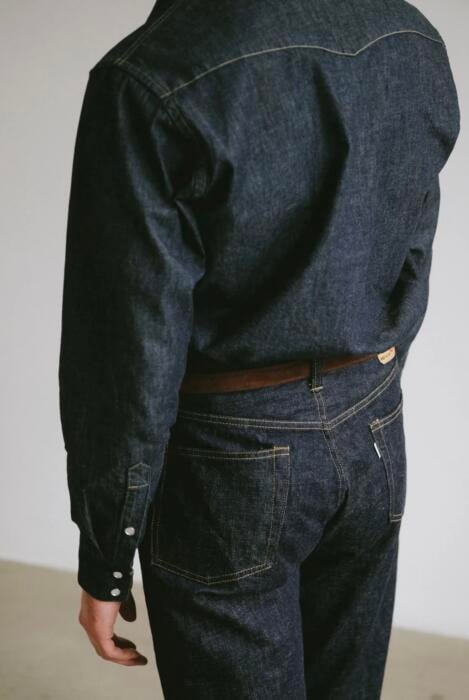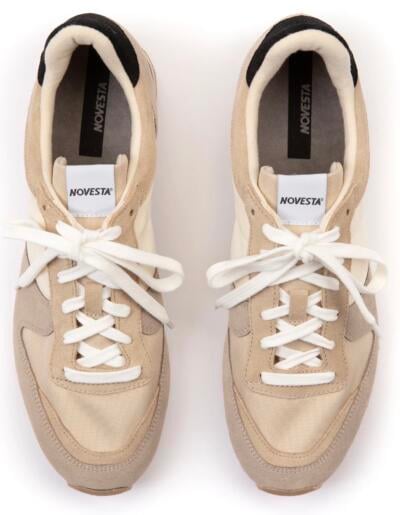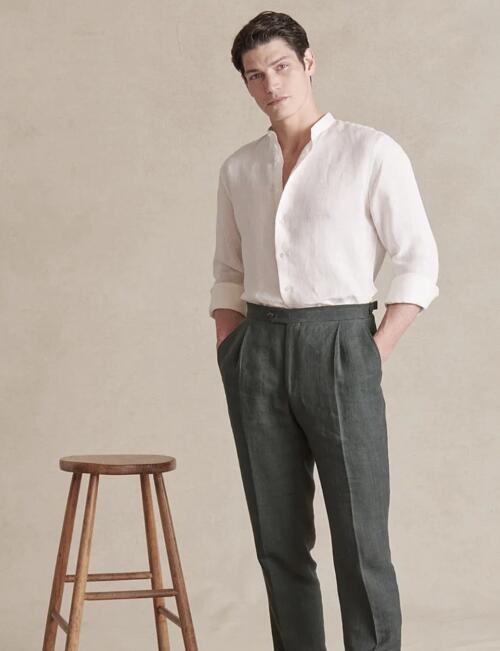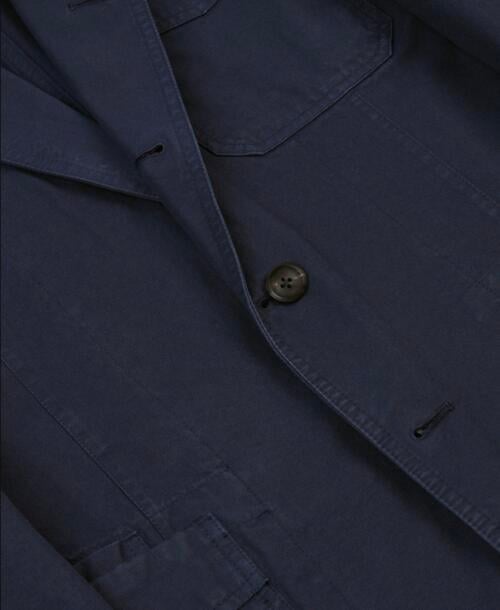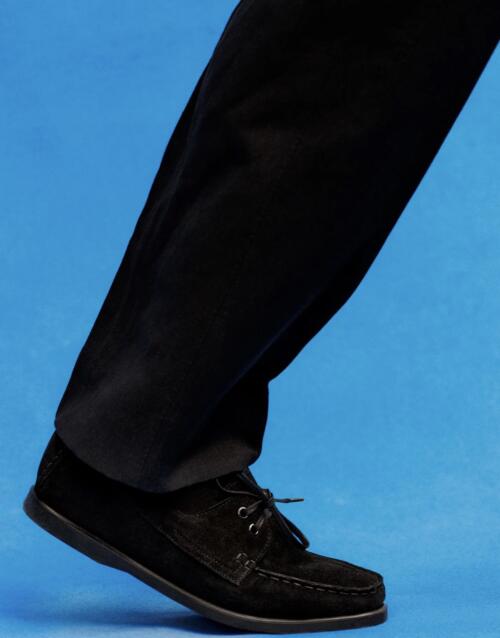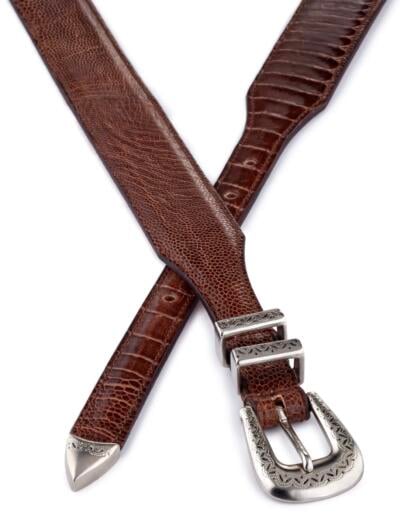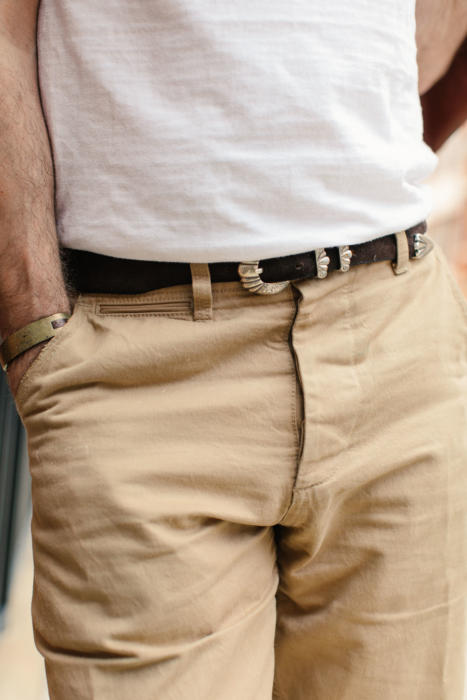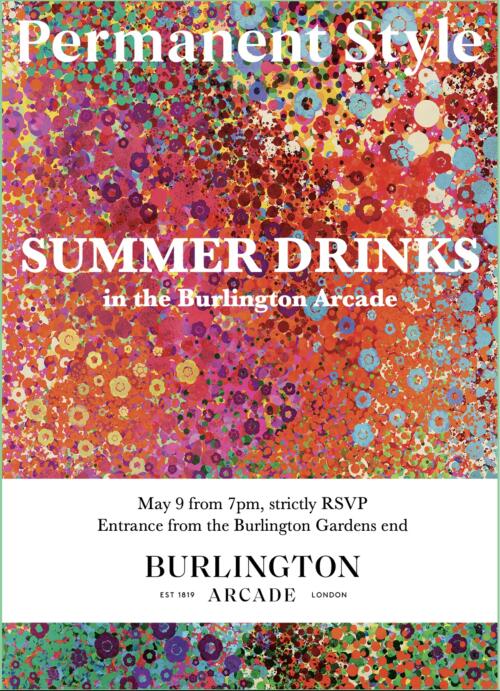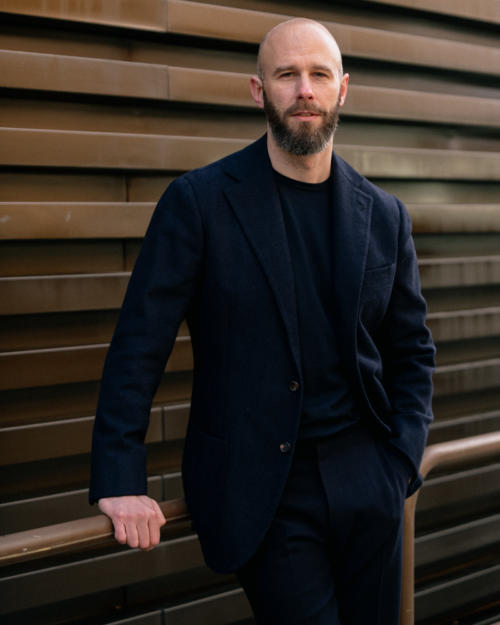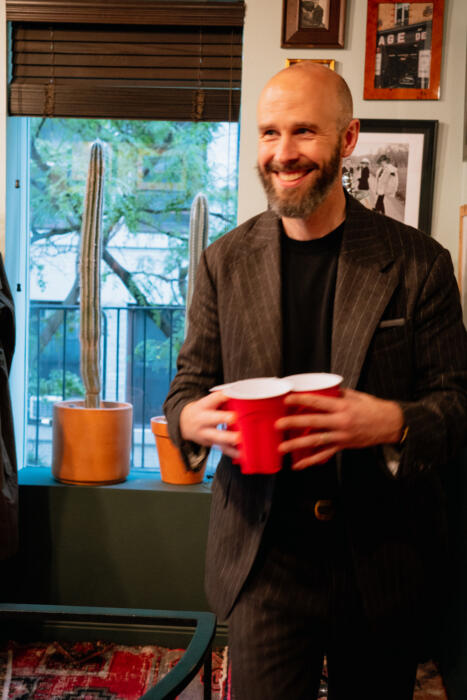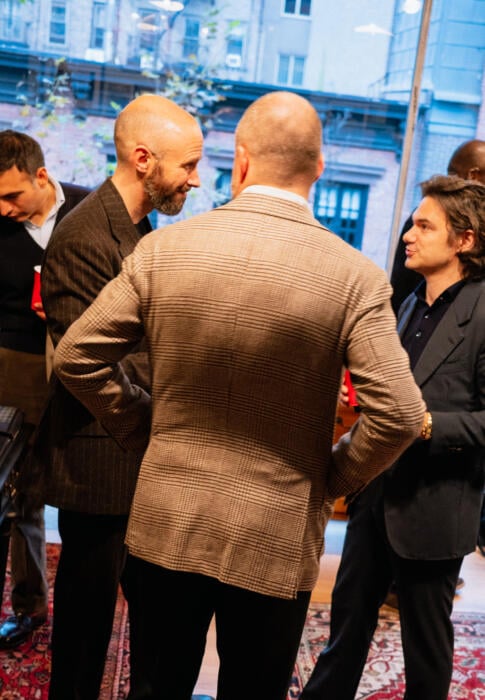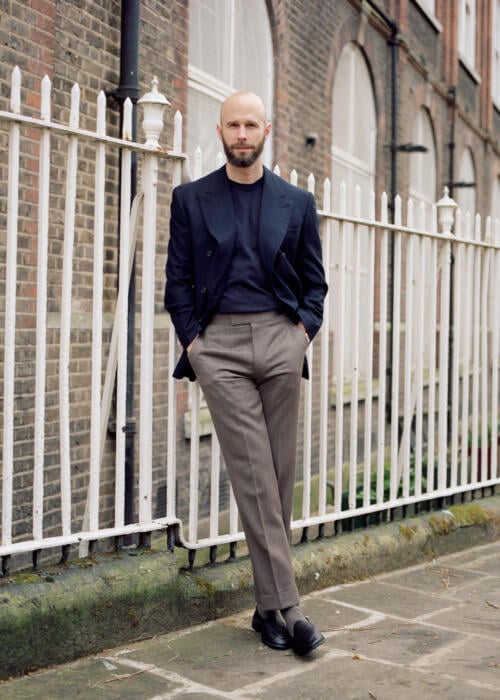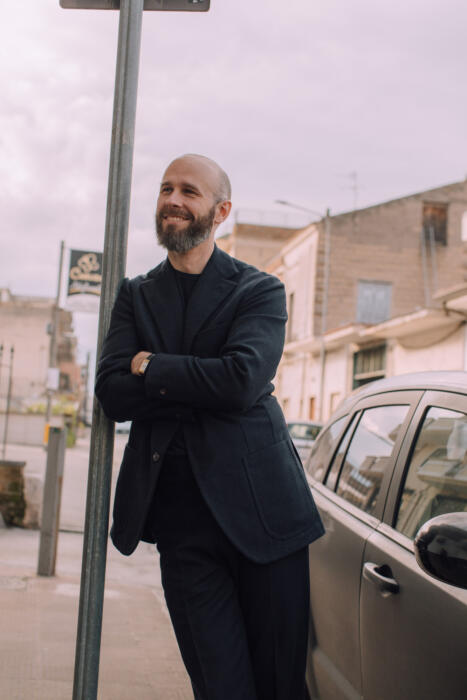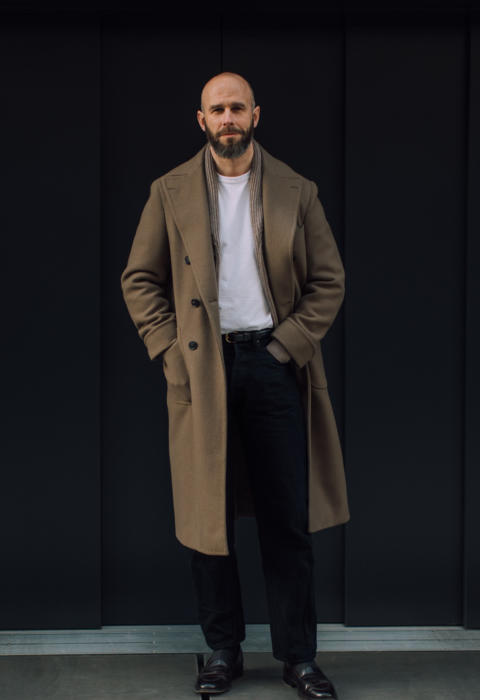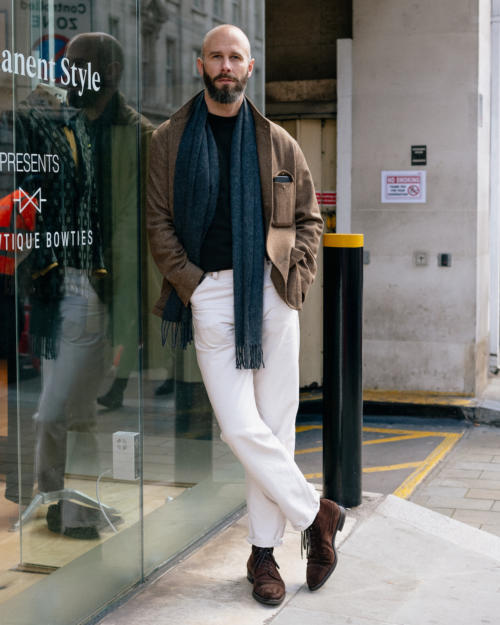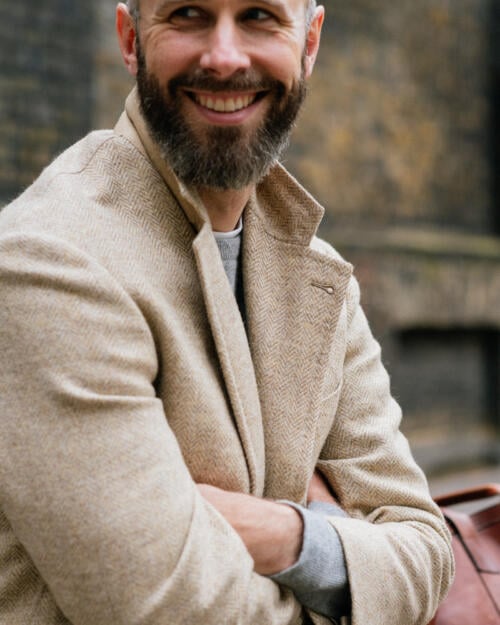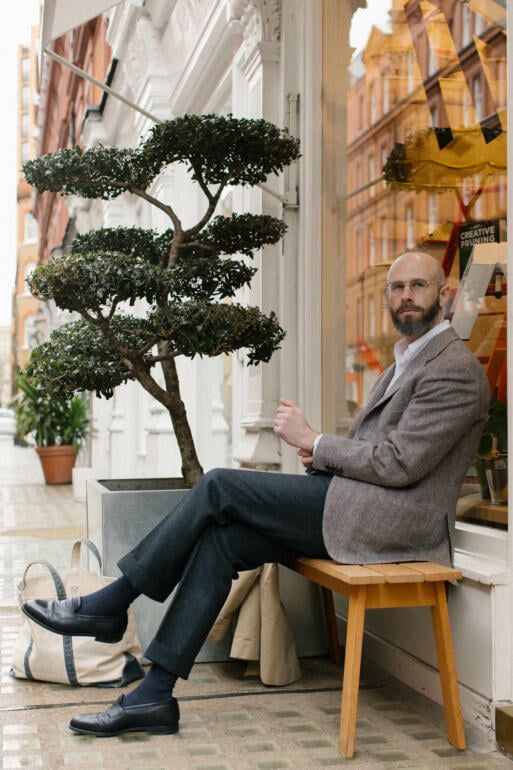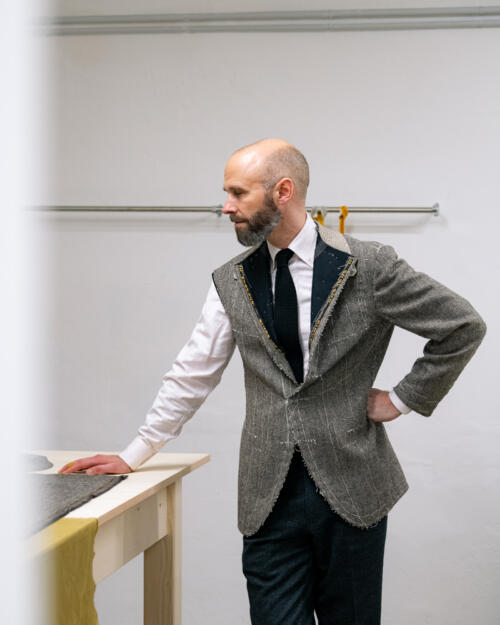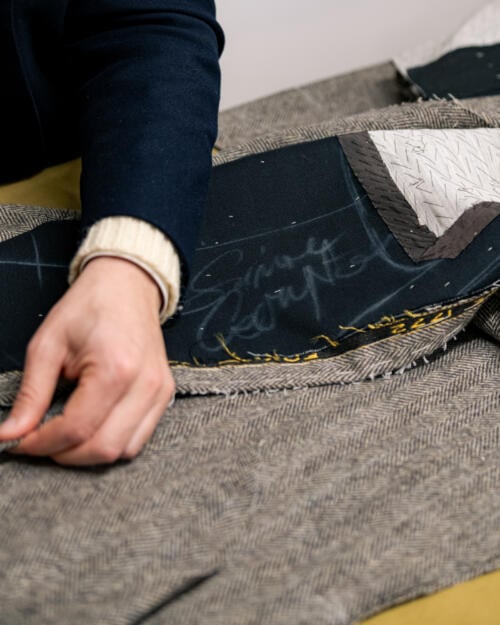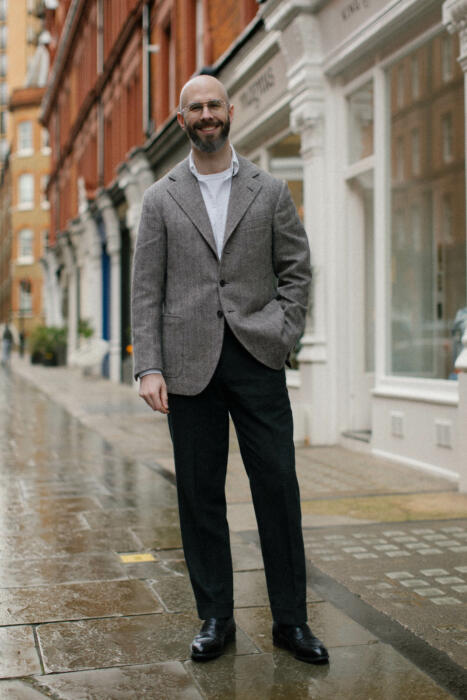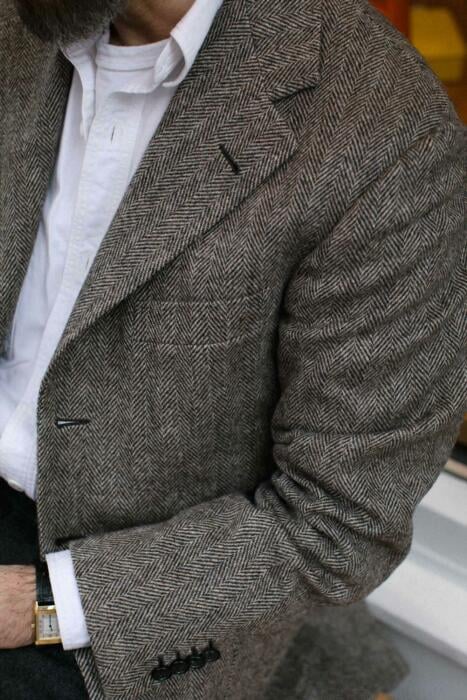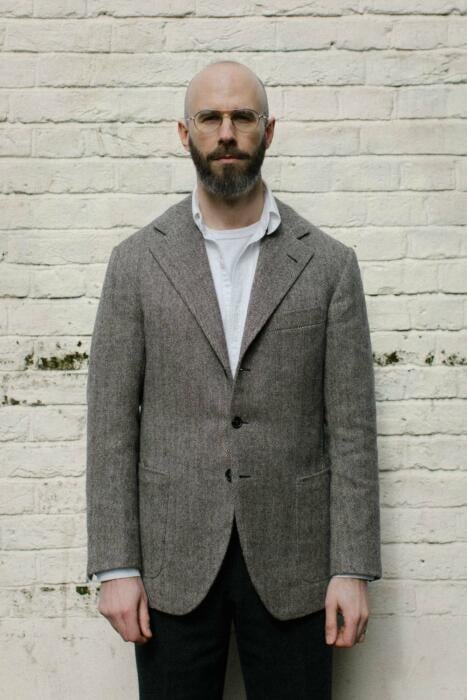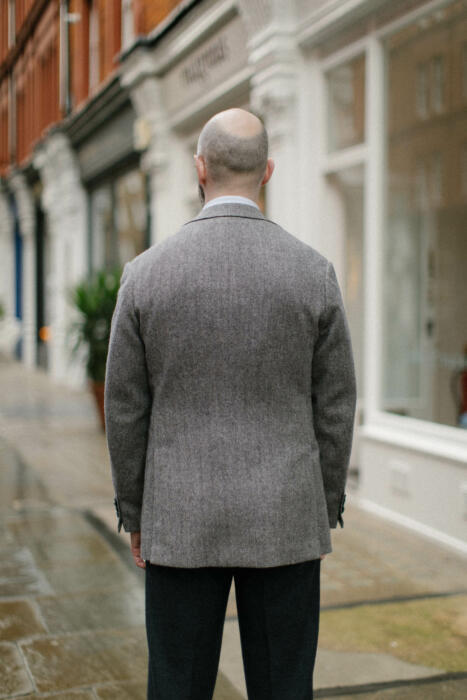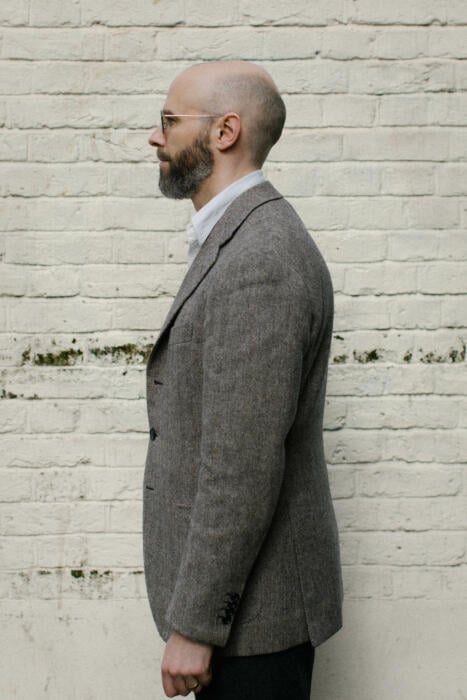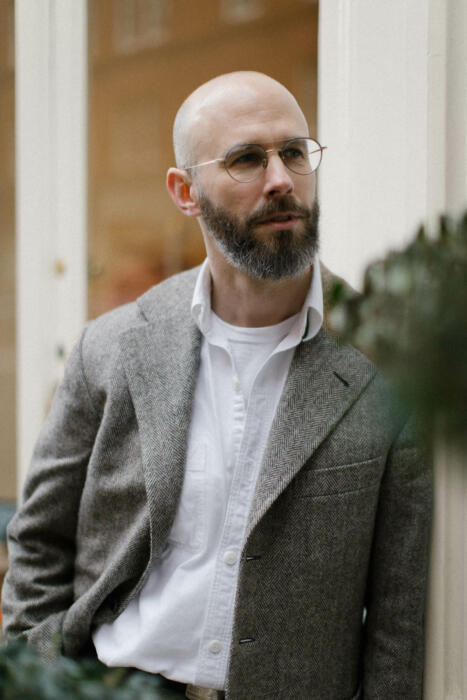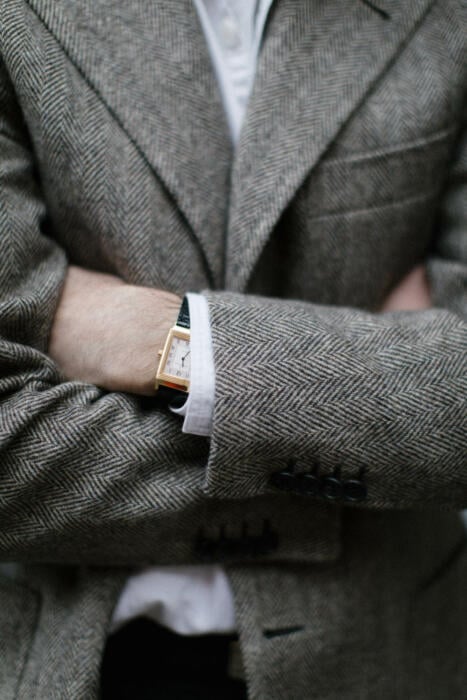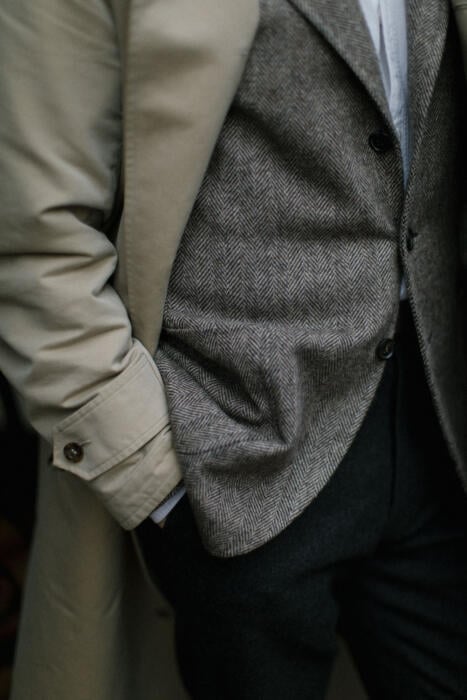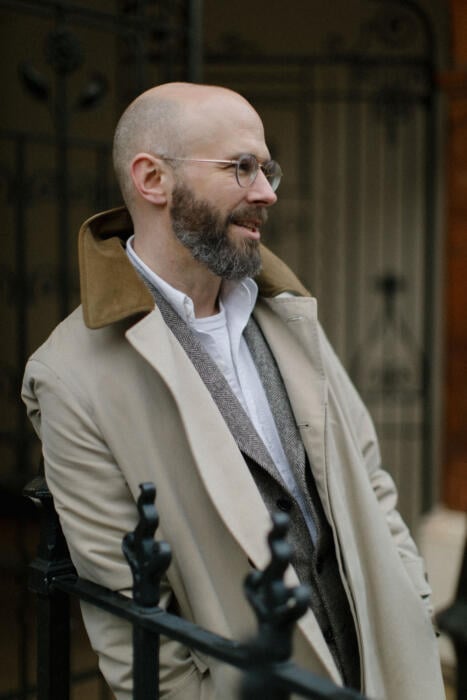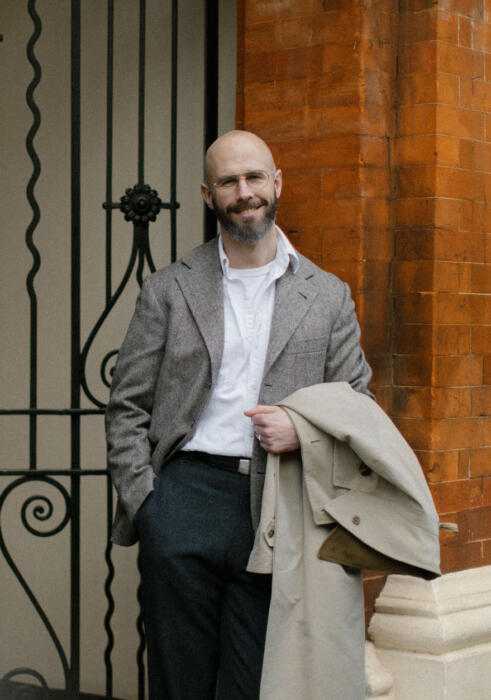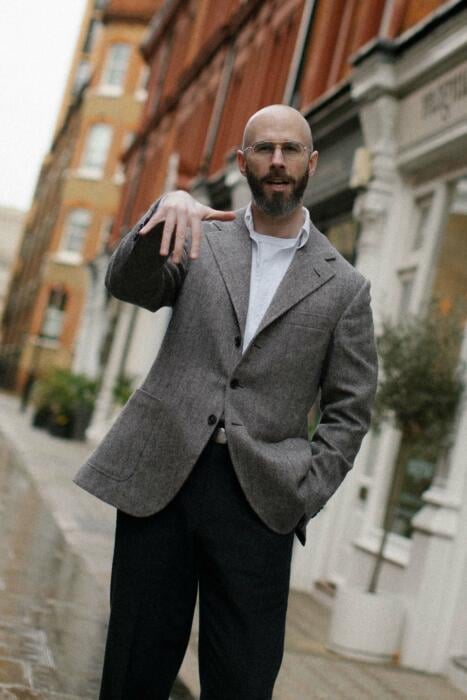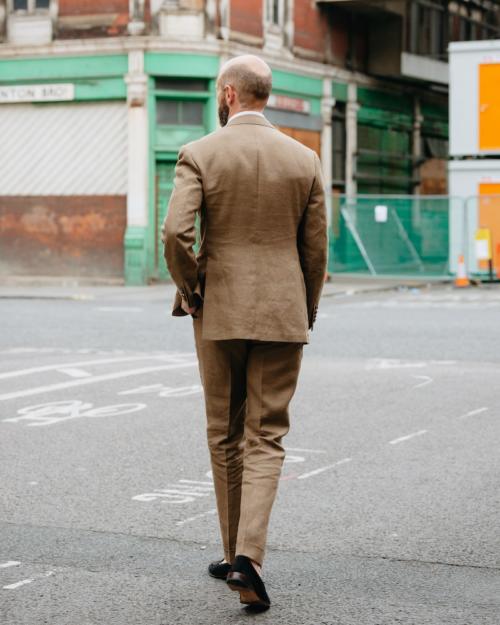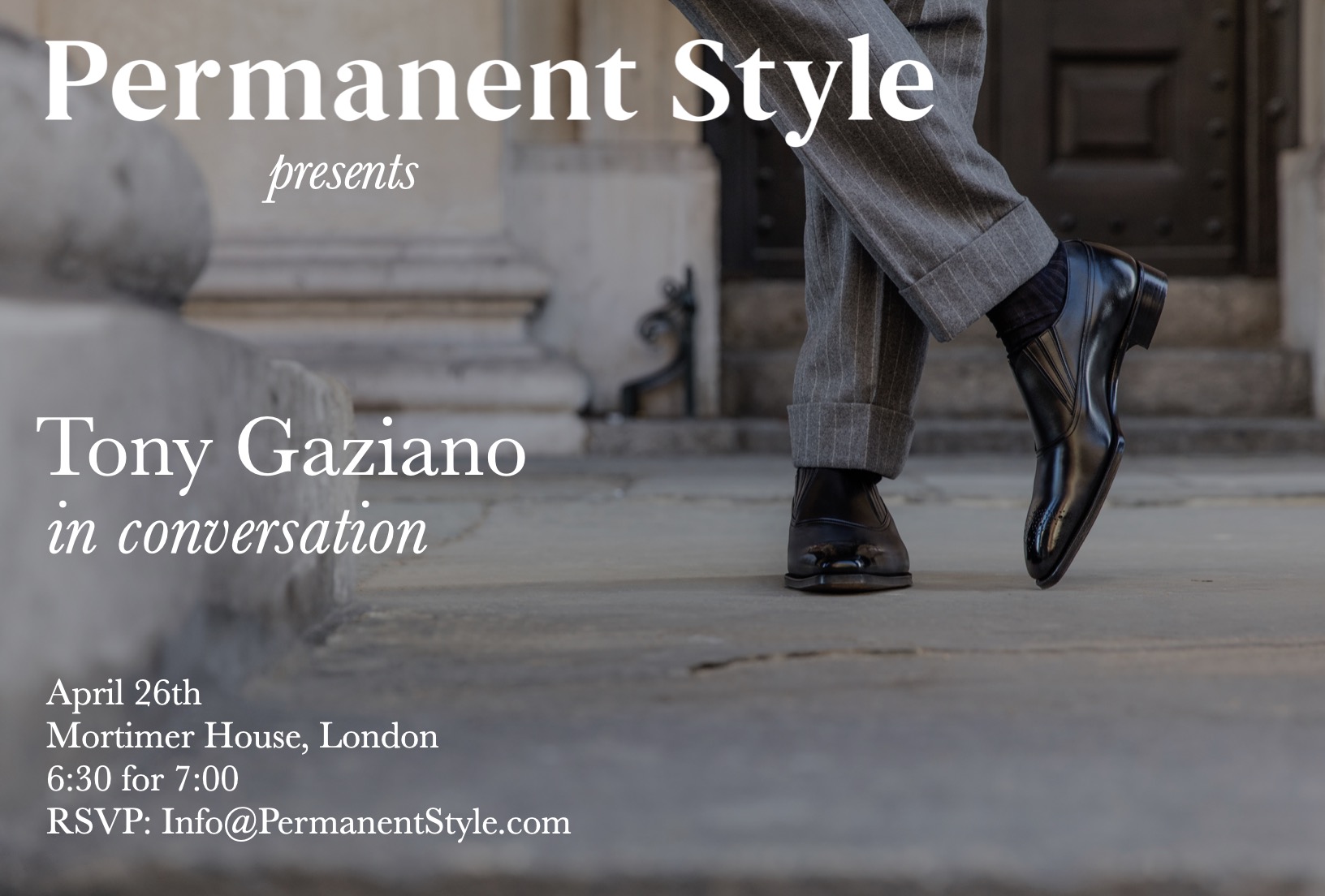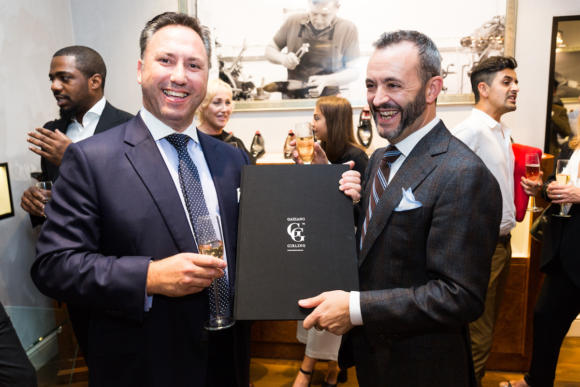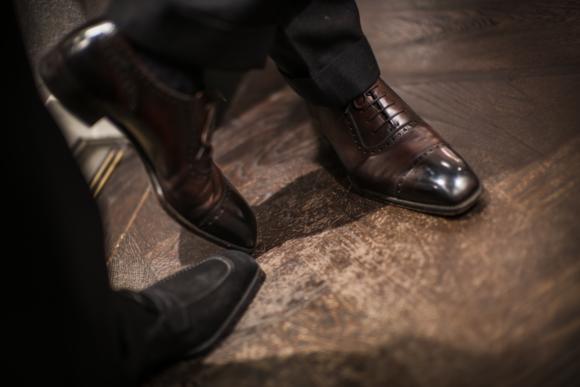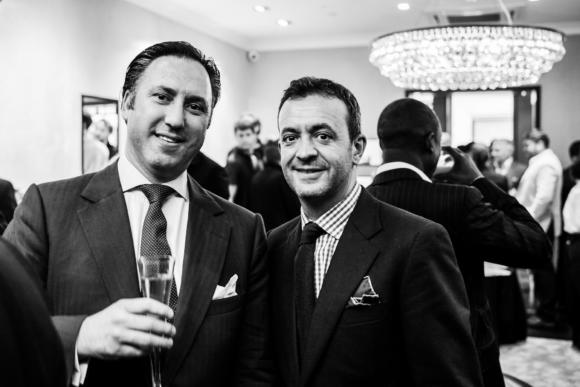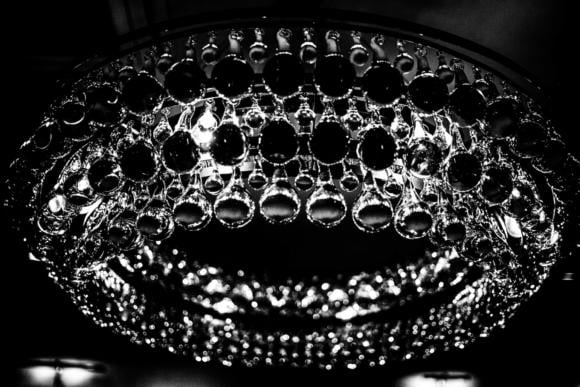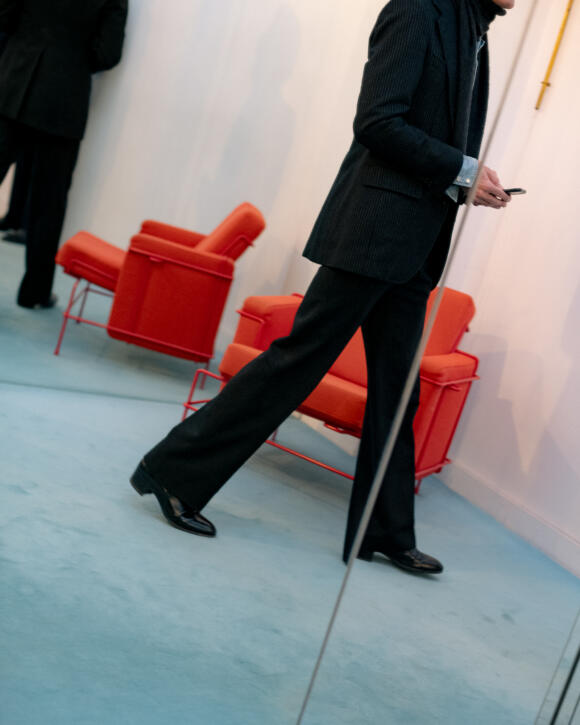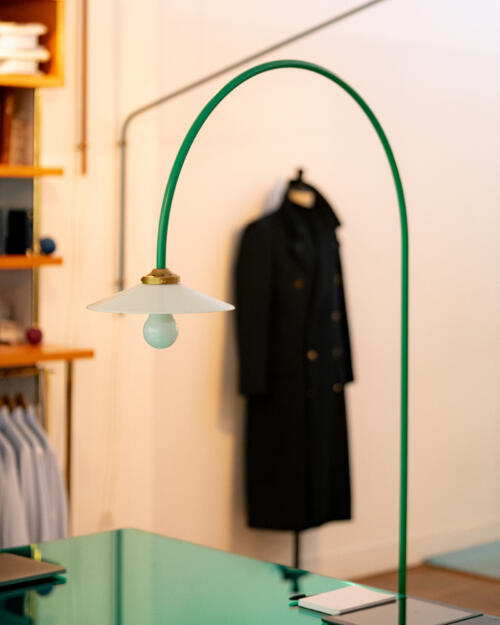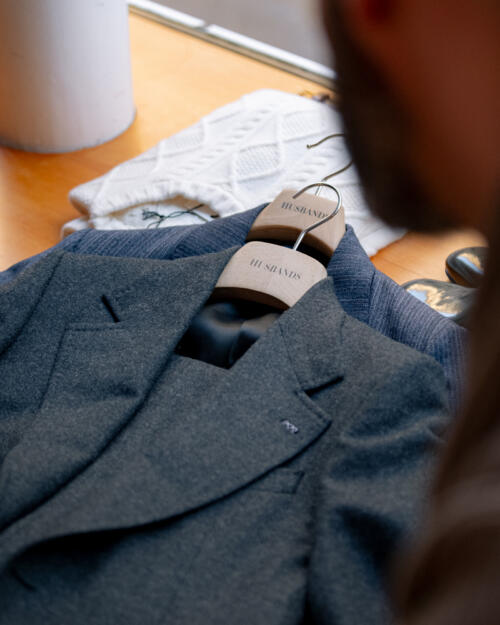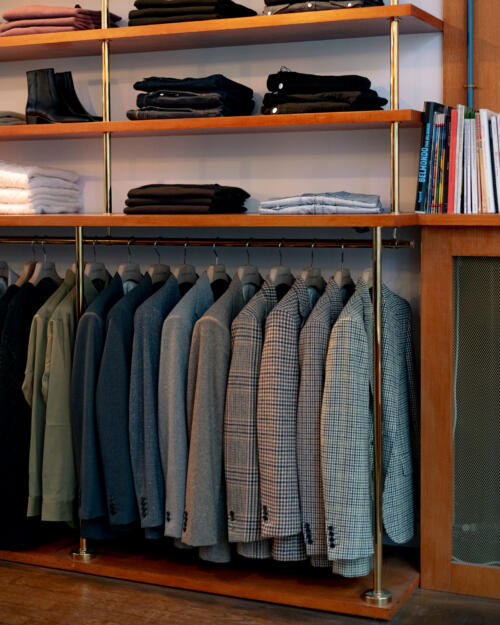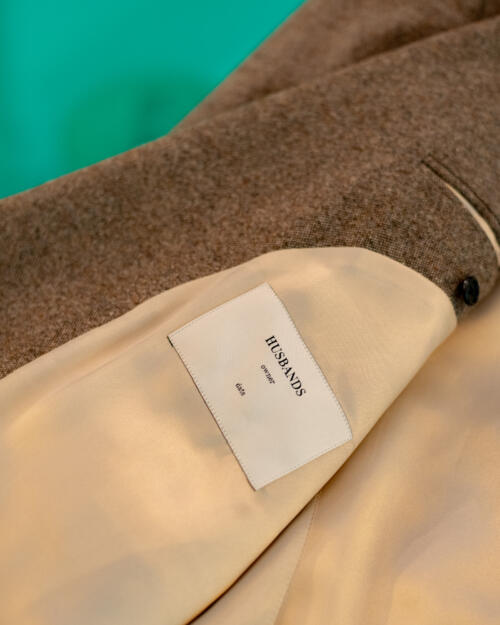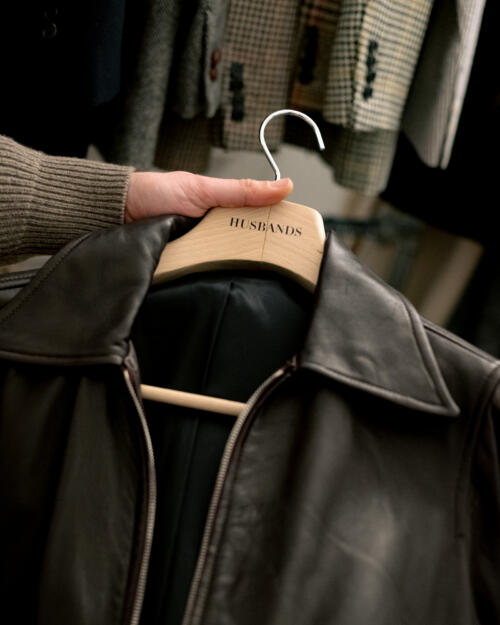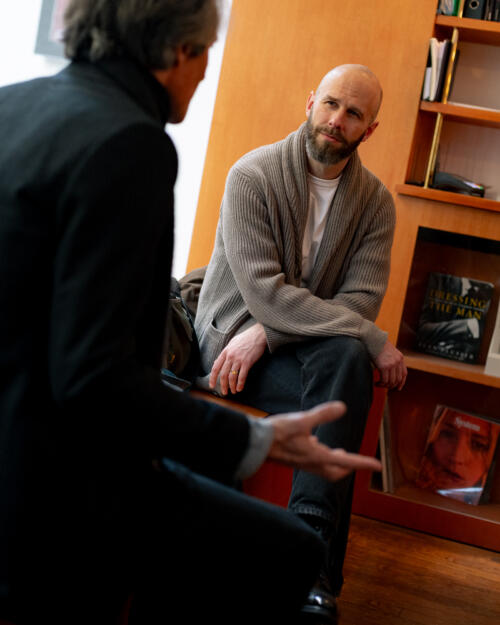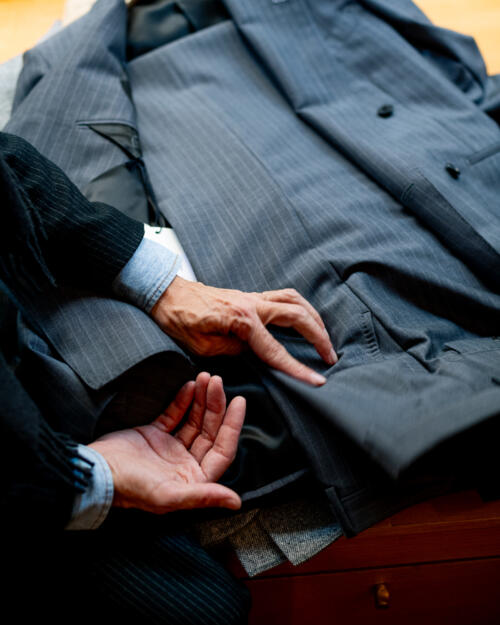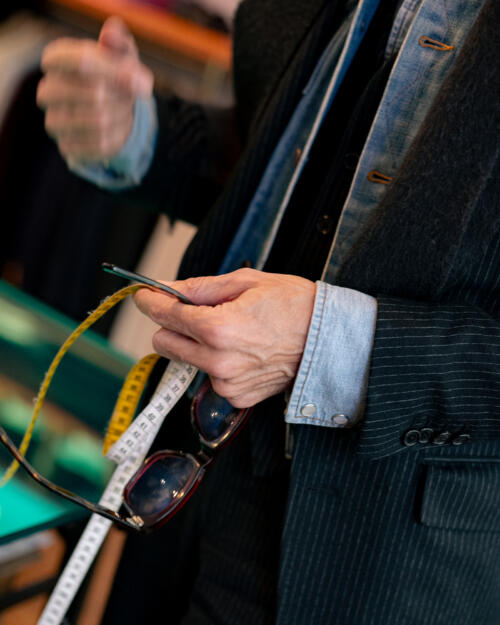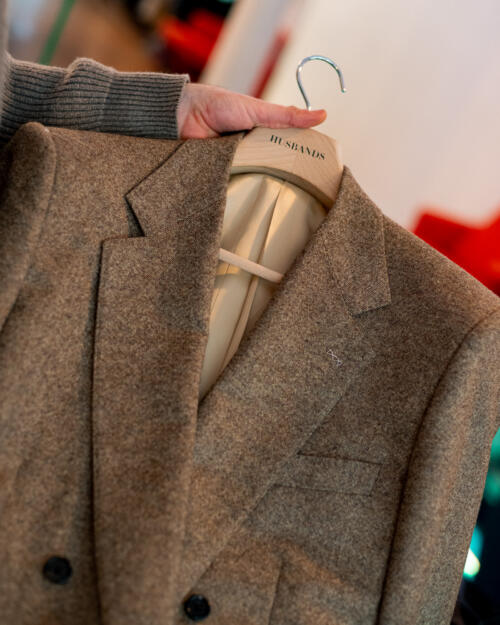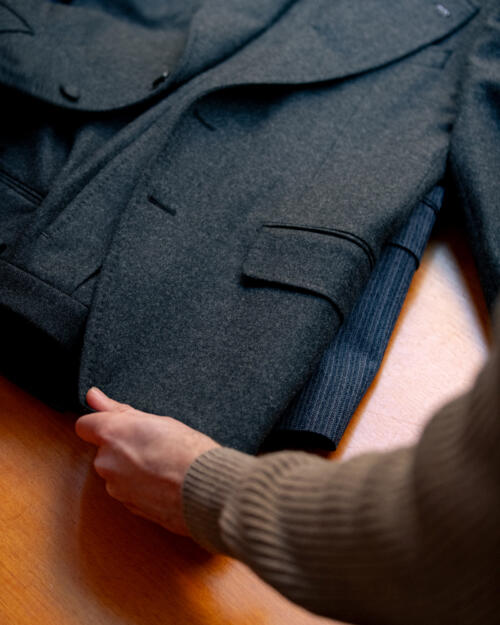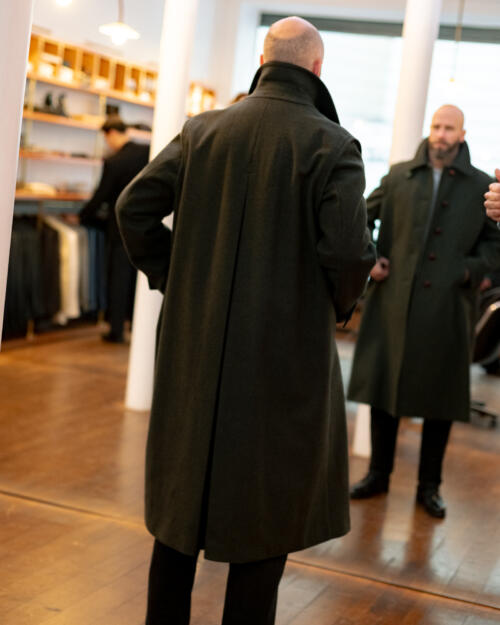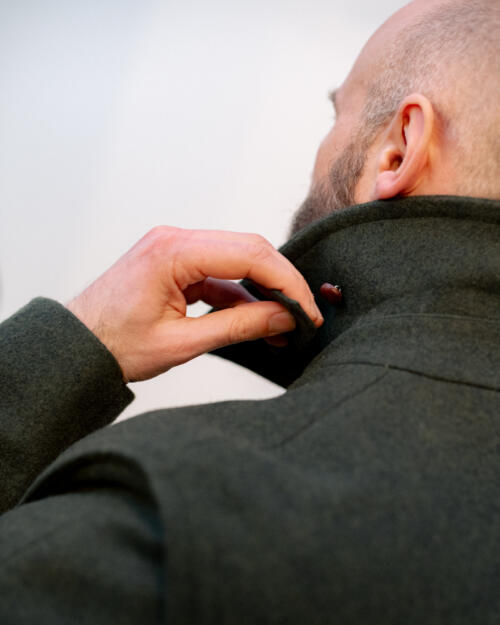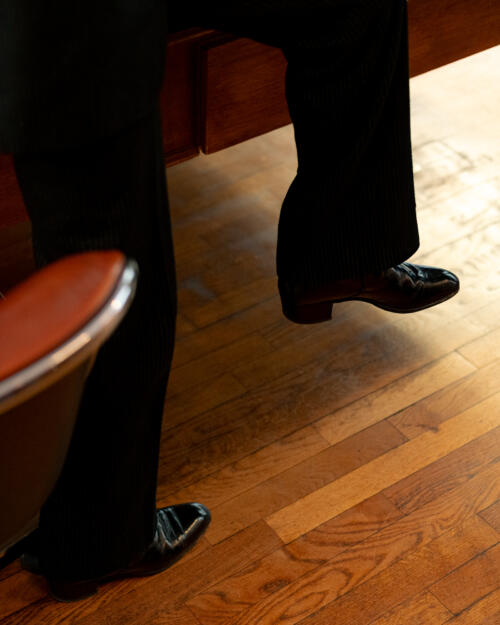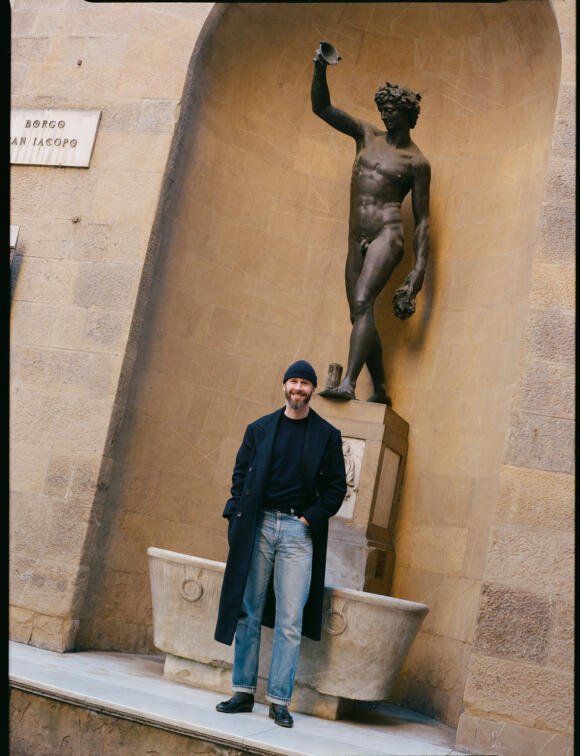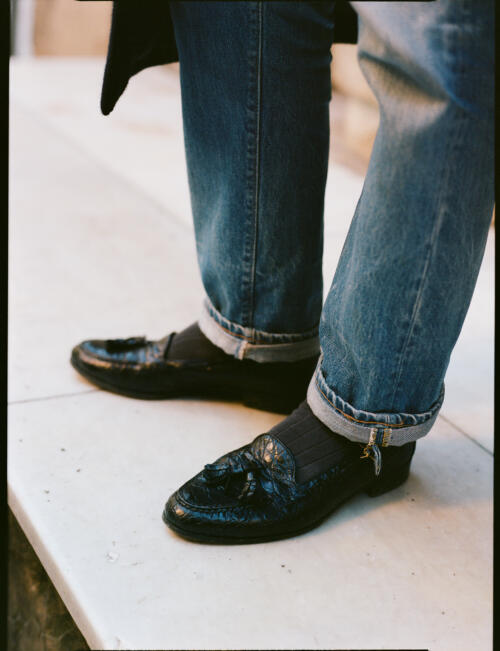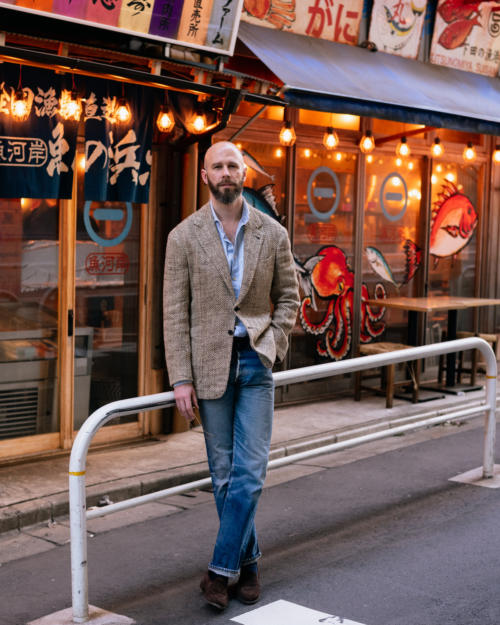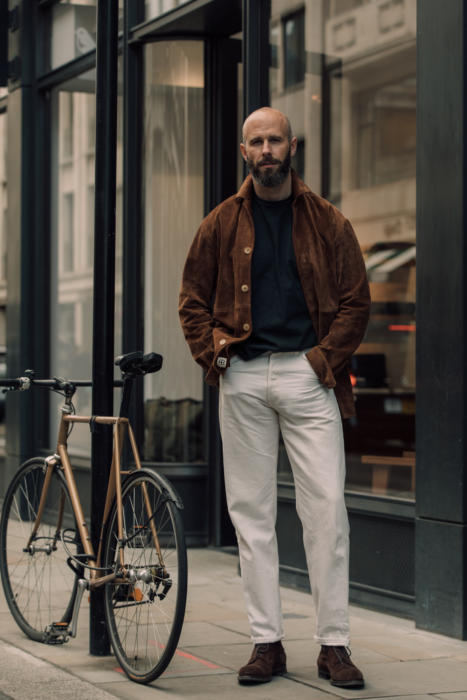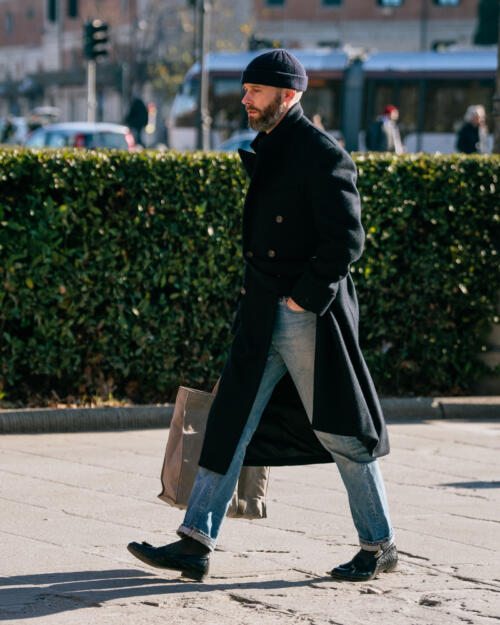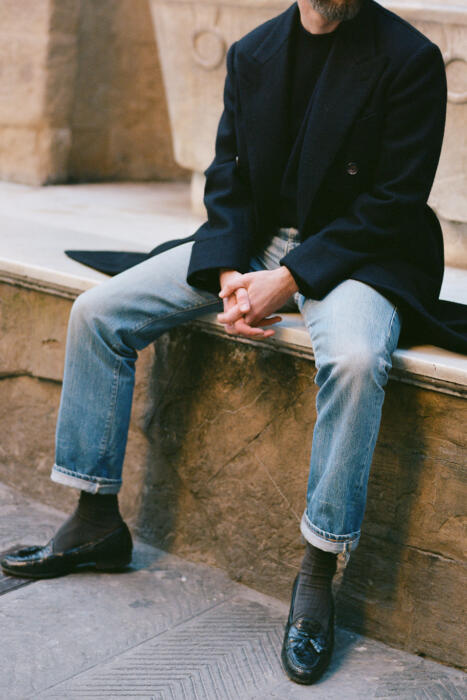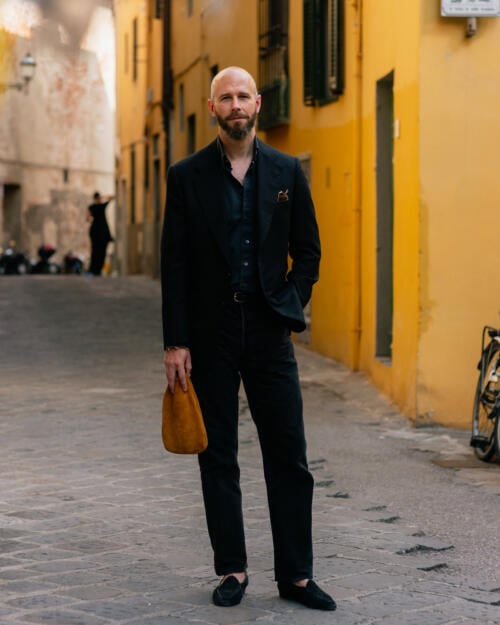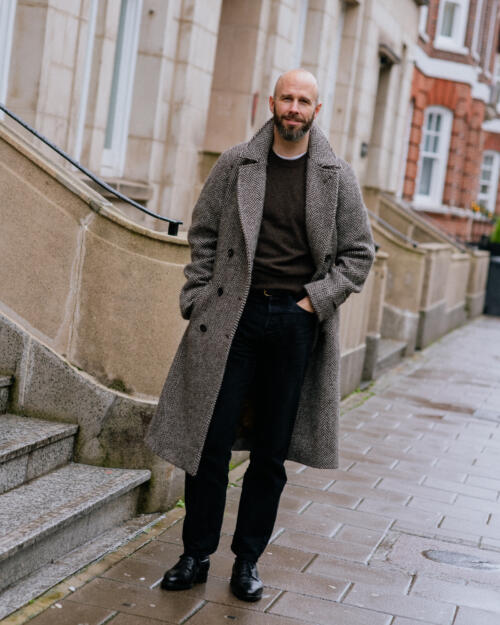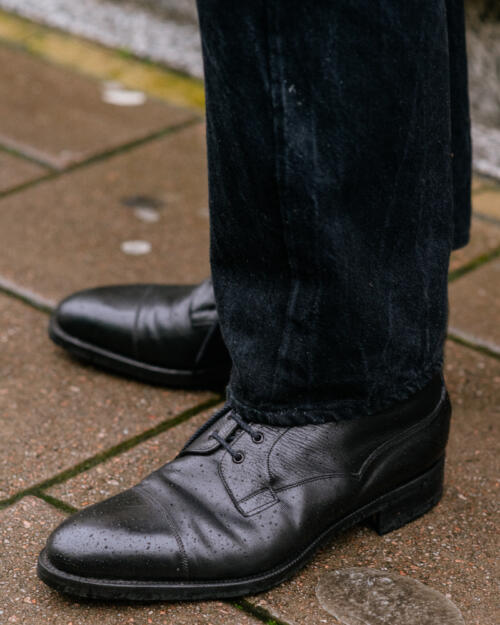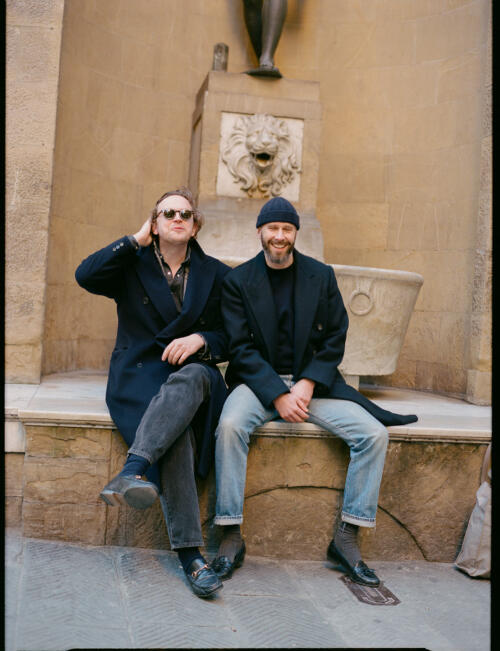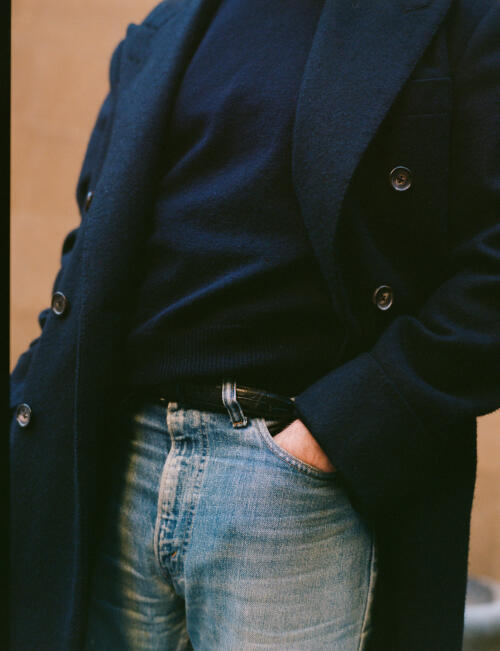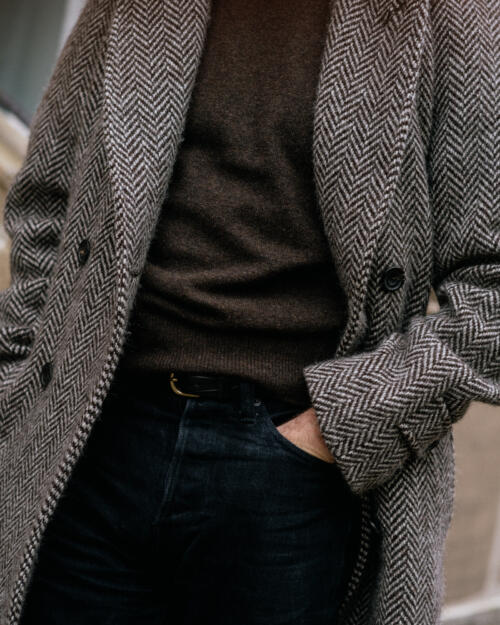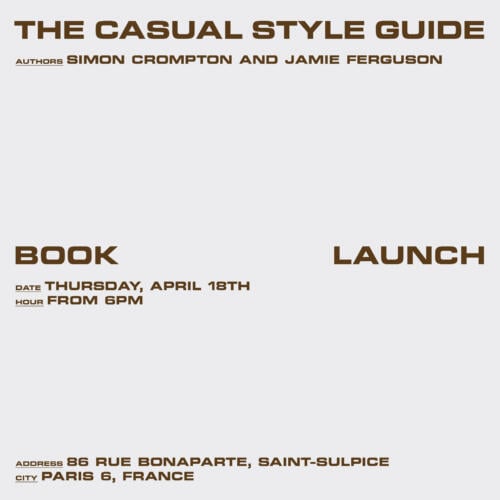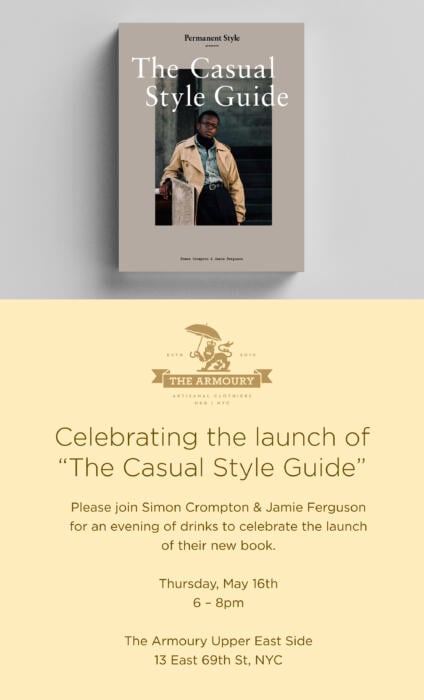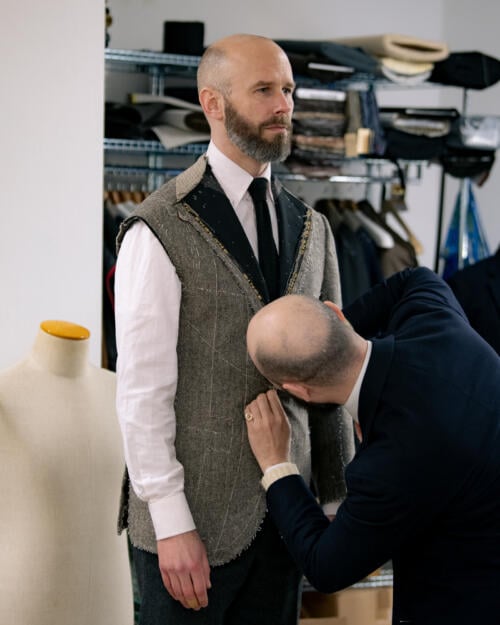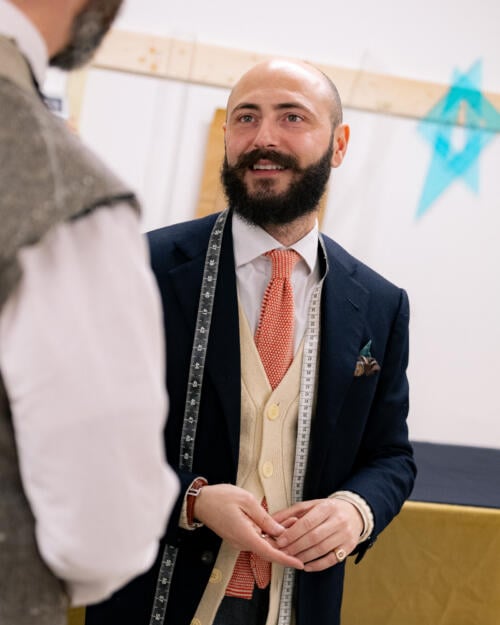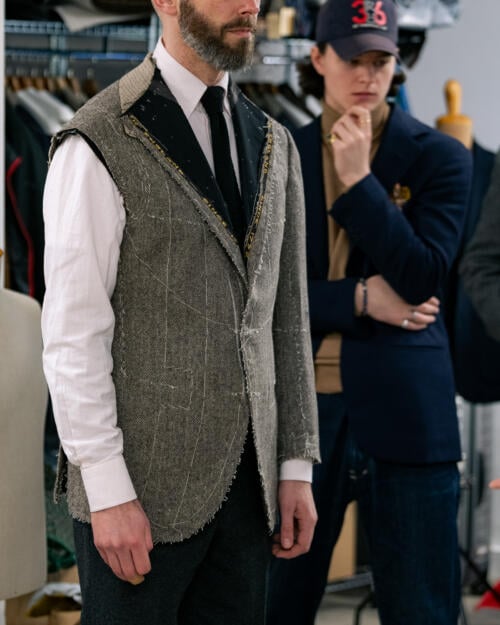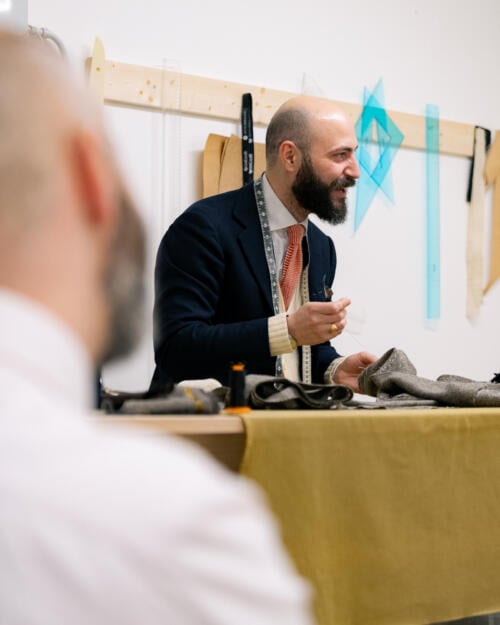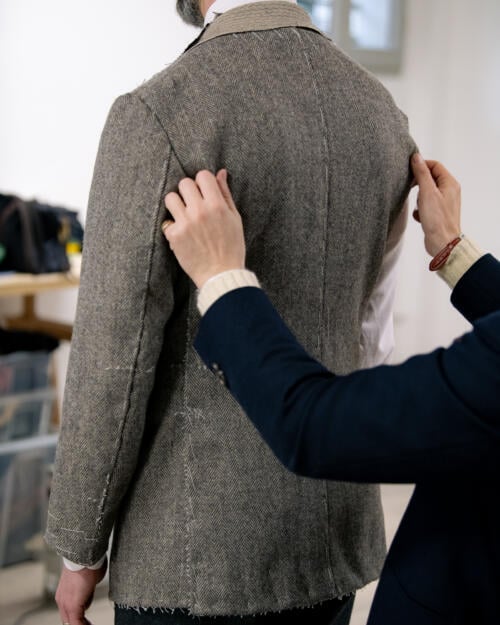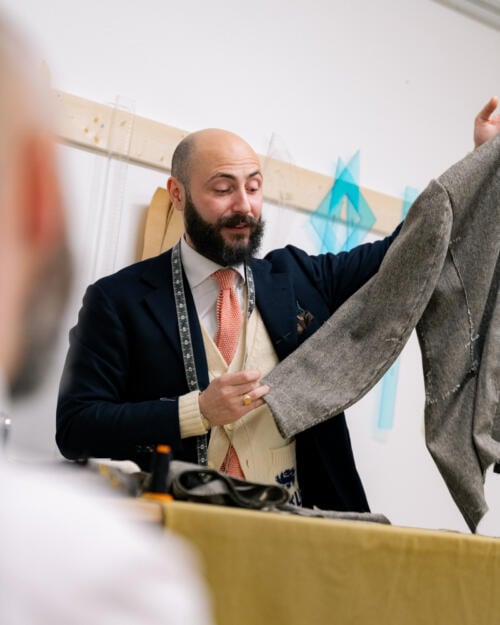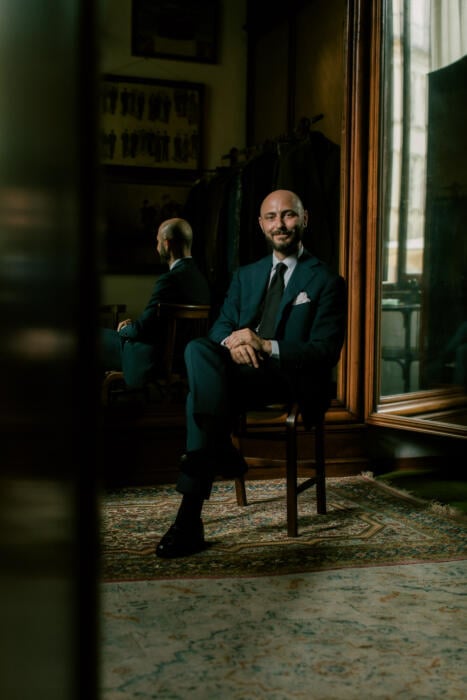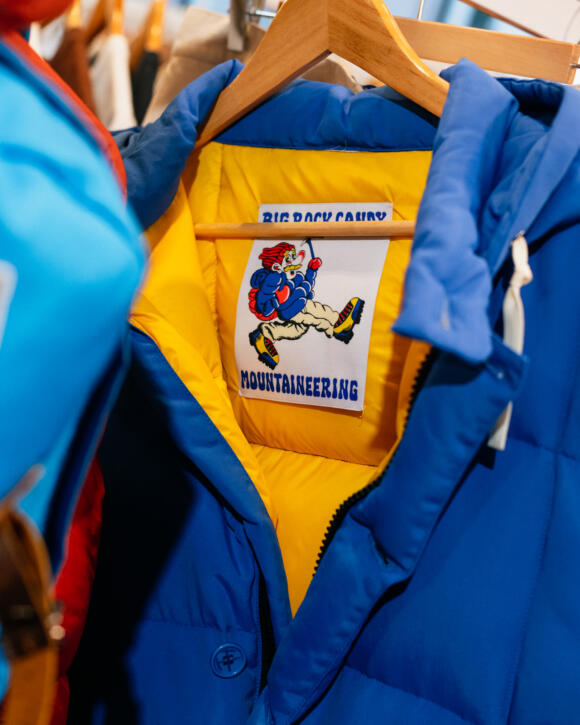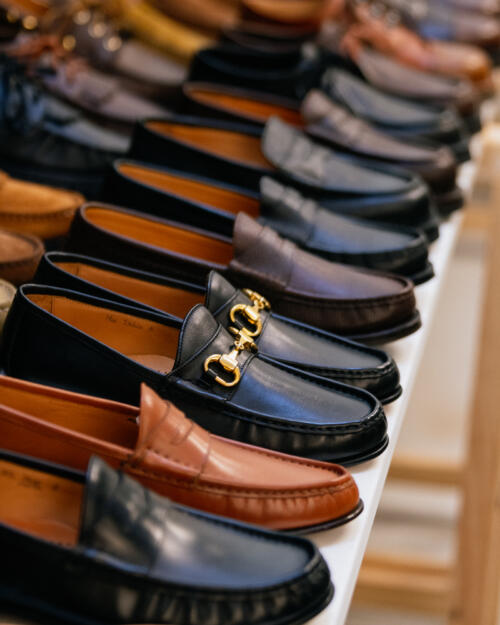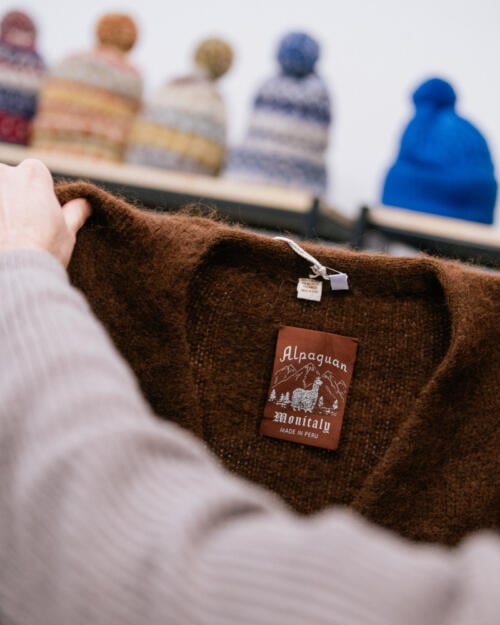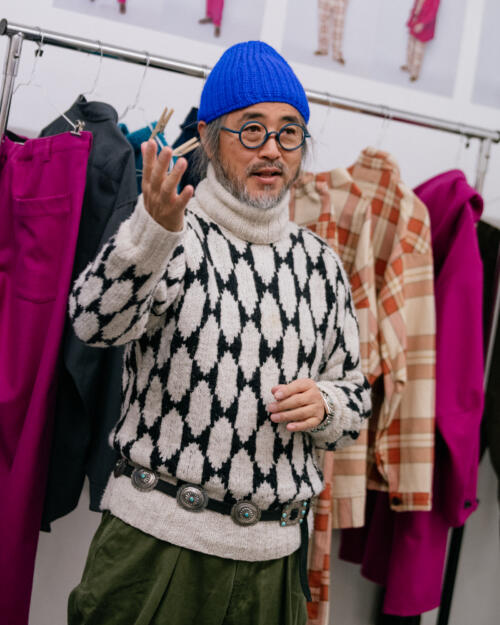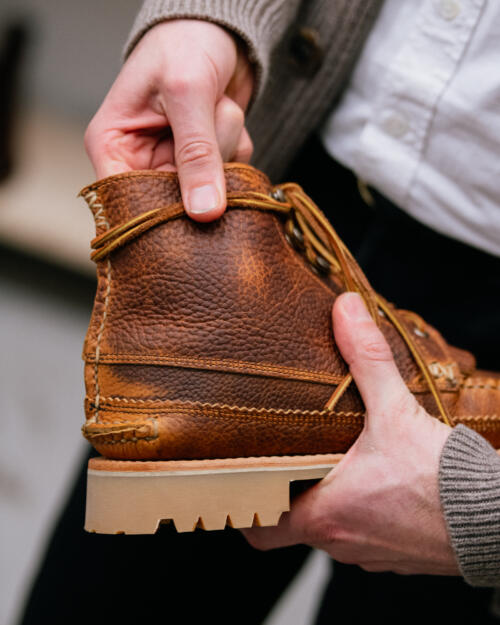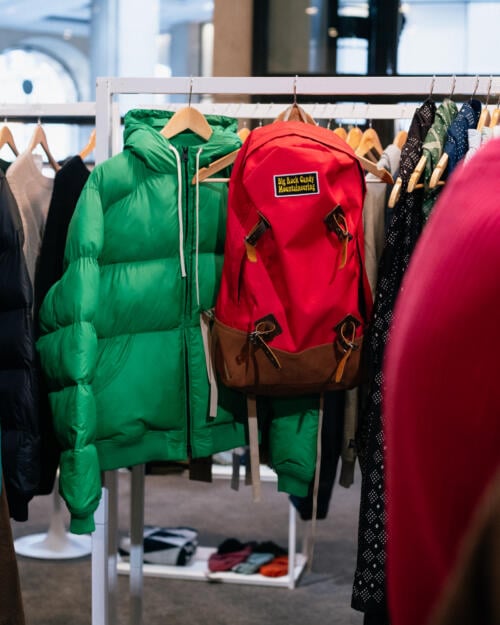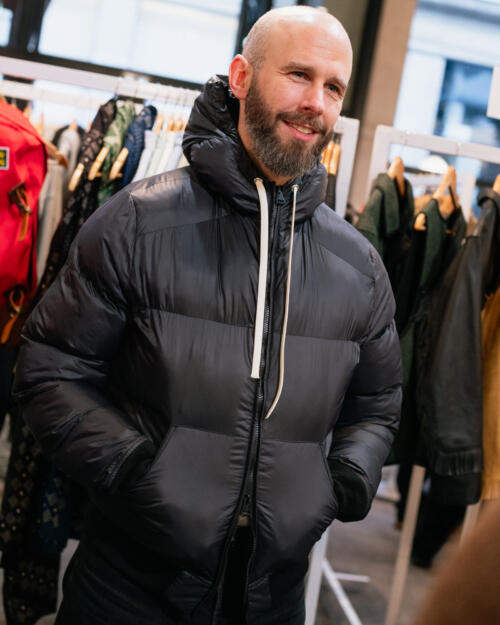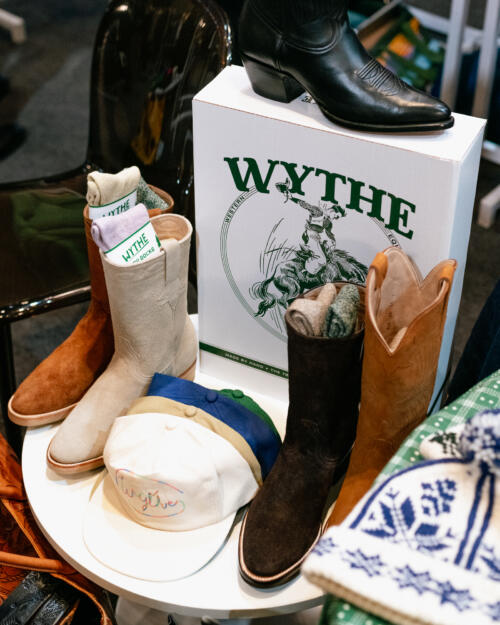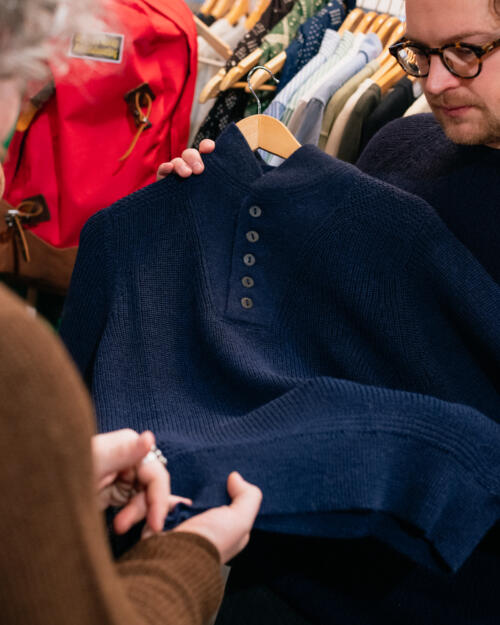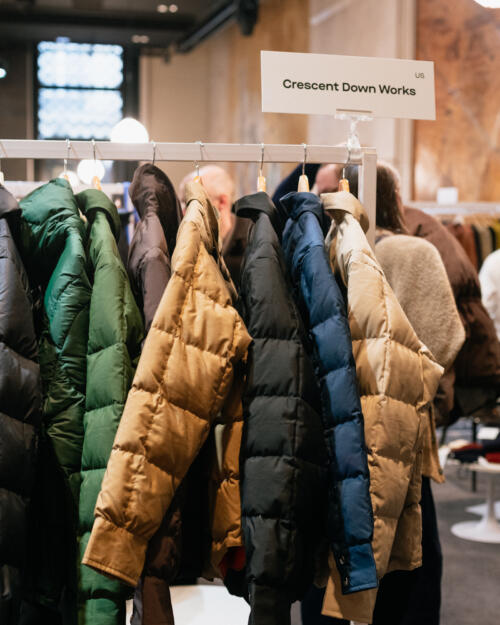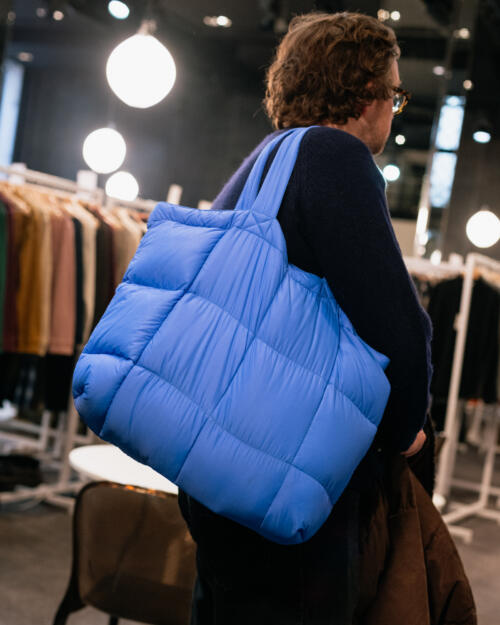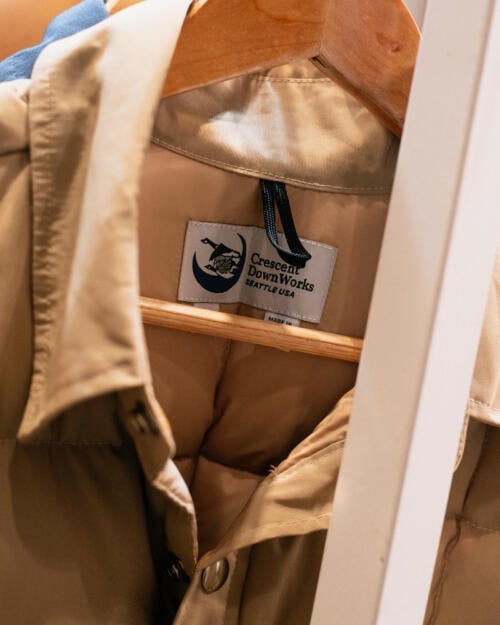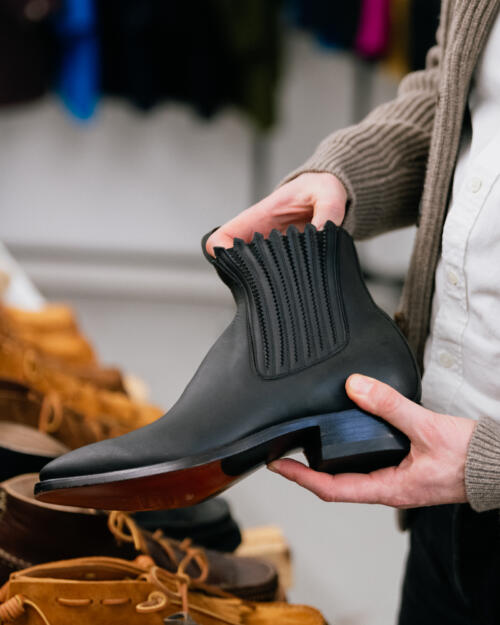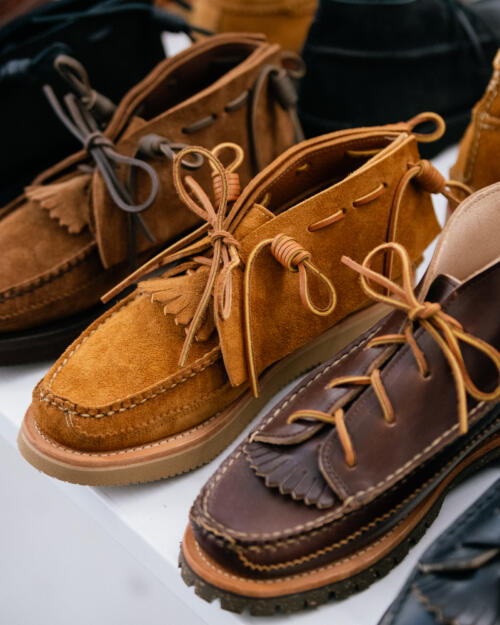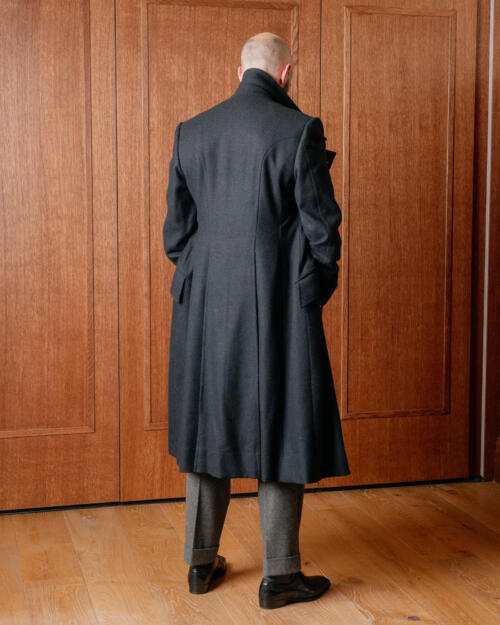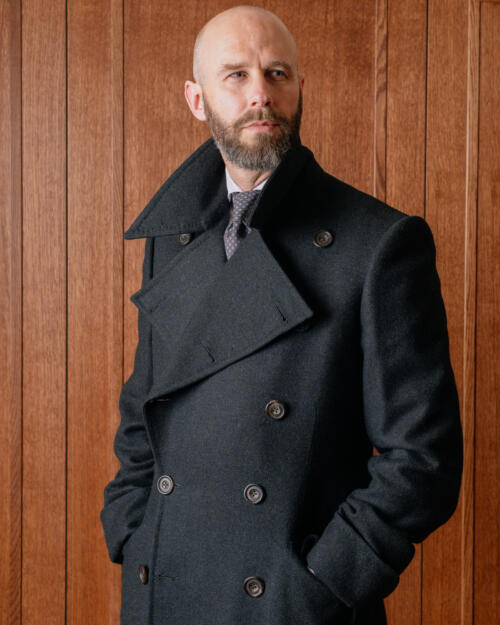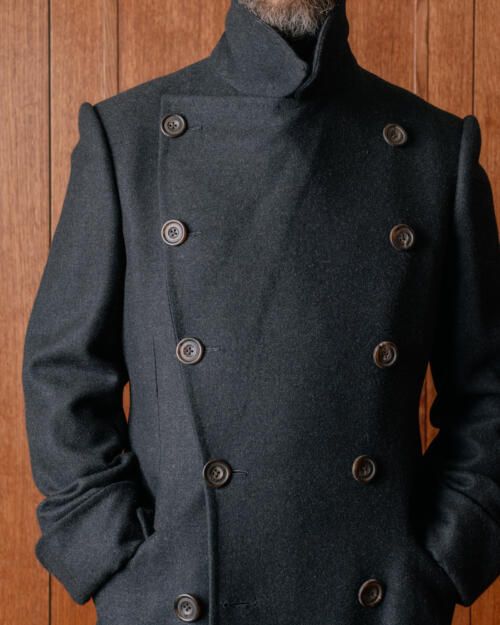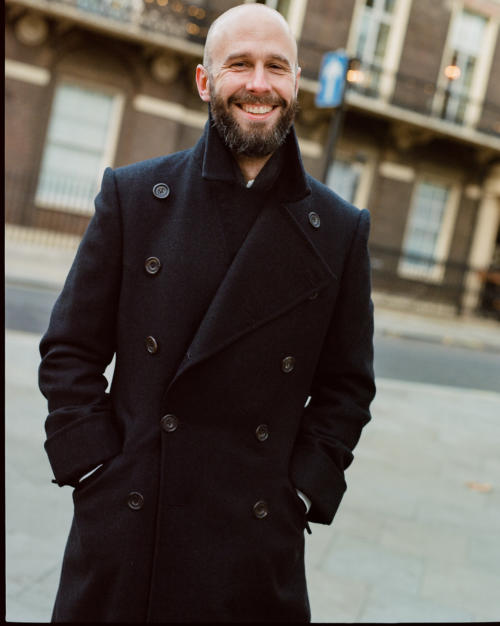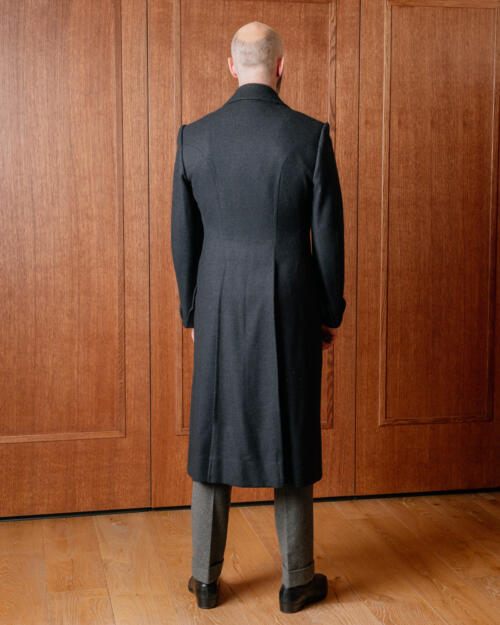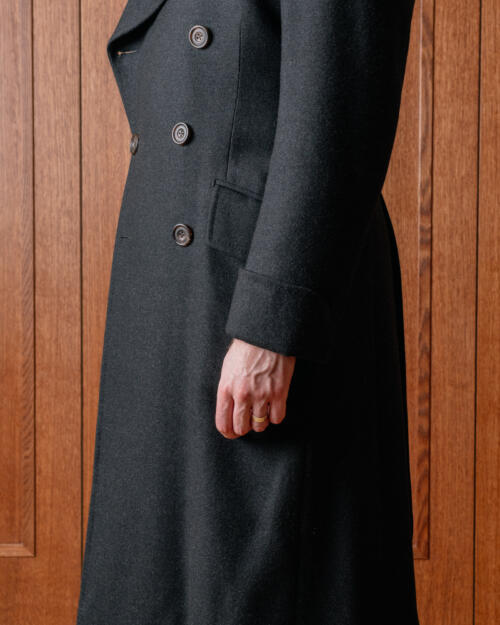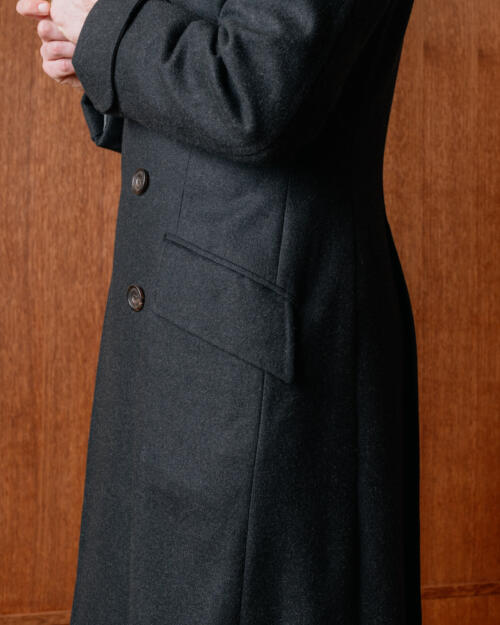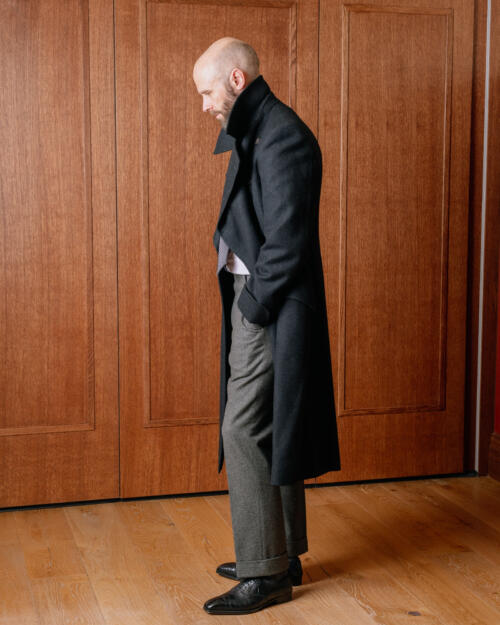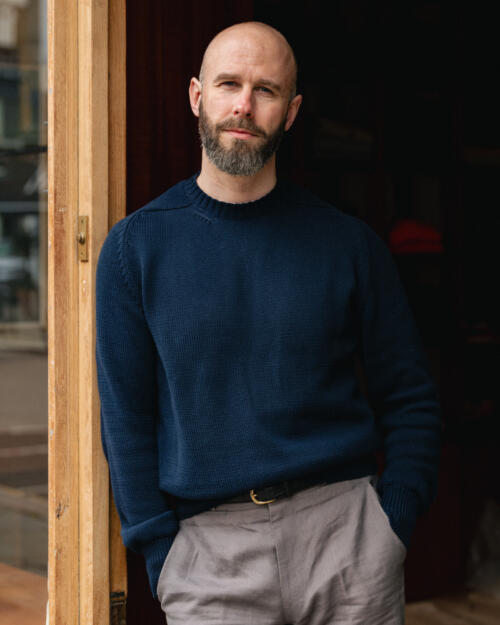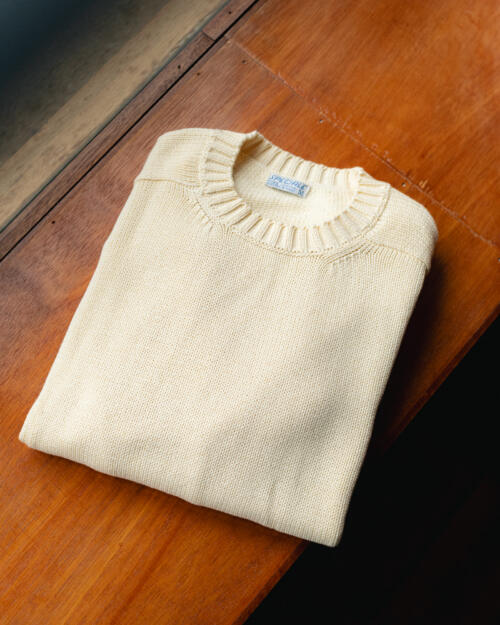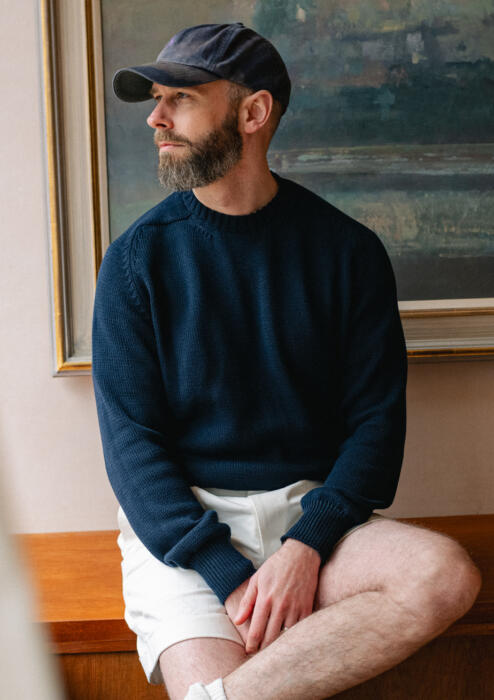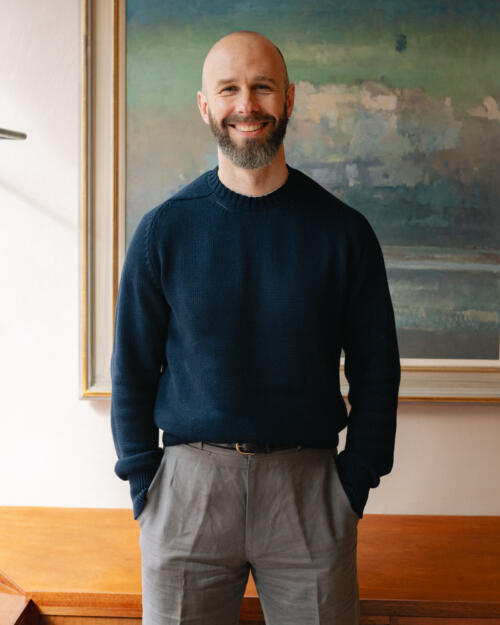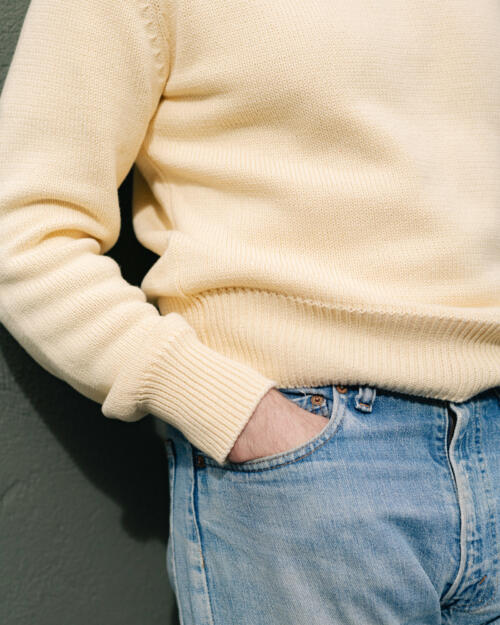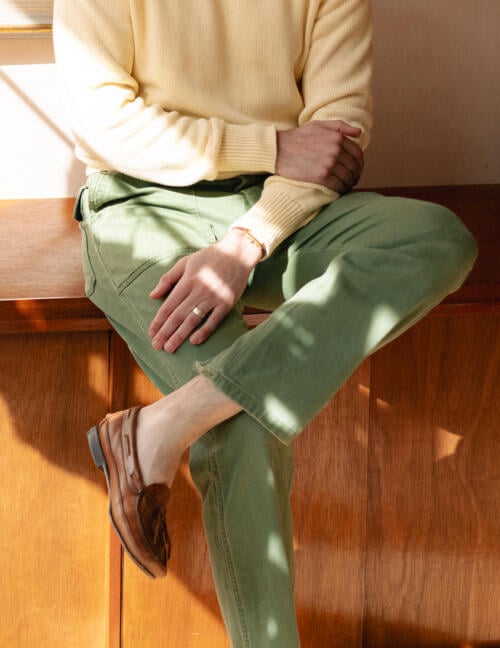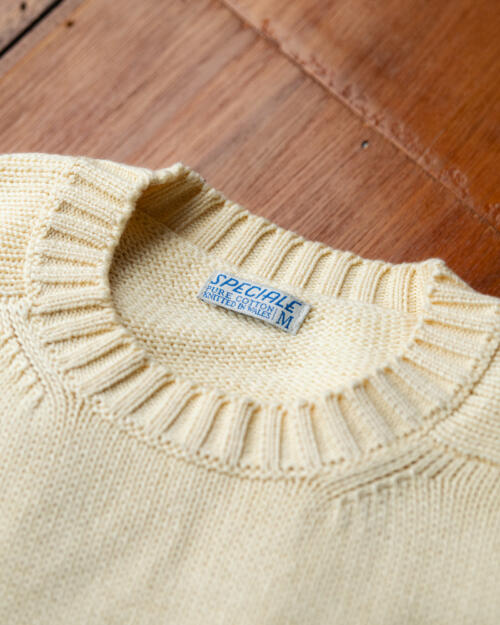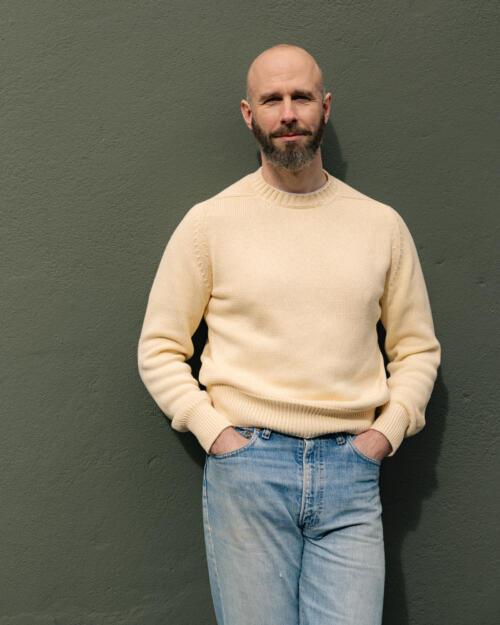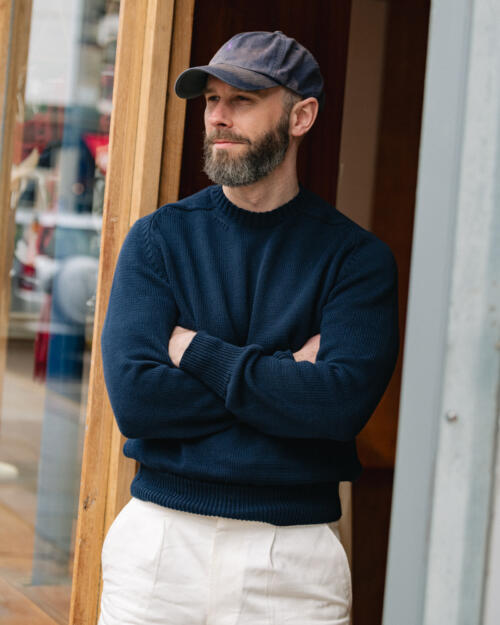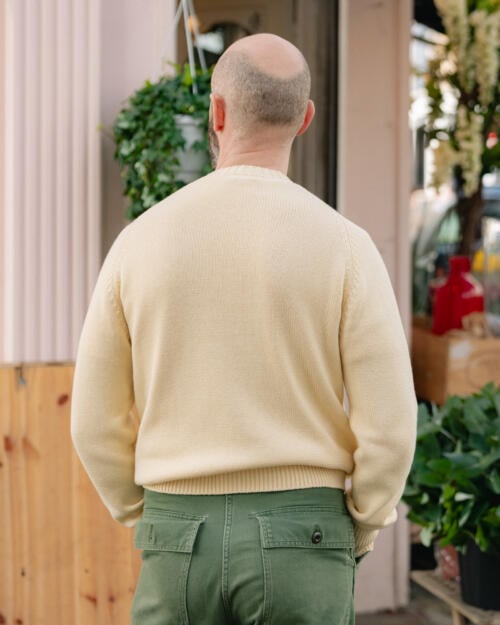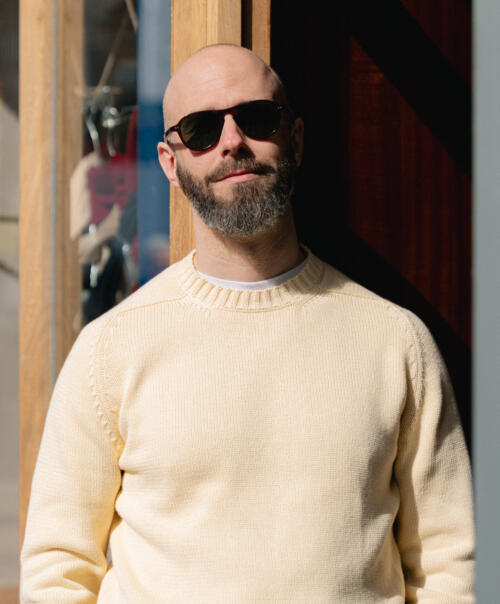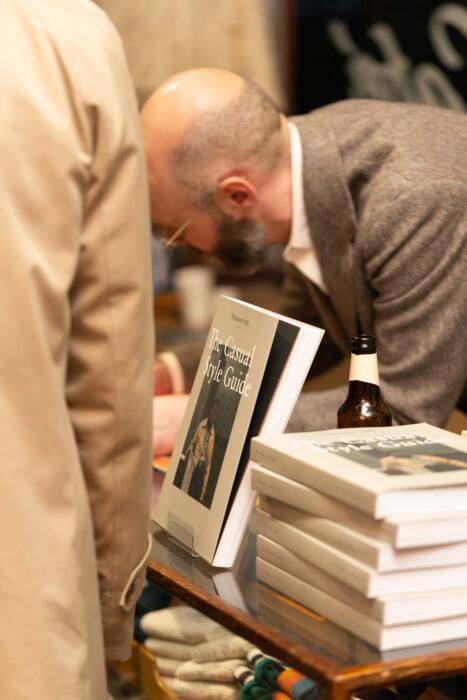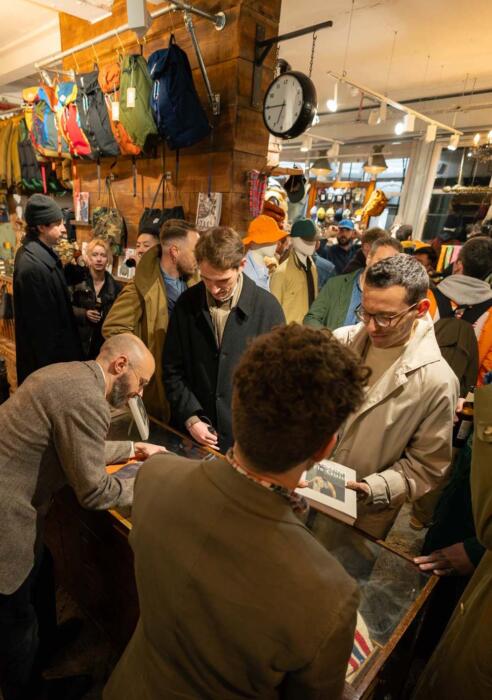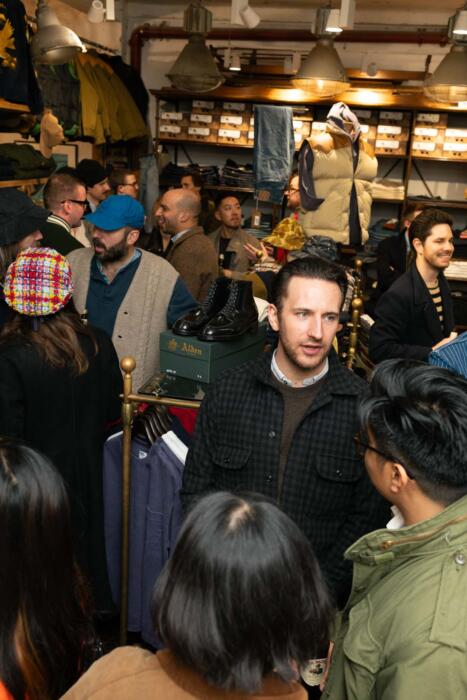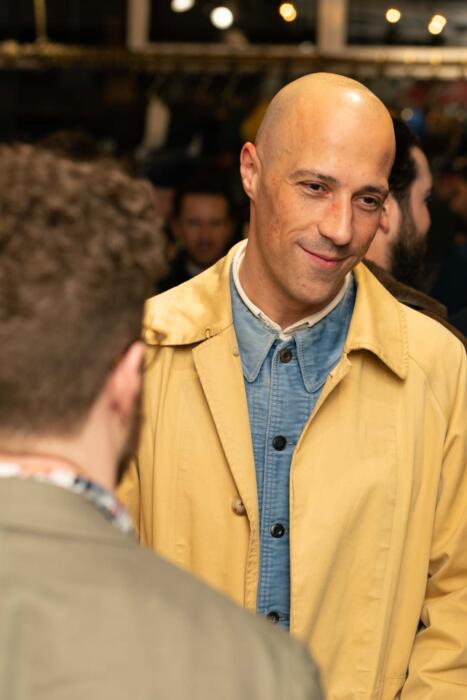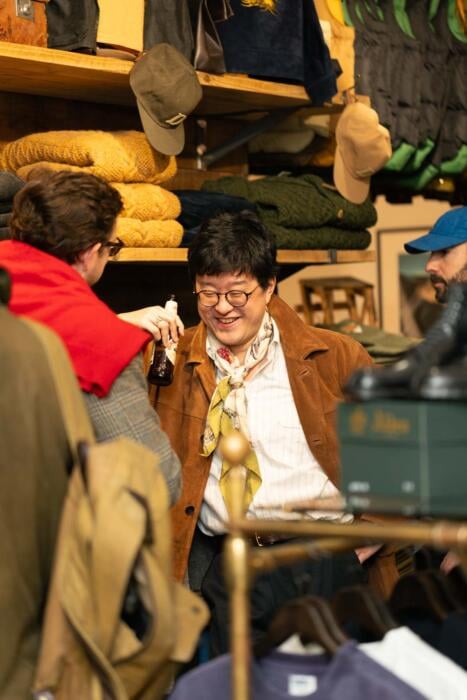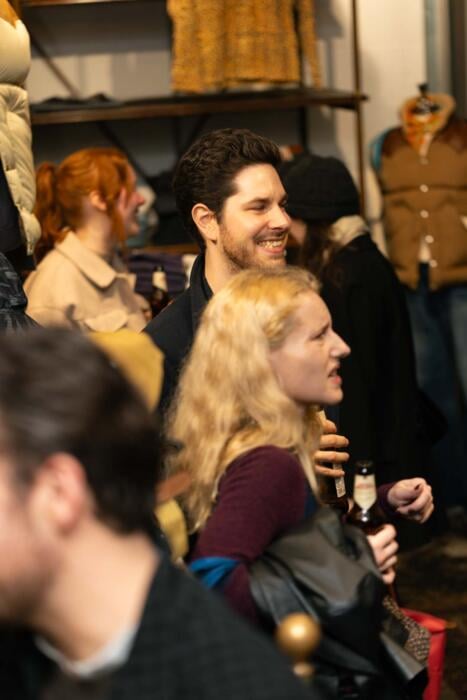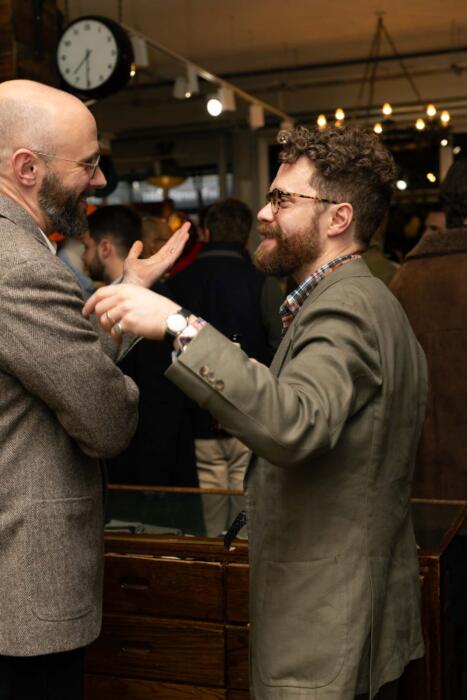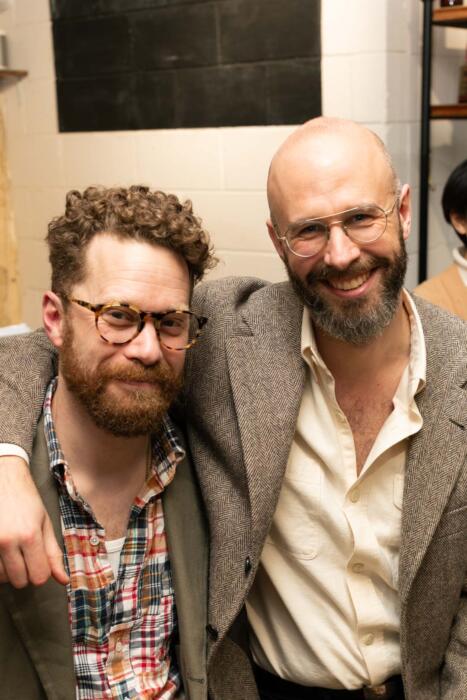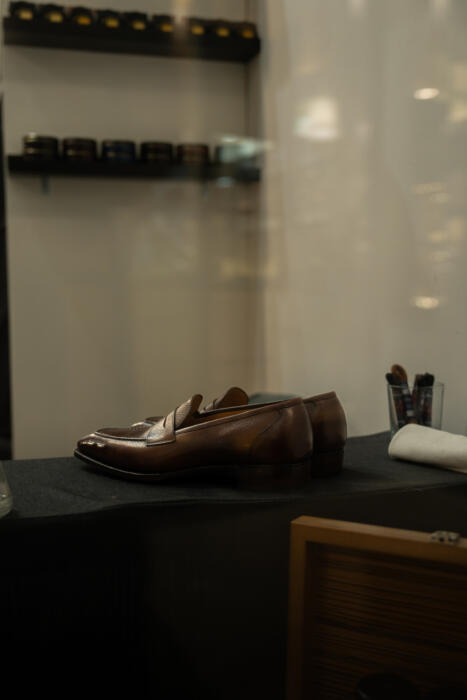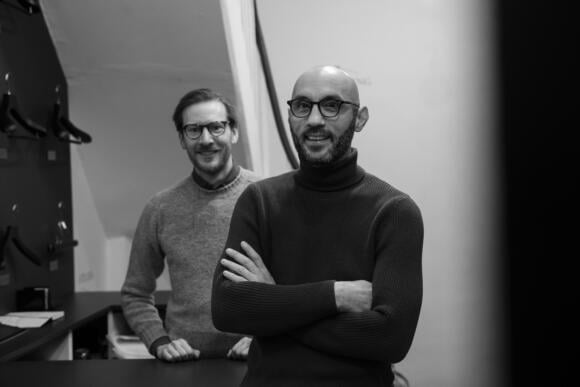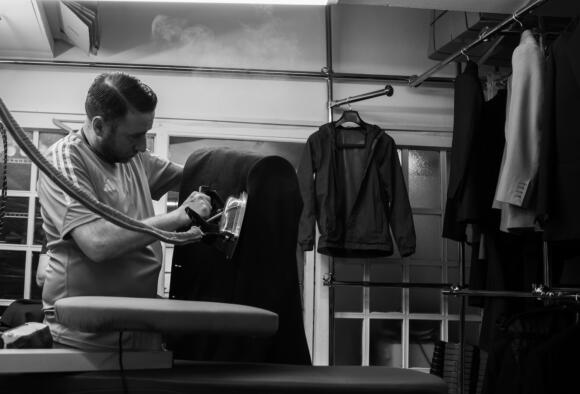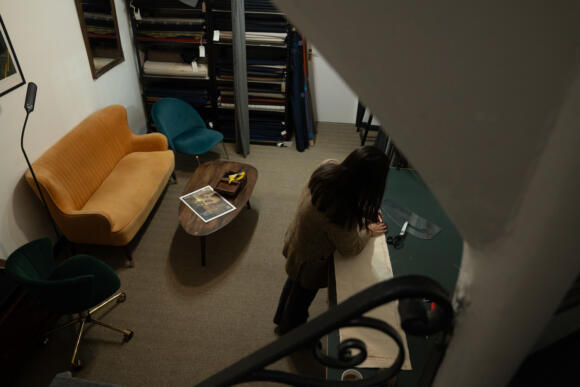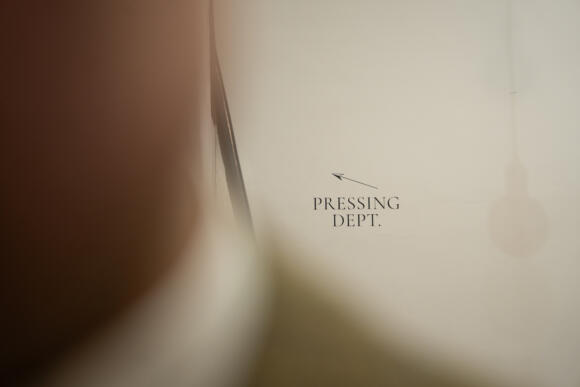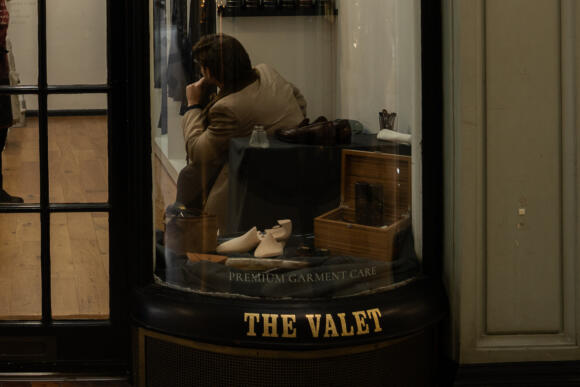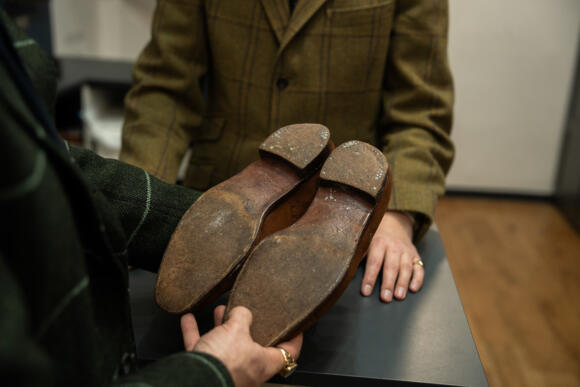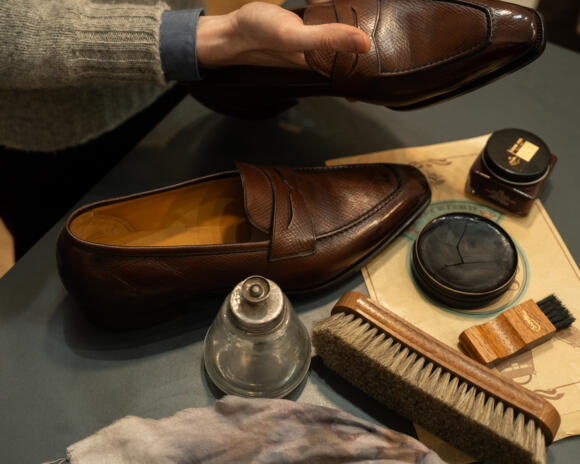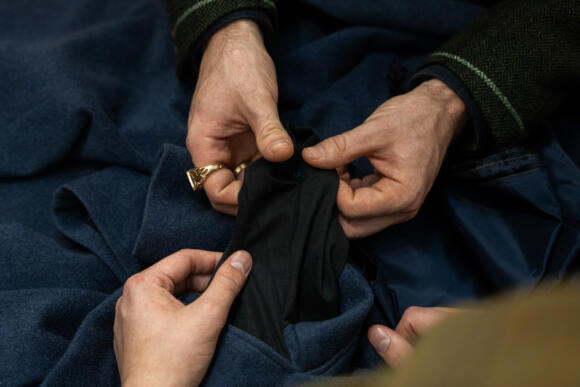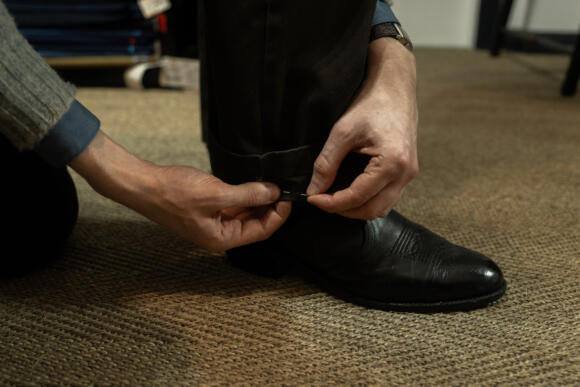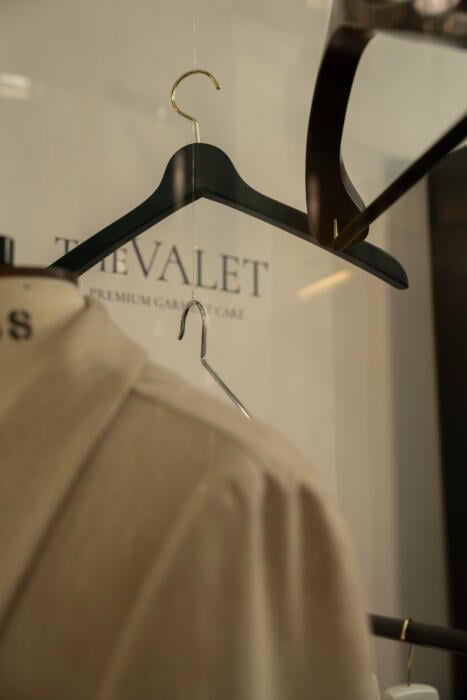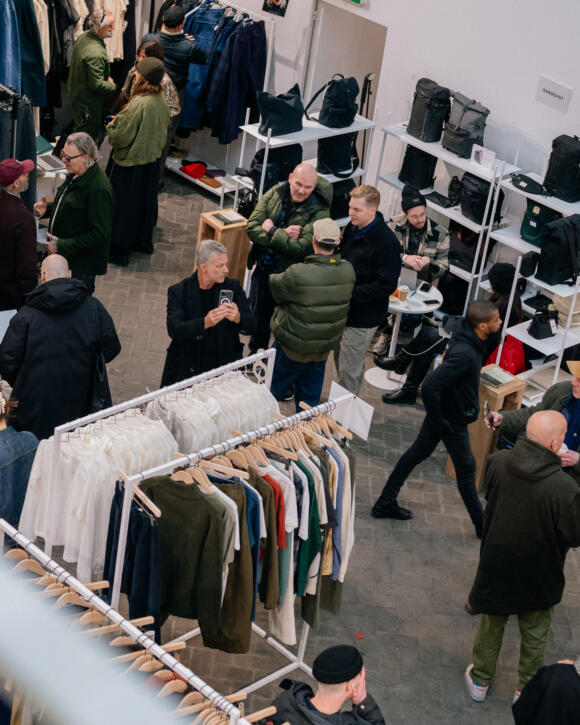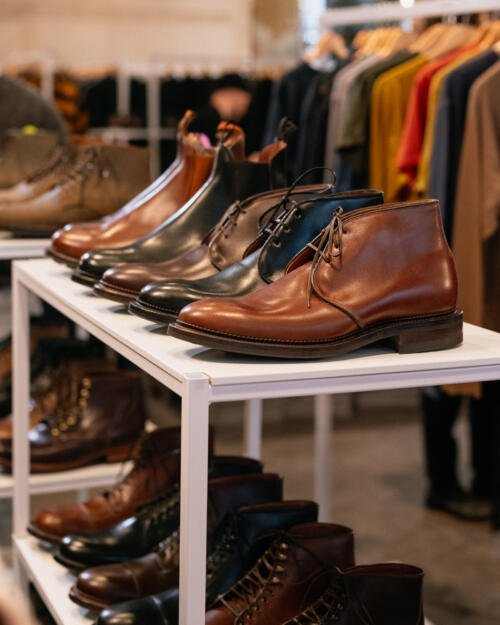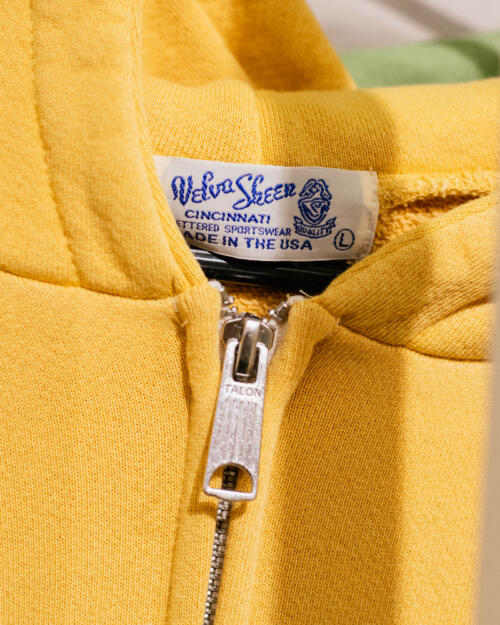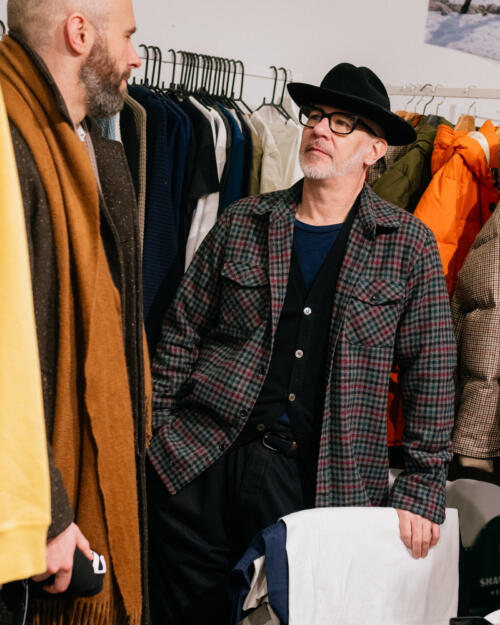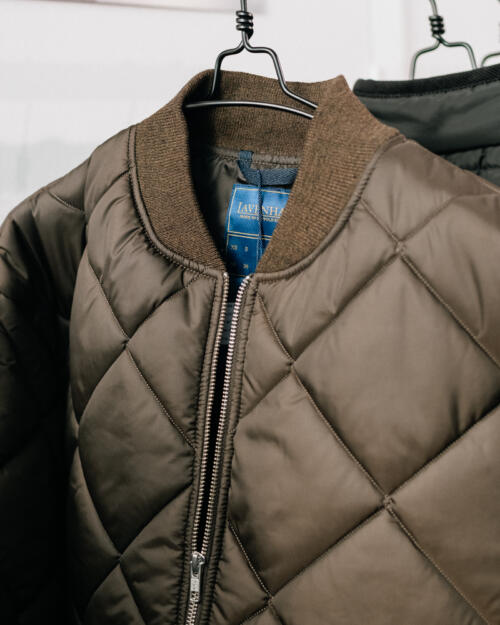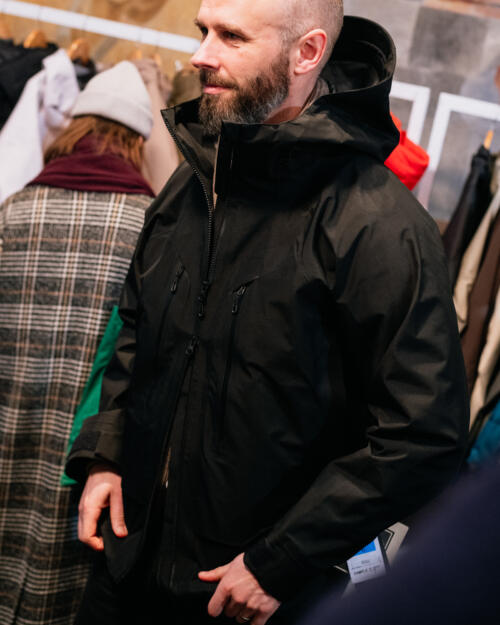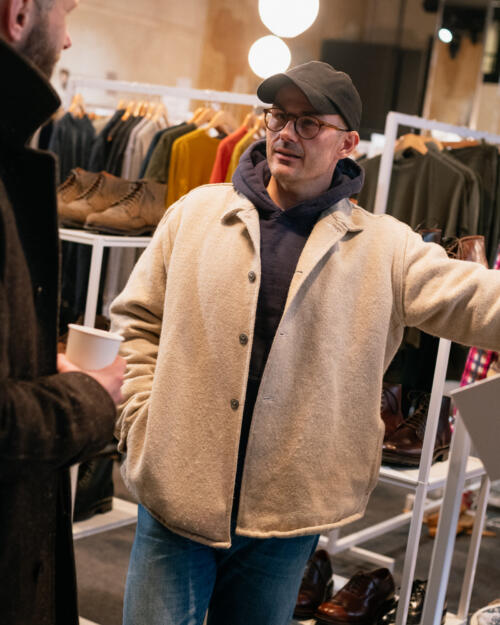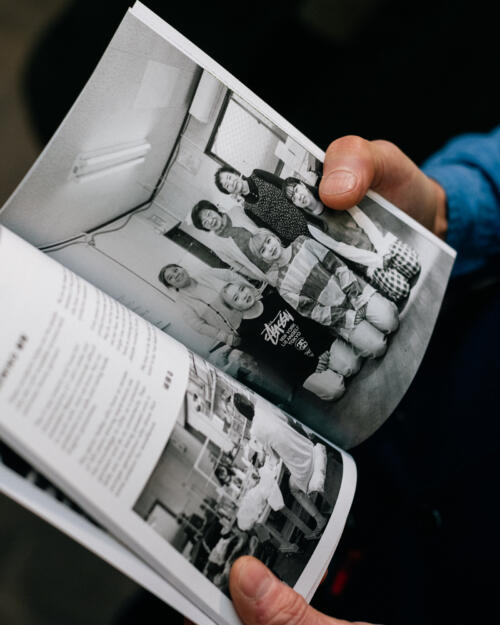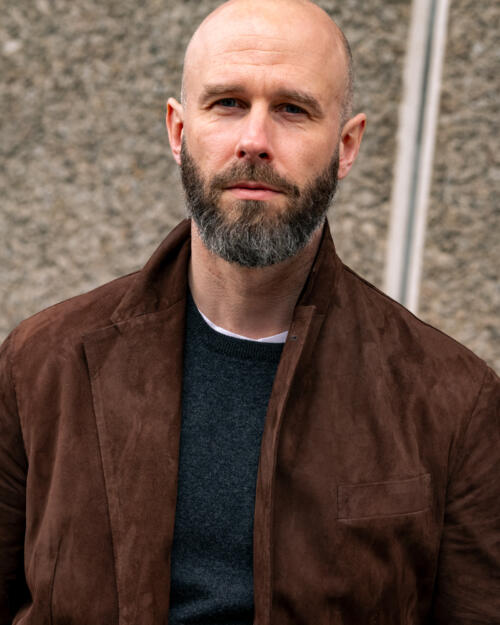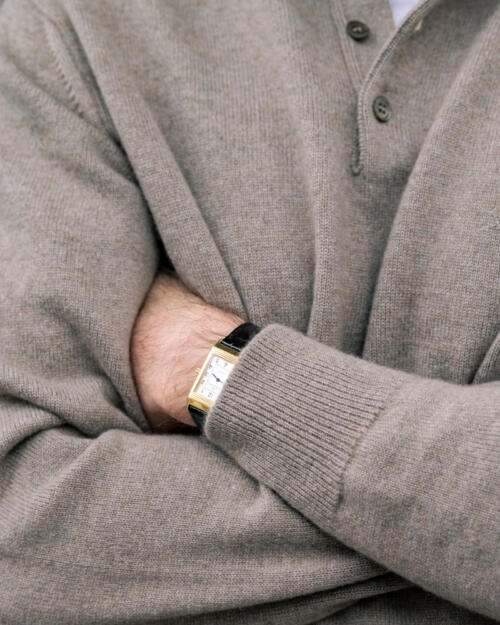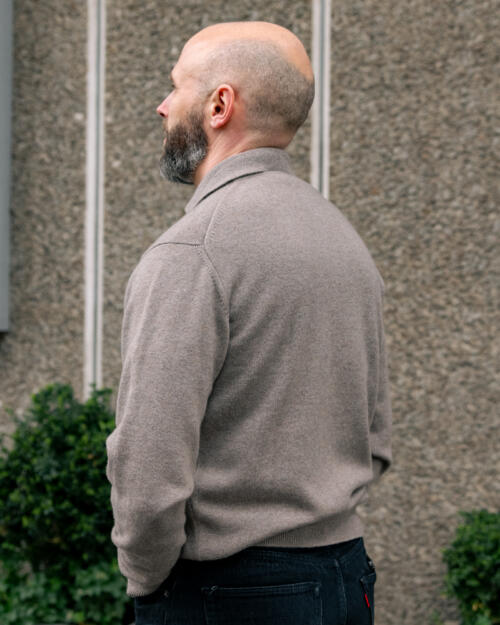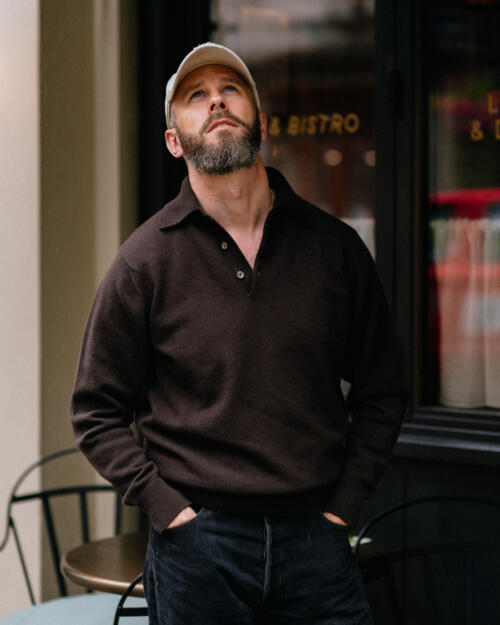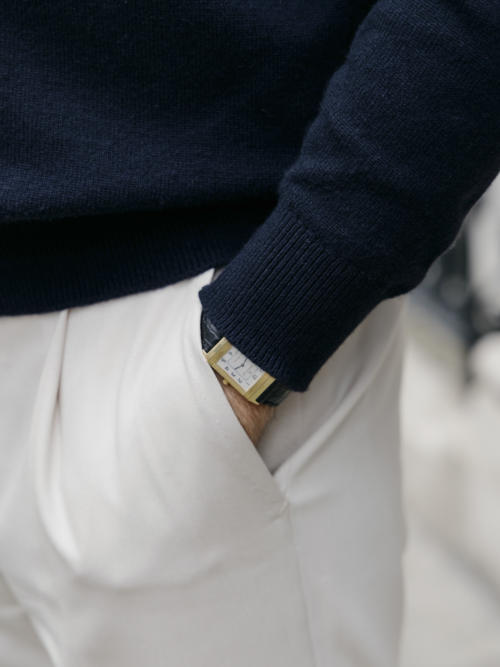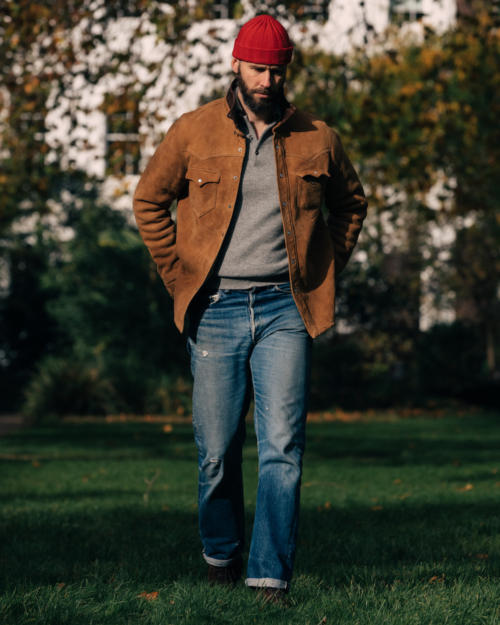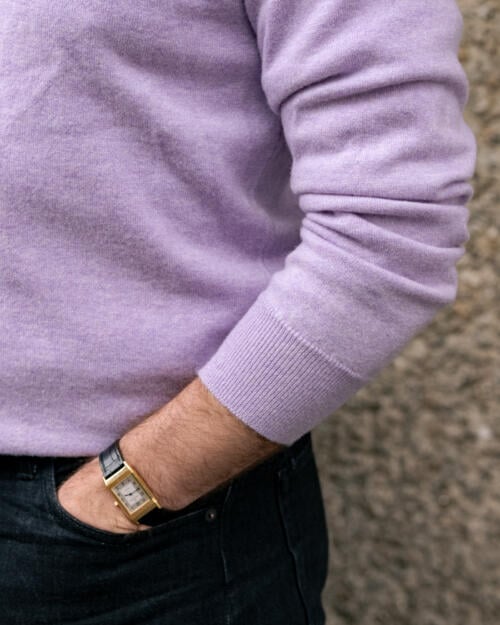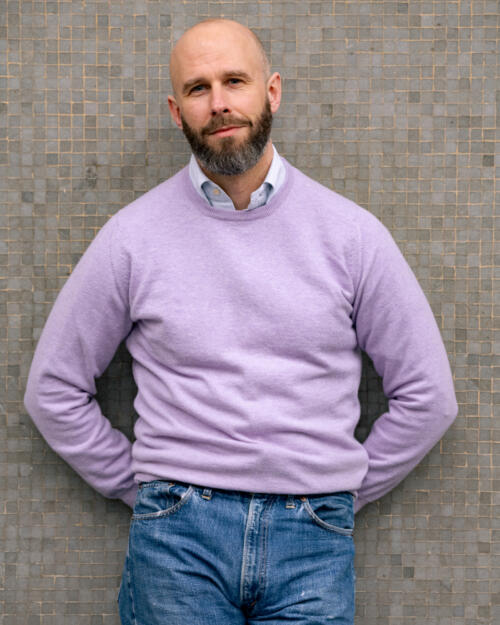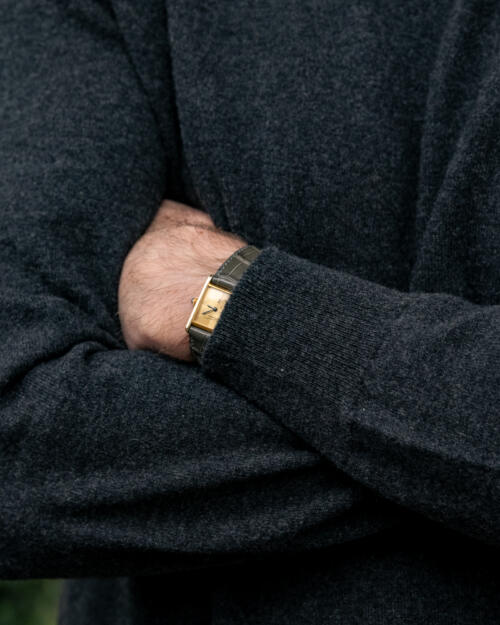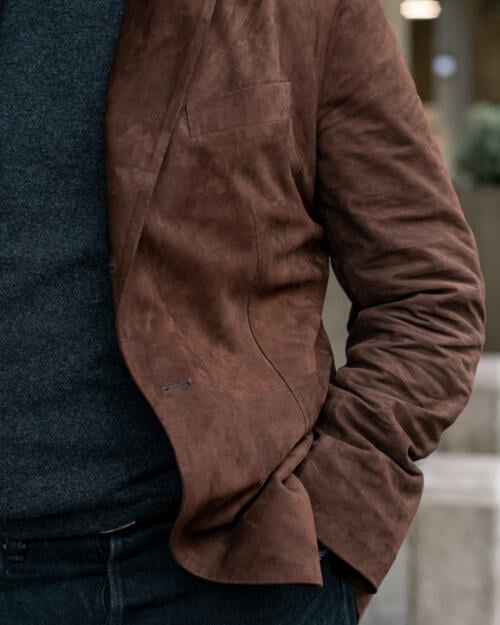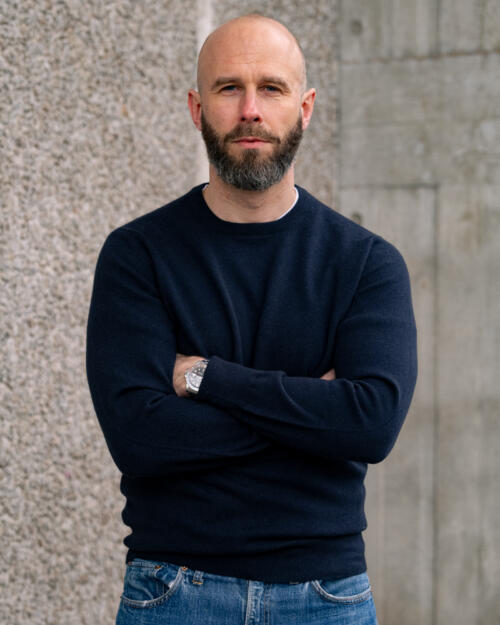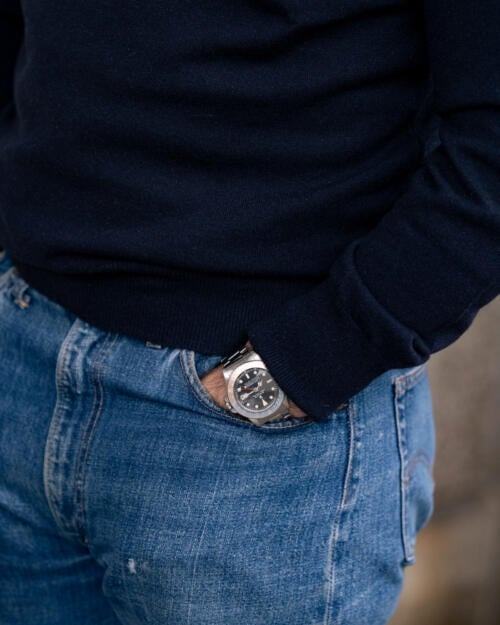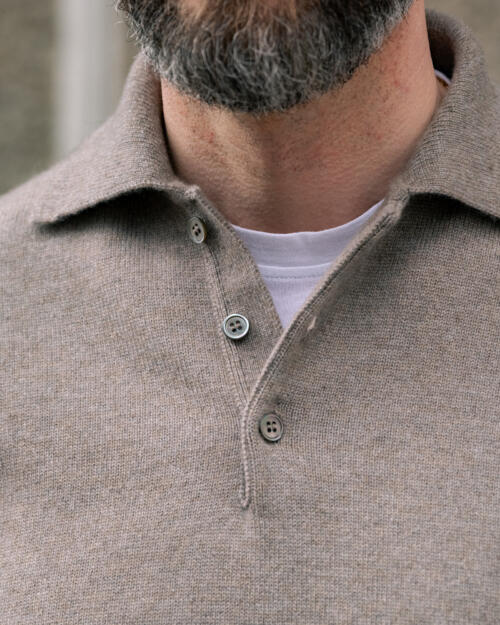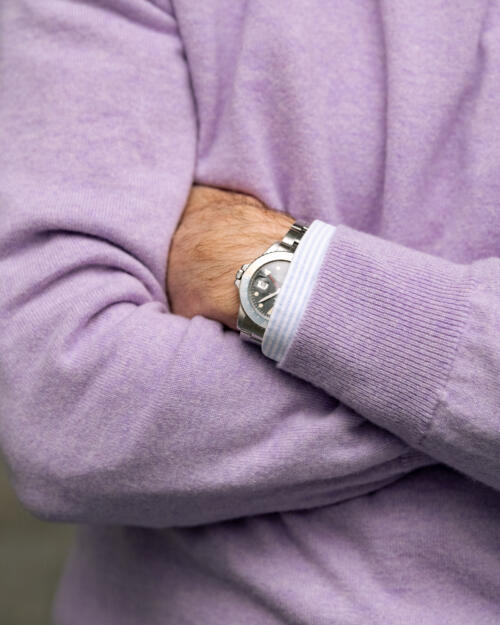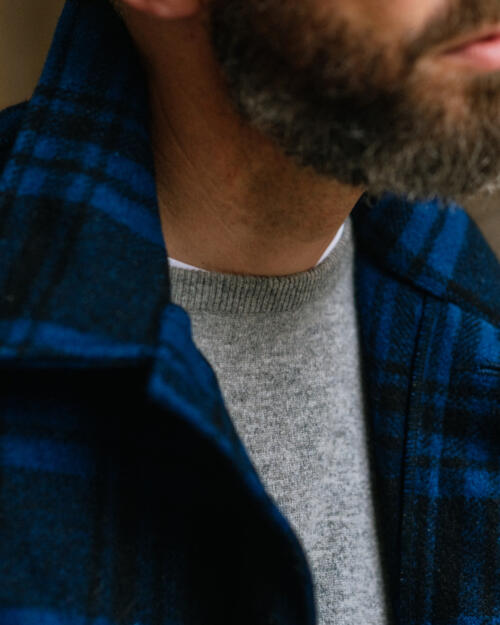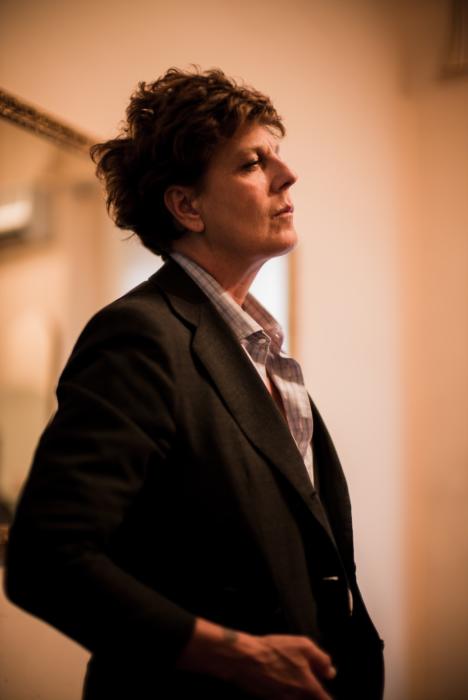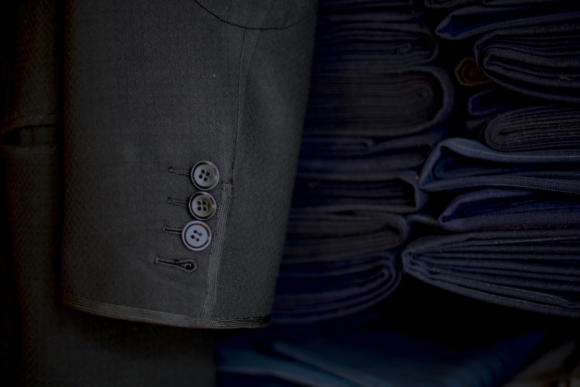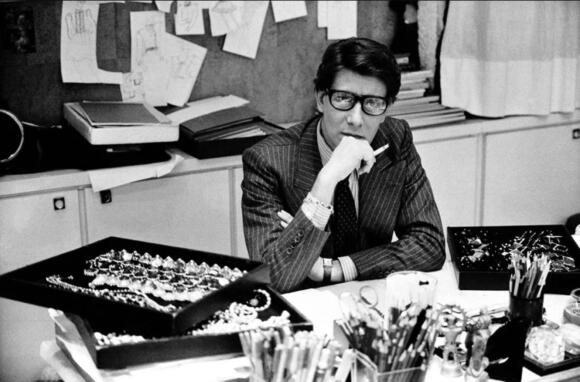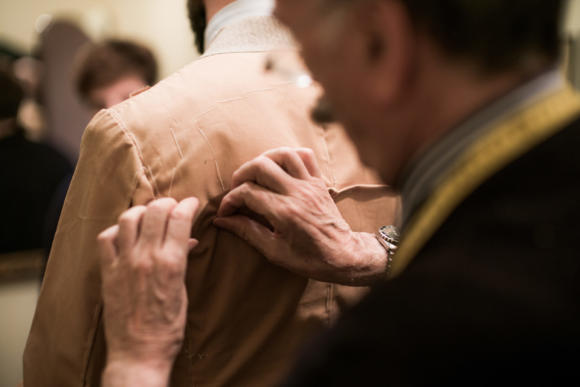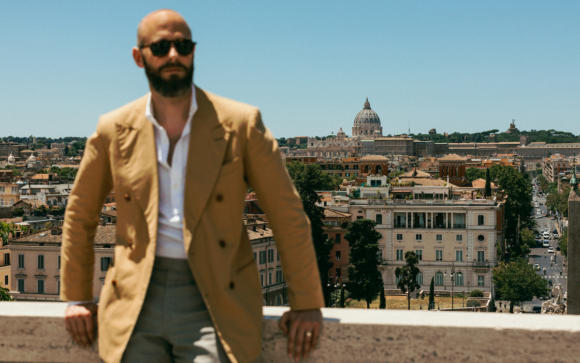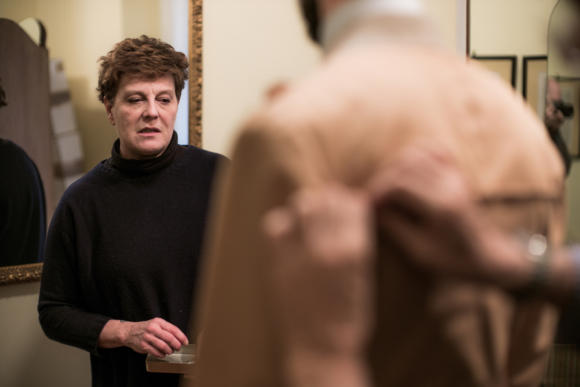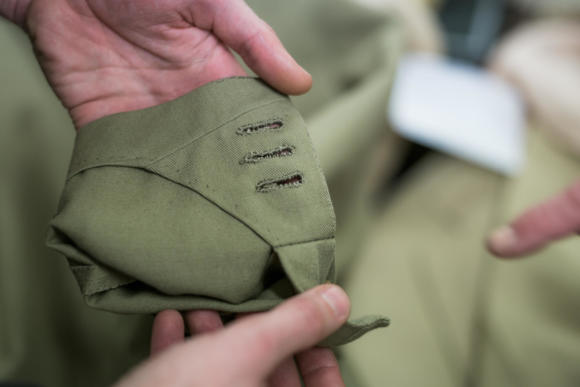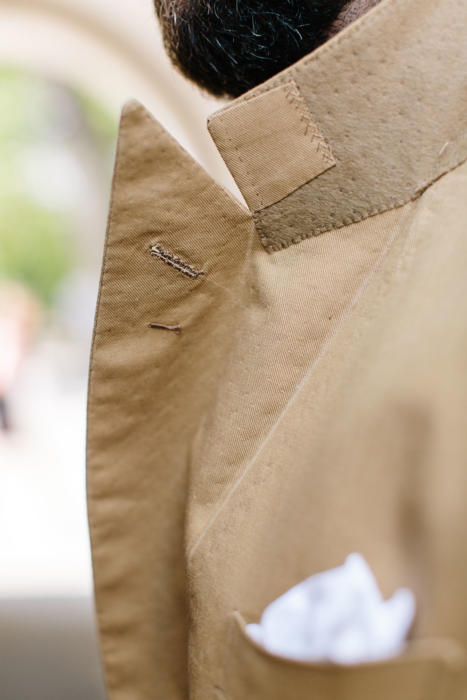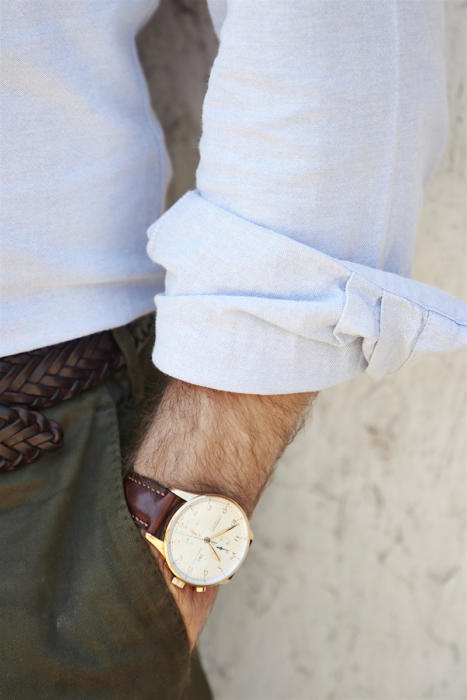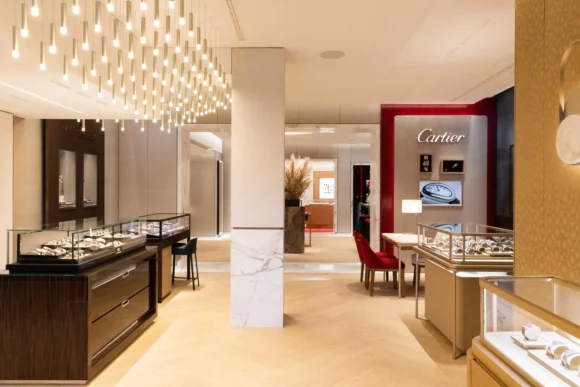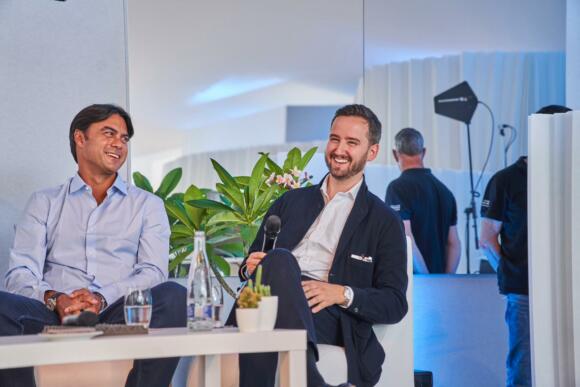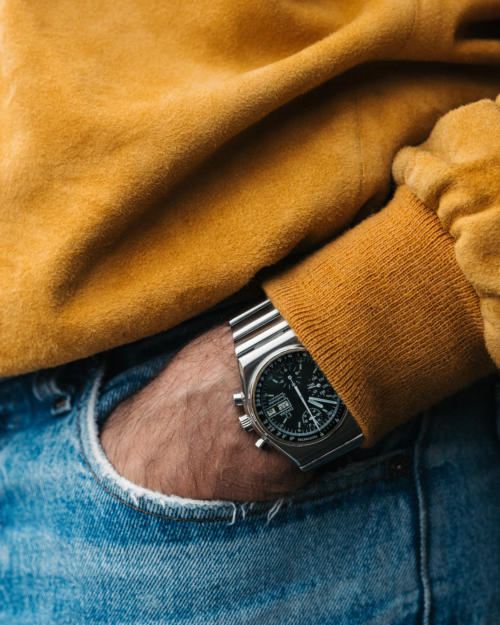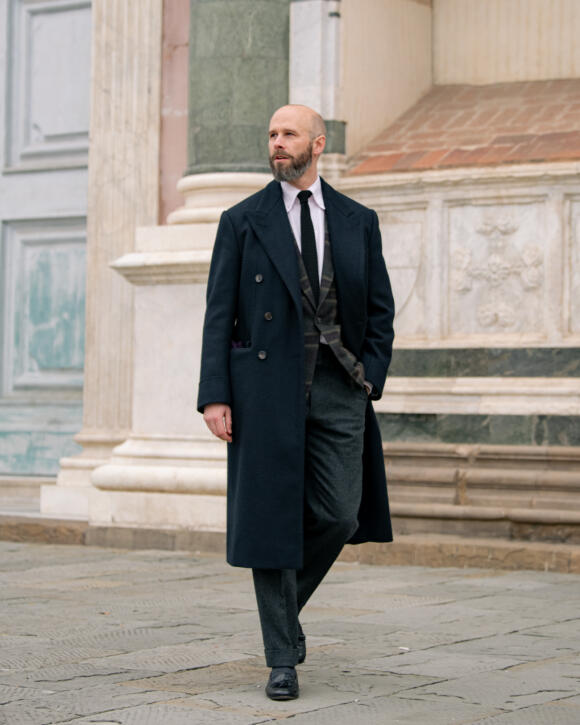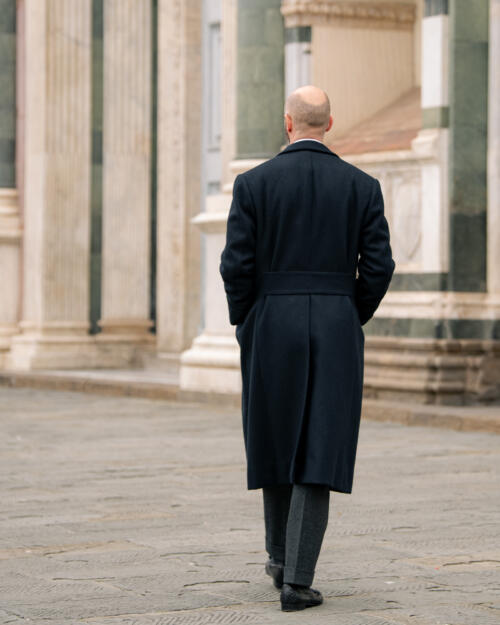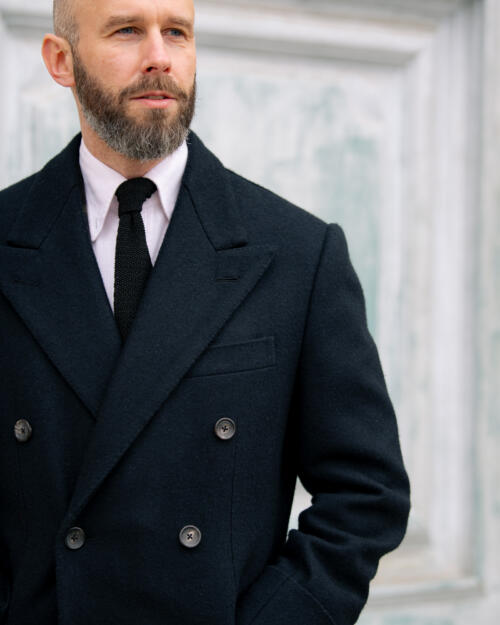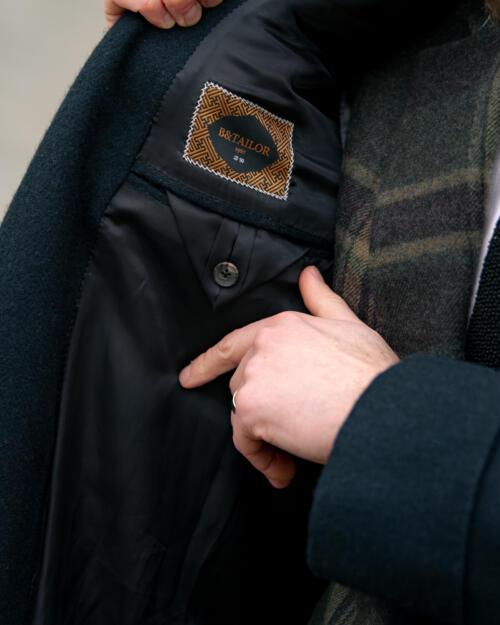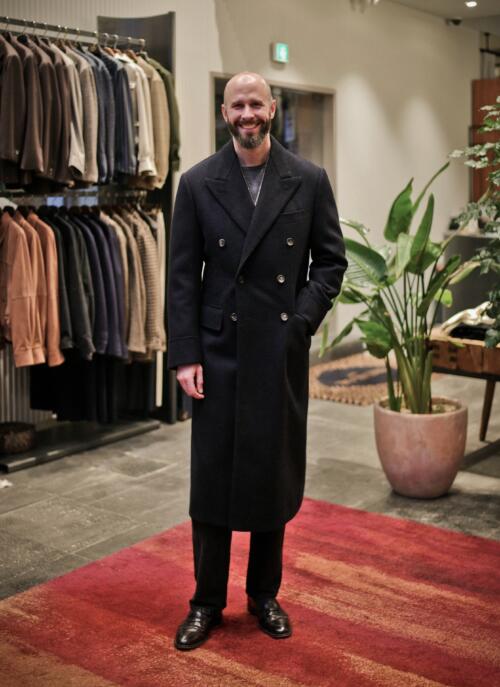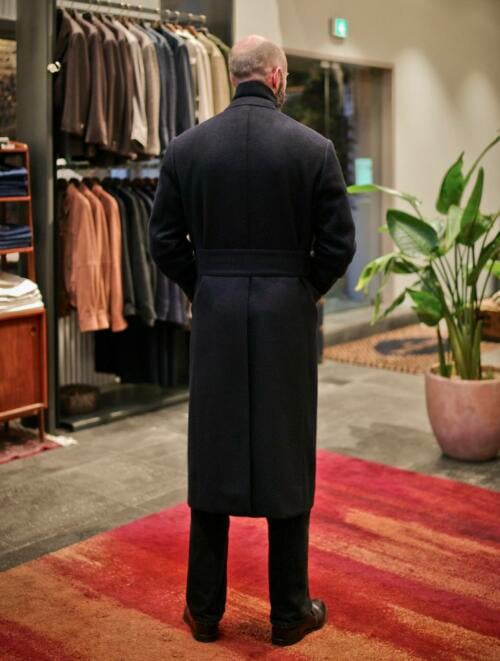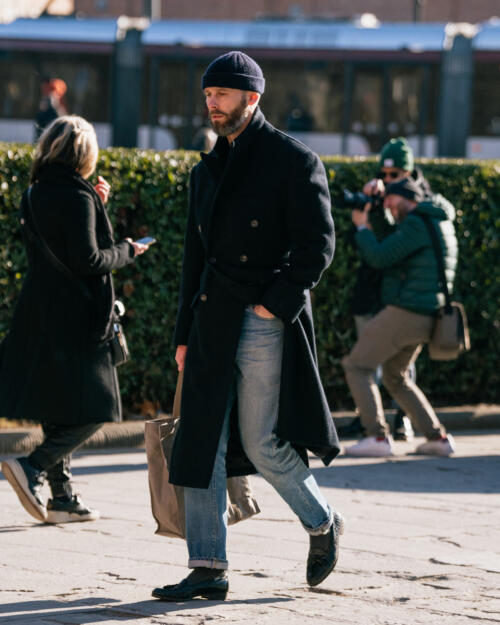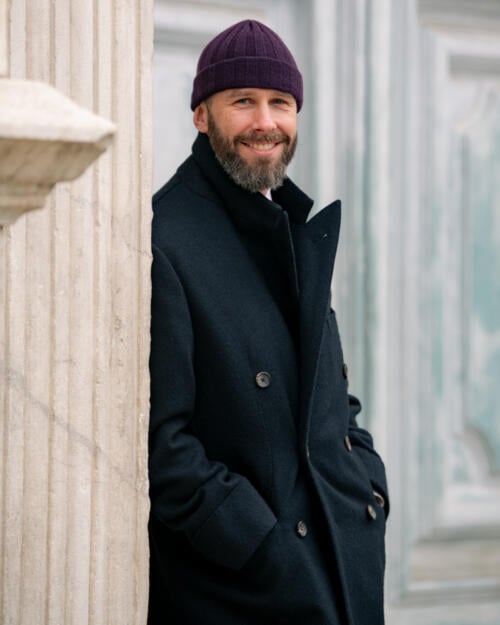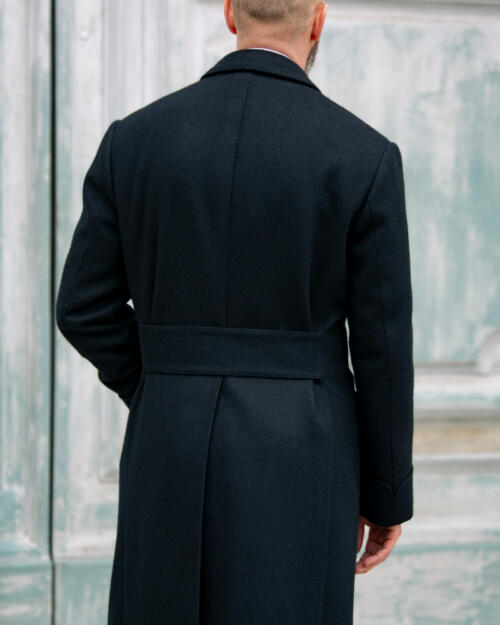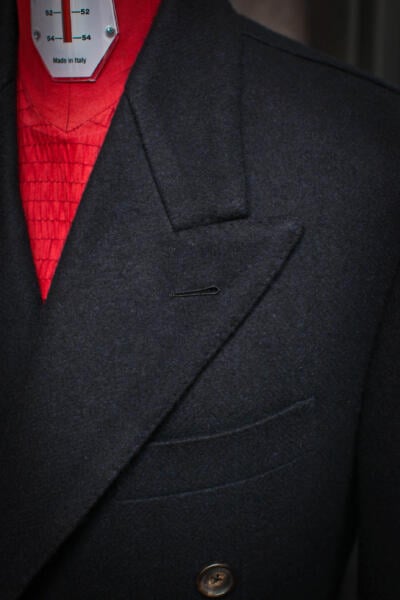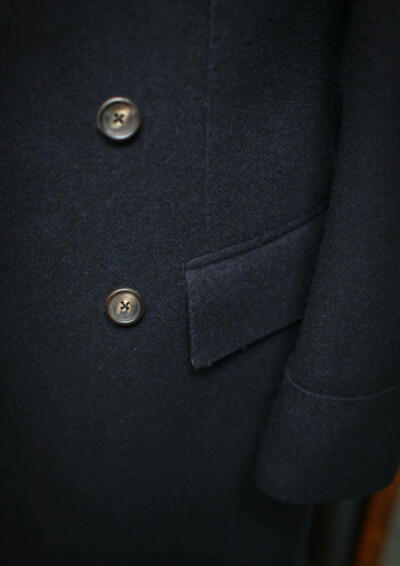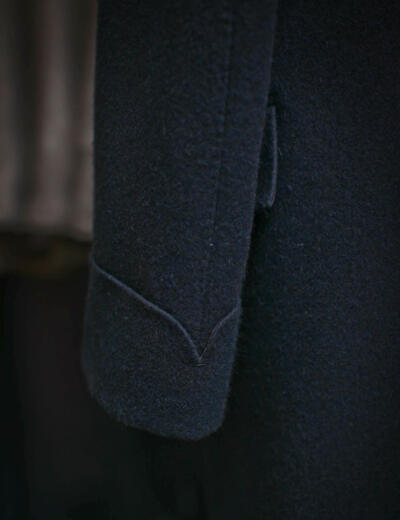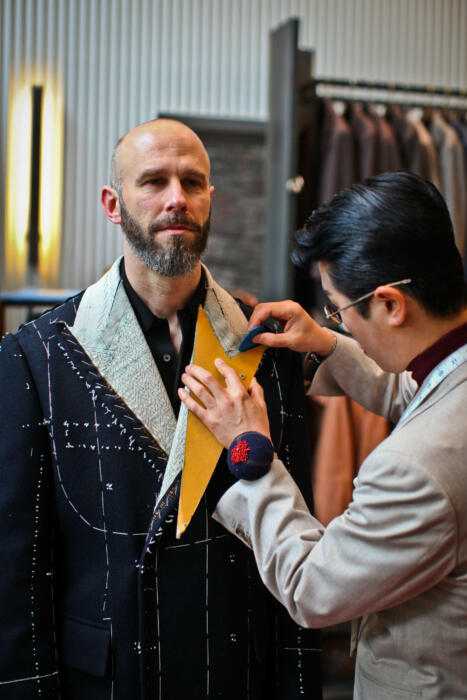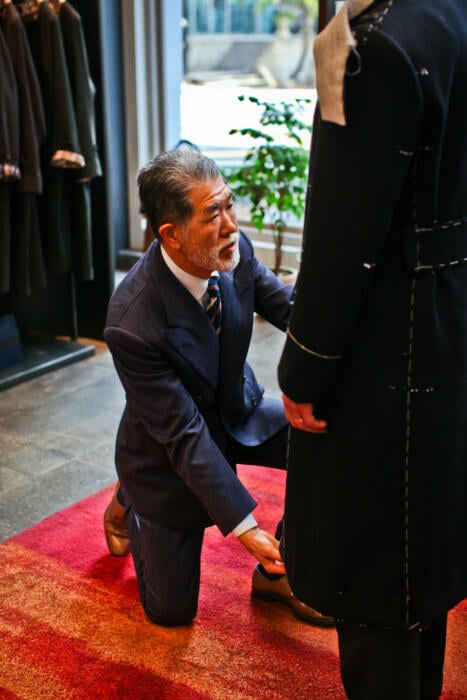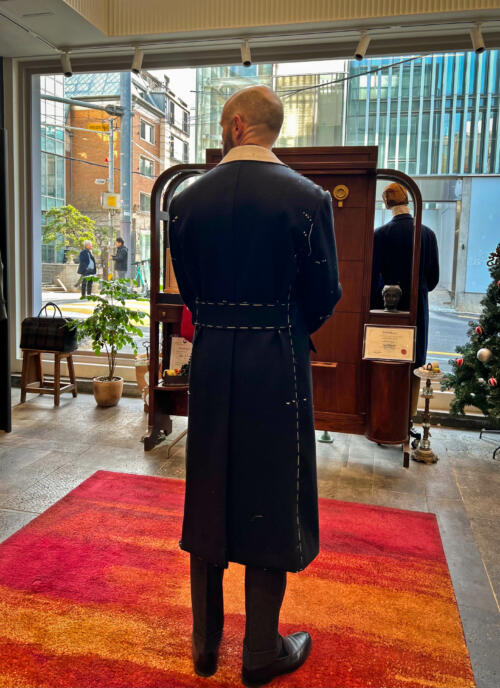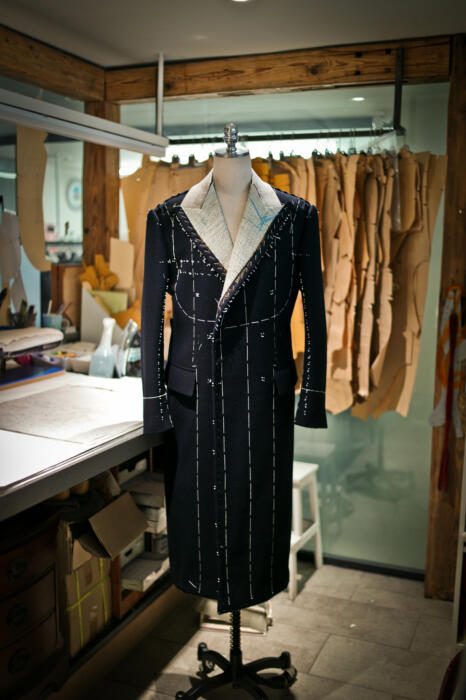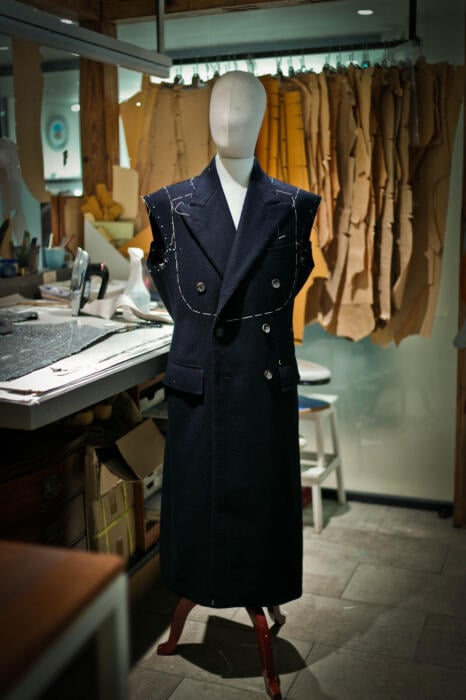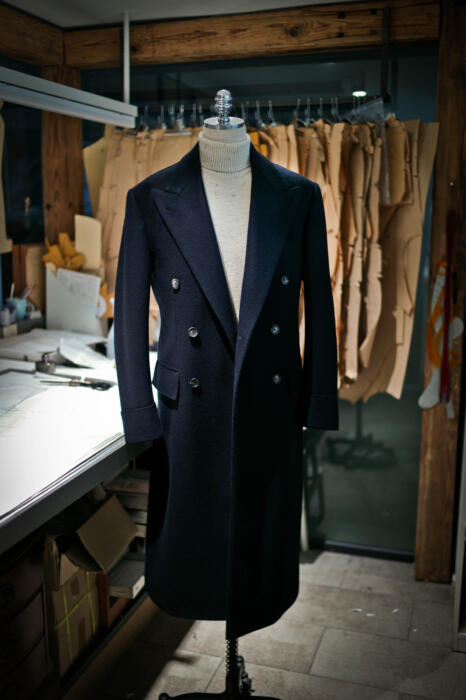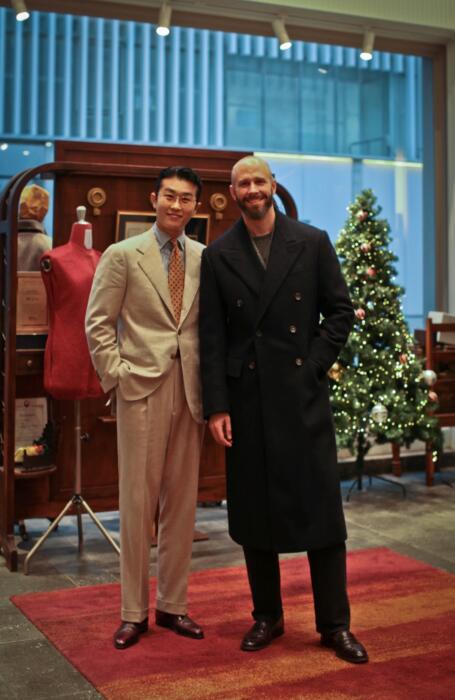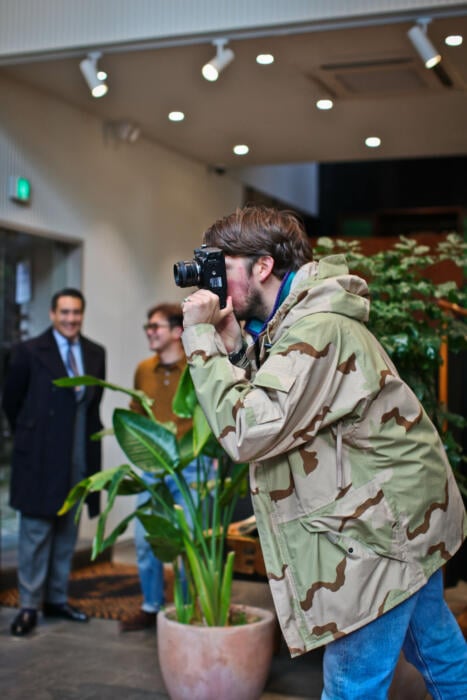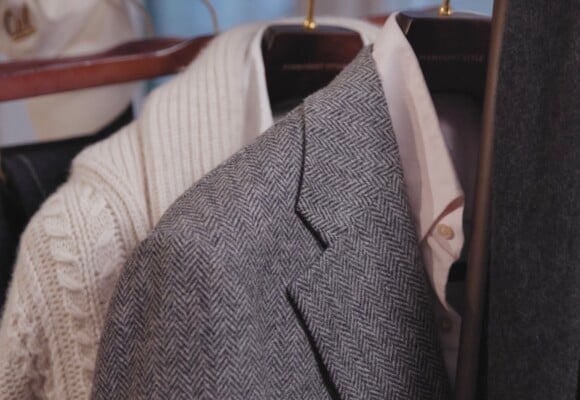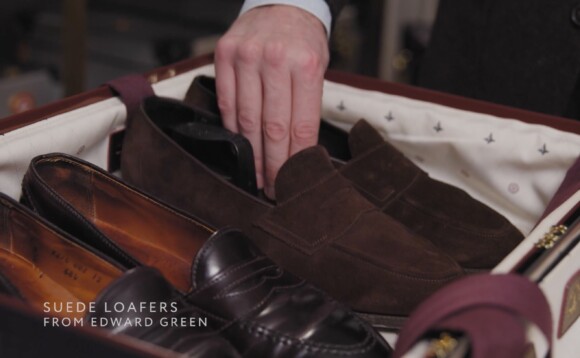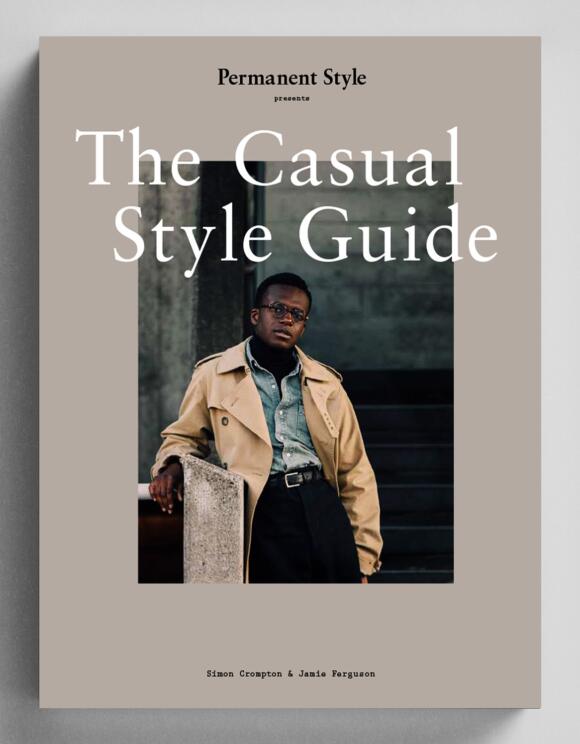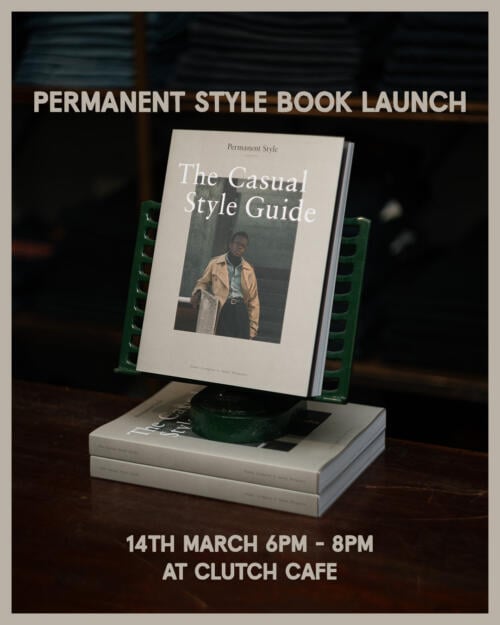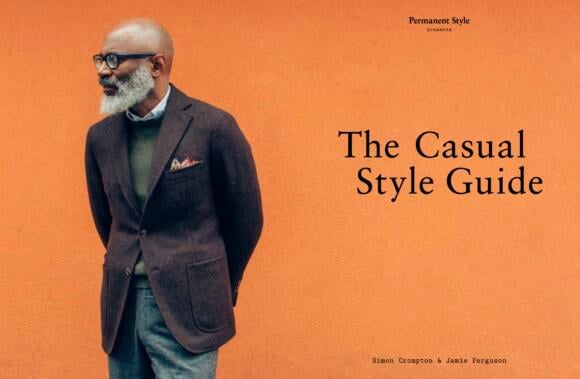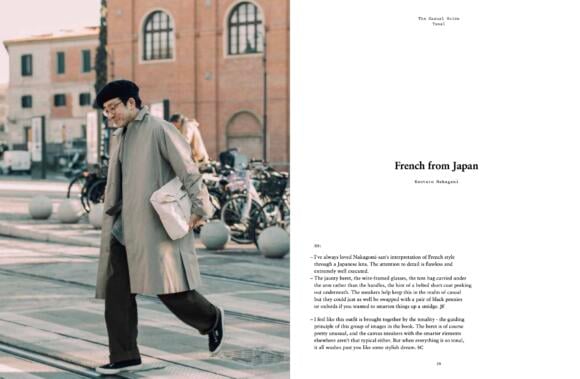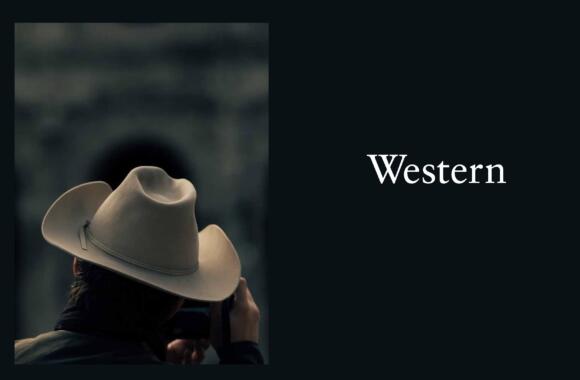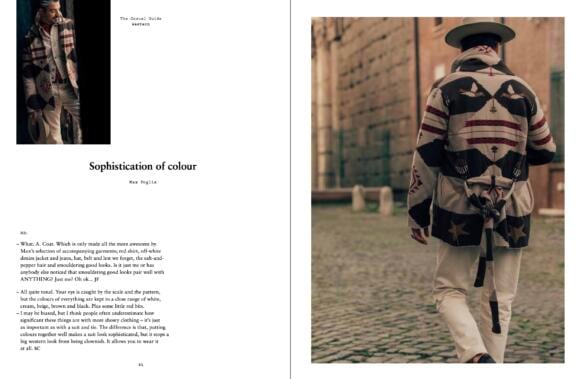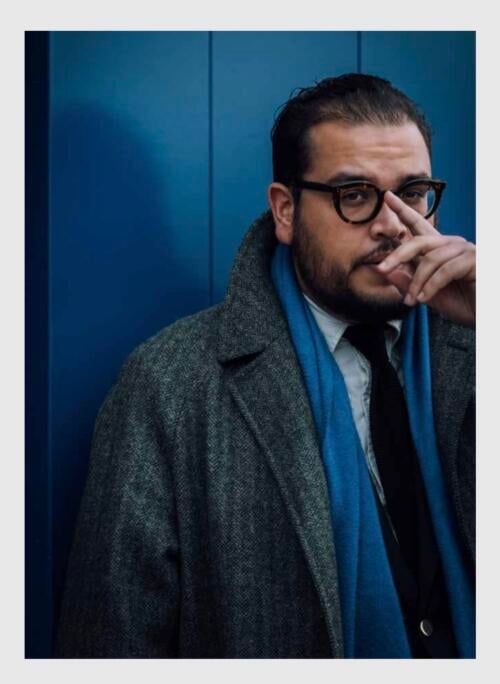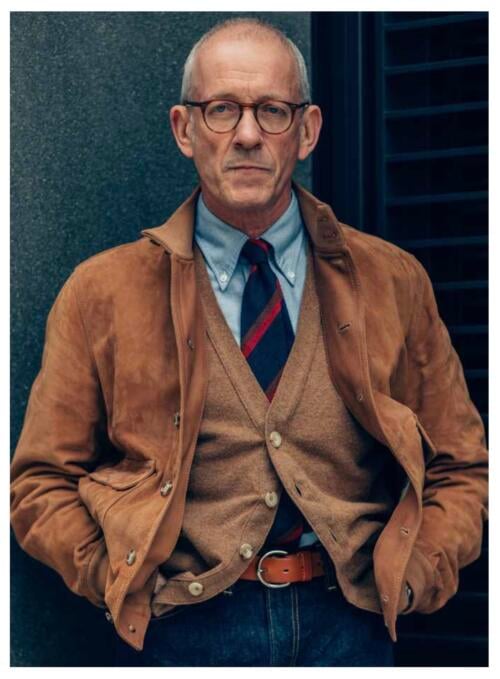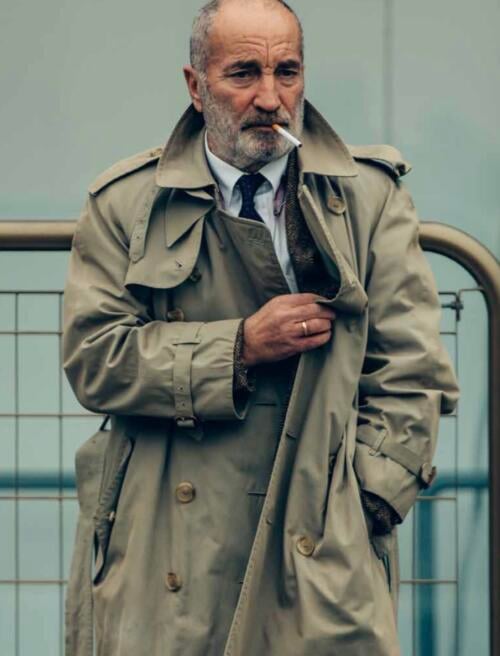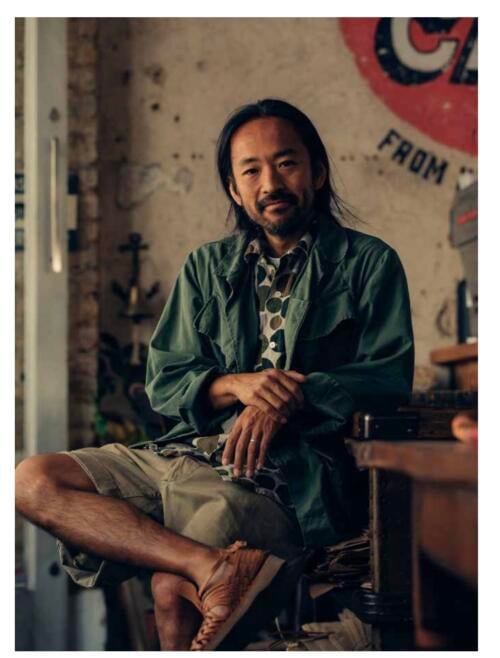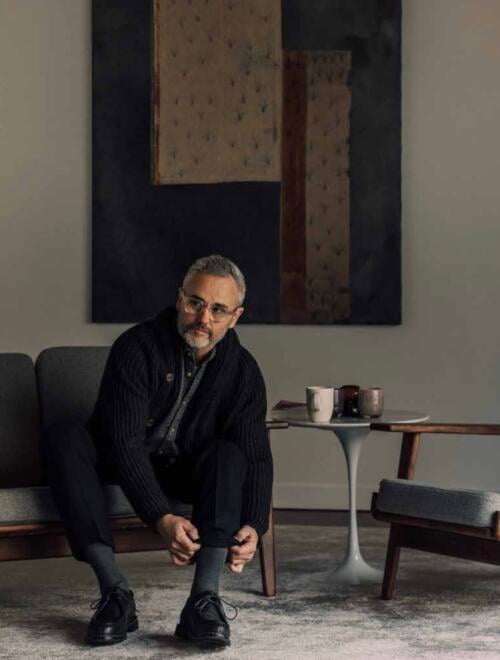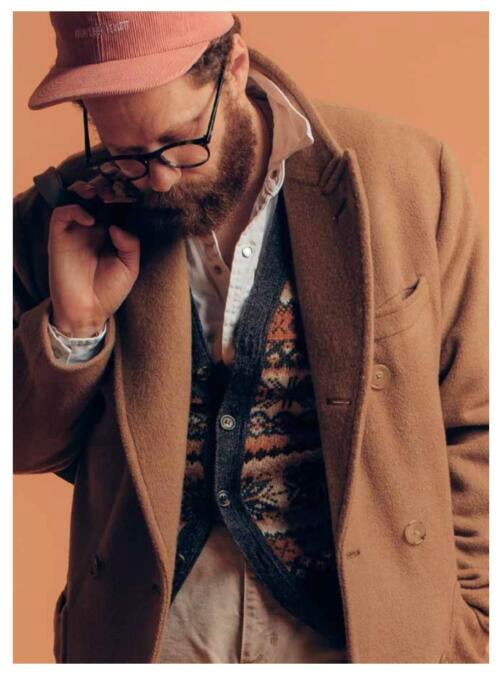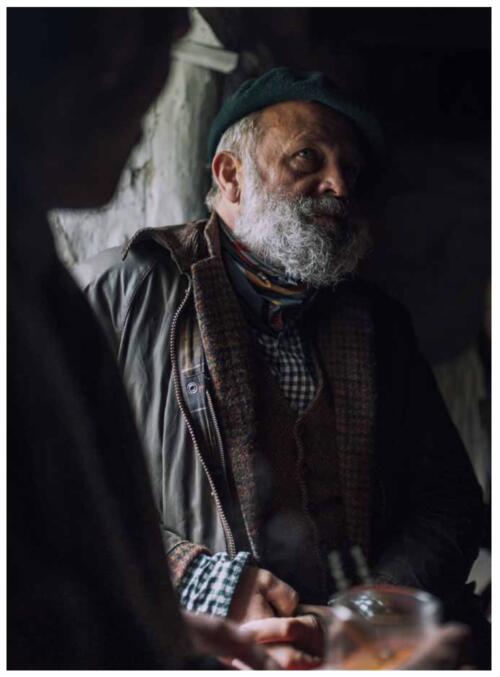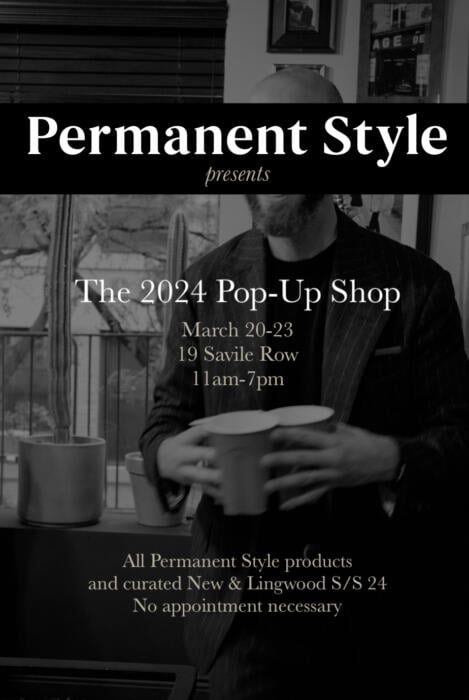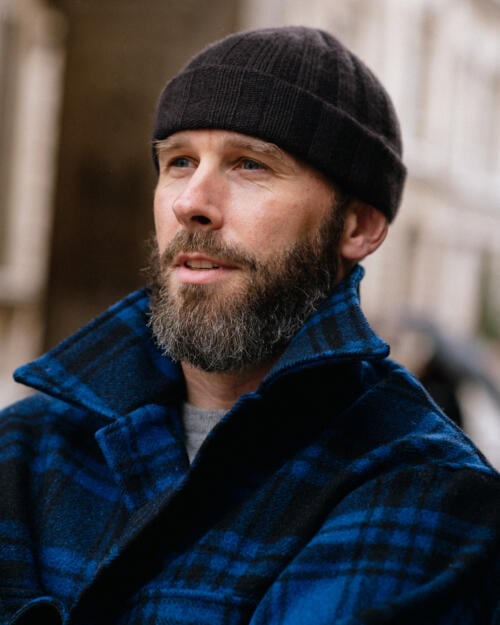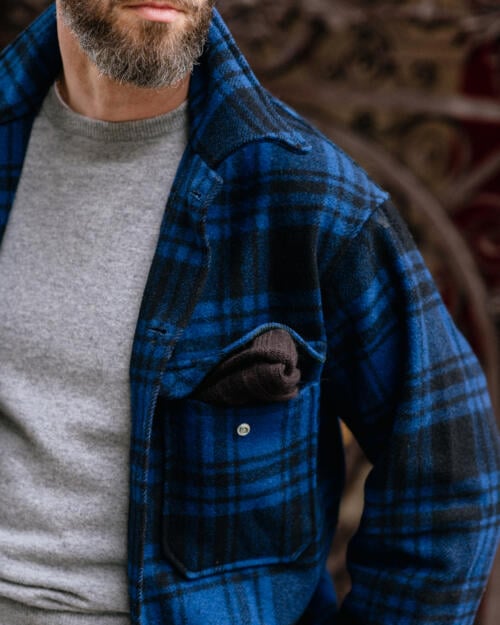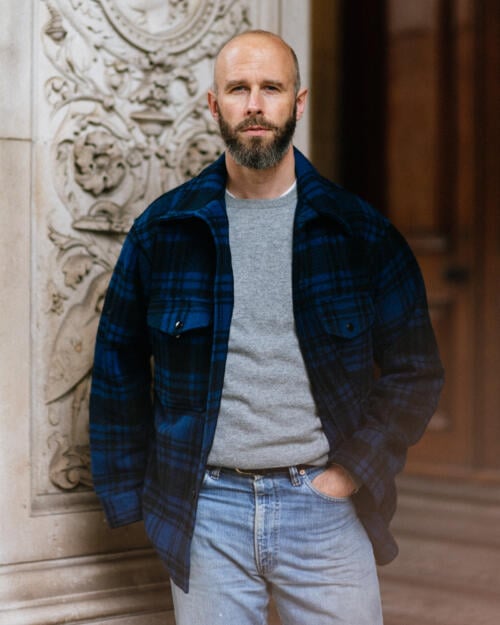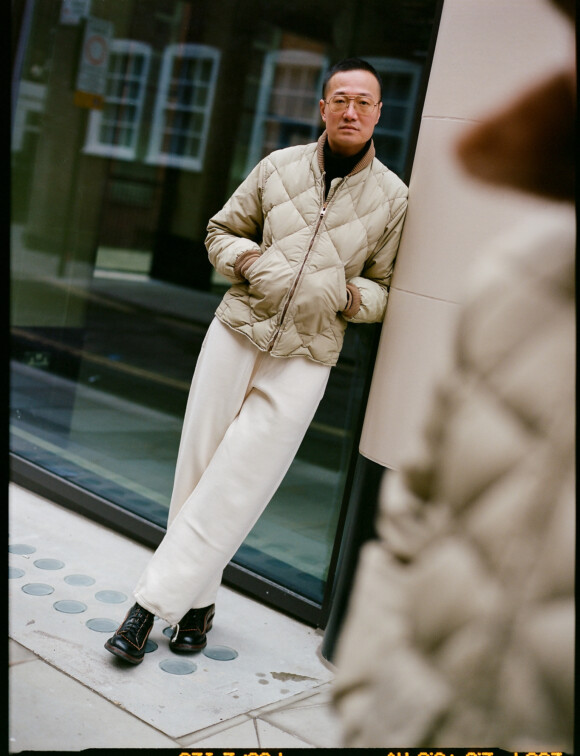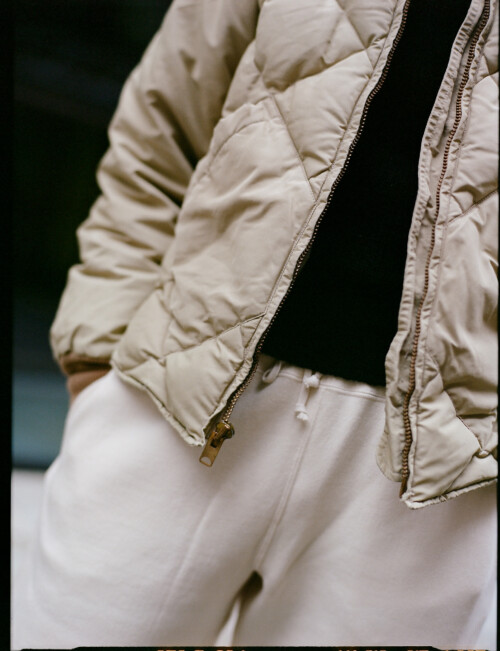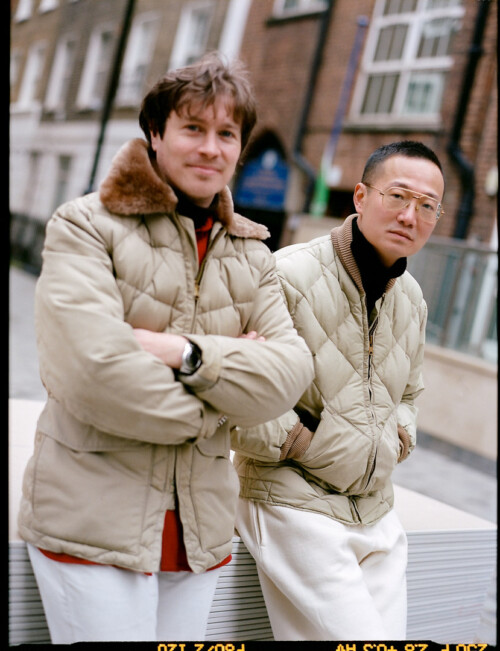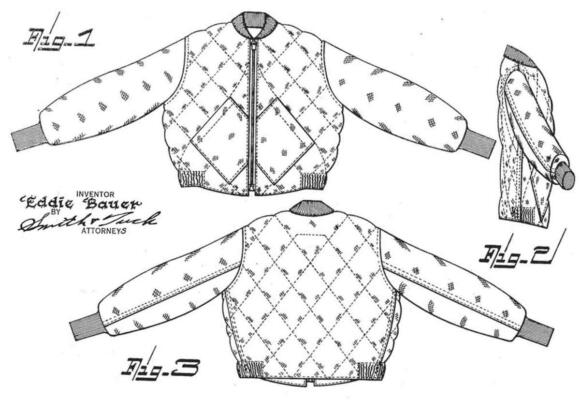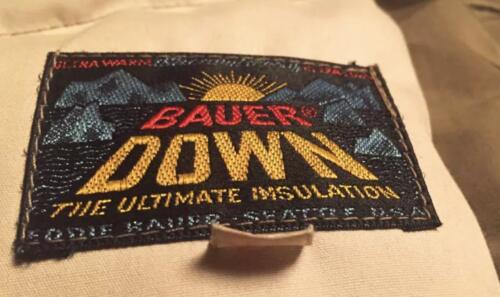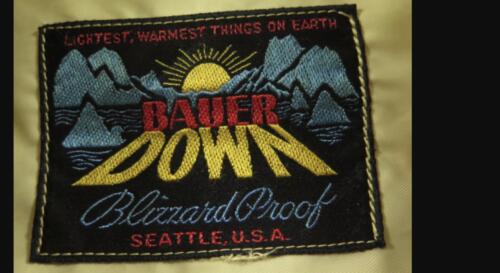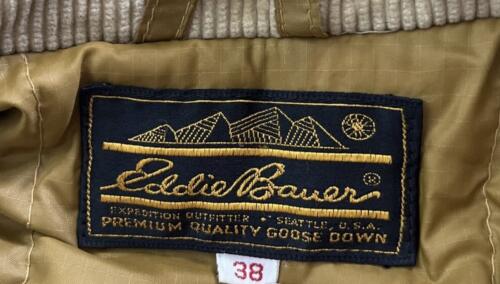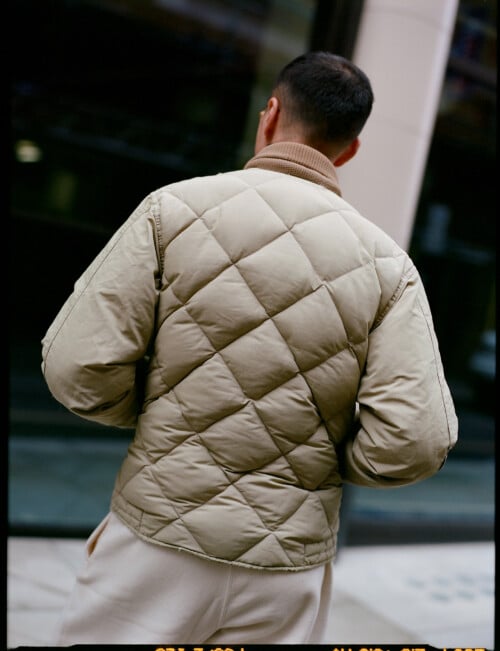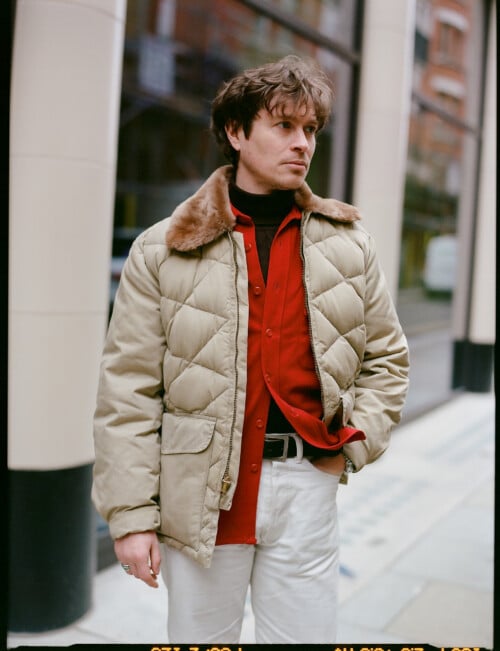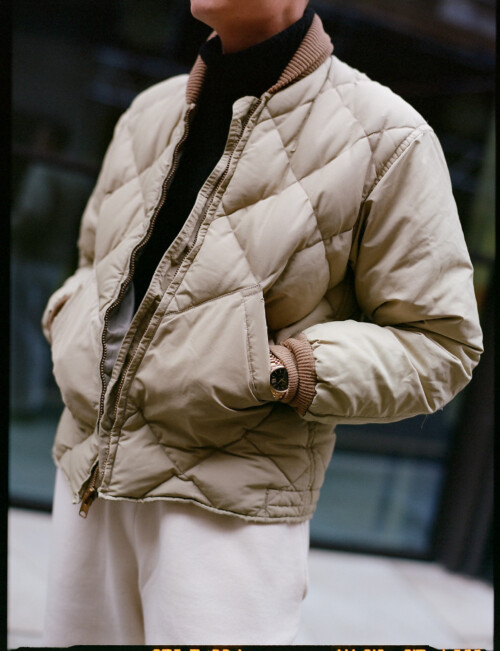Reader profile: Niyi
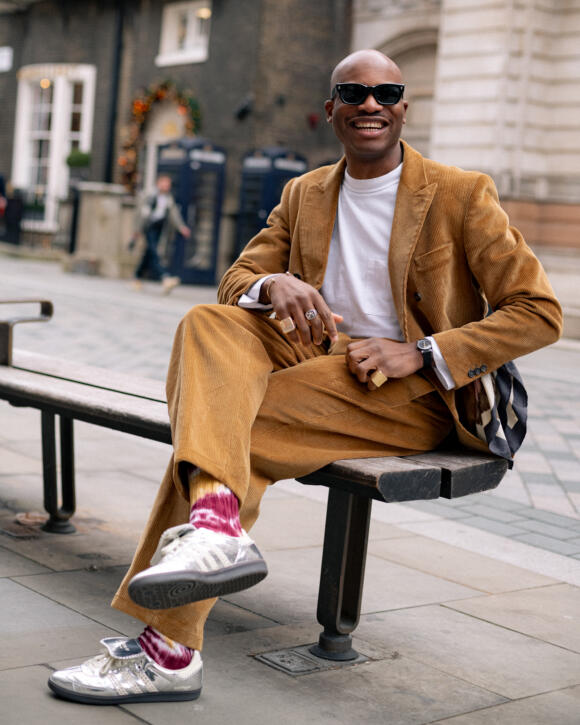
I’ve known Niyi for three or four years and he’s always someone I’ve learnt from. His style is eclectic: classic menswear brands alongside contemporary fashion, bursts of colour with subdued tones. Yet somehow he always finds a way to put them together and make it look effortless.
Niyi describes it as “sartorial chaos” and for him that’s a badge of honour. I know some of it will be different to what PS readers are used to, but I find it’s interesting unpacking the thoughts and tastes of a stylish person like Niyi, especially where clothes are concerned.
Outfit 1: All Black
- Coat – Versace
- Hat – Uniqlo
- Sunglasses – Cutler & Gross
- Shoes – Vass
- Scarf – Vintage Chanel
- Sweatshirt – Our Legacy x Armani
- Watch – Braun
- Jewellery - Rings are Mor London and vintage bracelet
What do you do for a living?
I’m a business analyst at a media company. I help the business connect with the customers. It’s a hybrid space - I work from home most of the time but do two days in the office.
How does that affect the way you dress, because I know you as a man of “sartorial chaos”. Do they allow chaos in the workplace?
Luckily, they do! I wouldn’t say it’s conservative, like not a finance environment, but it’s also not a fashion environment and I have experience working in both.
What was it like working in fashion? I’m sure that opened your eyes to a lot that you hadn’t noticed before.
Yeah, but I also find I’ve naturally dialled down my style since then. It wasn't a conscious decision, just a question of ‘where I am right now’. I just do what I want and dress the way I want, hence that term “sartorial chaos” of mine you mentioned. I like my colours, I dress how I want within the context of a space.
So within the context of this job, which is more casual, what I like is that I can take my time and be relaxed. When I was in finance in the past I felt there was so much emphasis on the way you dress, almost to the detriment of the customer.
So, this first outfit is your definition of looking ‘smart’ right? It’s clean, very slick.
Exactly. A lot of people when they think about dressing smart, they just default to a suit. But this outfit for me is my idea of smart. It’s as tailored as it is relaxed, and that’s it.
I find that if I do take the train to work (I mostly cycle), I’ll be dressed like a freaking jazz master - and I love that! That, for me, is feeling comfortable. People will be like, is he going to a jazz concert or is he going to work?
The trousers are a black military cavalry twill. I demand a hardiness in my clothes, and these have got it while still being smart. They were made by my one of faves in the game, Fred [Nieddu, of Taillour]. I can wear them with trainers, I can wear my Vass bluchers and it’s just like ugh! Great.
That coat though is a real statement. What is that ?
Vintage Versace. Cashmere with a half belt at the back. I got it from my vintage guy Waliou, this was one of the greatest pieces he ever found. He brought it out and was like, “you are the only one I know that can wear this”, because of the length and everything. I’m quite lucky to be 6”2’ - you gotta work with what you’re given!
What I’ve got under that is a meeting of modernity and tradition – a mock neck from the latest Armani/Our Legacy collaboration.
This is it. You mix the classics with fashion so well.
I have huge respect for tradition, for the masters. There was a way that Versace used to cut jackets that is just *snaps fingers*. It was big but still looked good, which is testament to how well tailoring was done in those days
As long as your body can fill the approximate silhouette it looks beautiful. The worst thing that can happen is that it drapes, and that’s hardly the worst thing in the world.
Same goes for the trousers. This is the beauty of Fred, he respects both tradition and modernity. Look at the way he dresses – he wears the classics, but also some of the most contemporary stuff out there. Like white Margielas. Before they became a thing.
I have a real respect for that because these are people that aren’t afraid. What I dislike is when I see that perfect traditional stuff. Fine for other people, but it feels too much for me. I can’t do anything about the time I live in, and there’s great stuff being made right now.
Outfit 2
- Suit – Noah
- Shoes – Adidas x Wales Bonner
- T-shirt – Albam
- Scarf – Vintage Celine
- Belt – Vintage
- Socks – Isabel Marant
This must be one of my favourite combinations of yours, but let’s start with the shoes - you sometimes refer to them as your ‘silver surfers’.
Fun fact, my favourite superhero is the Silver Surfer. The Sambas are again tradition meeting modernity. Wales Bonner draws from the past and infuses it with something contemporary. Like the silver?
Love it. That Noah cord suit is pretty nice too. What led you to it? It’s an unusual place to get a suit for most PS readers.
There are so many places you can get a suit, but a skate shop doing tailoring? I just find that interesting. When Noah first brought them out, they wanted it to be a Pick ’n’ Mix situation. Rather than have the suit all in one colour, they wanted you to purposefully mix it up. That’s down to Brendon Babenzien’s vision.
I love a good double breasted. My proportions are quite broad so I like how DBs flatter me. I could easily wear a DB with a shirt and tie and look like a Kray Twin, but where’s the fun in that? That’s the default! I want to put the clothes through their paces MY way and put my own spin on them.
That’s where people can get style wrong I think - they’re not trying to infuse their clothes with who they are.
How long have you had this suit for, because you can’t find this kind of thing from Noah at the moment. Believe me, I’ve tried.
I’ve had it for eight or nine years. The aim is always to own great pieces for a while - they should be used, be worn. I don’t like this age where we treat clothing like glass. Even if it’s silk. Run it. Run it through its paces. The more you wear it the more you look like a sexy rascal.
A sexy rascal? Why do you want to look like a rascal?
Louche maybe is the word. To be louche, to be free. I leave the house wearing a corduroy suit, and at the end of the day I’m still wearing one - it might just be rather crumpled. Shows that I’m living life you know.
Outfit 3
- Trousers – Vintage military
- Knit – Bryceland’s
- Shirt – Muji
- Shoes – Yuketen
- Sunglasses – Cutler & Gross Scarf – Vintage Celine
Lets talk horsebit loafers – I’ve seen you in a few pairs, even seen you at night dancing in a pair of Guccis
I do love my horsebits. In fact more than horsebits, I just love loafers. It goes back to that relaxed mindset. There’s nothing like slipping in, getting on your bike, doing what you gotta do.
In fact, one of the first things I do when I get a pair of shoes like this is go straight to the cobblers and get some rubber half soles, so I can cycle in them. Yuketen are made to be worn over time, they’re not made flimsy.
So I wear them to the club, but when I get home, I brush them and then if I need to go to a party or bar mitzvah I’ll rock them again.
You’ve got quite a bit of vintage right - does that go back to the point about respect for tradition?
Yeah, I estimate that my wardrobe is 50 or 60% vintage, especially when it comes to trousers and jackets.
That’s where the Bryceland’s knit comes in, the cut is traditional, based on an old block nice and cropped. But then the yellow is just… rambunctious.
Accessories are important with you, and every outfit seems to have a different print scarf, either tied around your neck or sticking out of a pocket. Where’d that tendency come from?
I love print, but more than that I love the size of the silk scarfs. Large and efficient coverage against the cold, and they don’t leave fluff on you. And did I mention the prints?
You always seem to be in sunglasses too - why?
Sunglasses are a funny one, that was a 180 moment for me. I never used to wear them, it was the same attitude as my social media – I rarely leave it on private because I’m an open person. What you see is what you get.
Anyway, I went to the doctor and the doctor said to me, “Oh you’re going to have to start wearing sunglasses because you’ve got a sunspot in your eye” I was like “Bro, I don’t need this… OK fair enough.” So, I started trying to wear shades more in the summer.
Unfortunately, I use contacts as well and because I’m always on the bike what happens is my eyes get dry quickly with the wind, so I frequently wear my tinted sunglasses even at night. It’s inadvertently turned into a fashion statement, but ultimately, I’m comfortable with it.
And these particular ones - I’ve been on for a pair of jazz-black glasses for a while: dark dark, I’m talking Thelonious Monk. Real black. God bless Cutler & Gross. And they’re well made, they have a real weight to them.
Niyi, chale*, as always this has been fun. Thank you!
*Ghanaian slang for my friend/mate/dude


